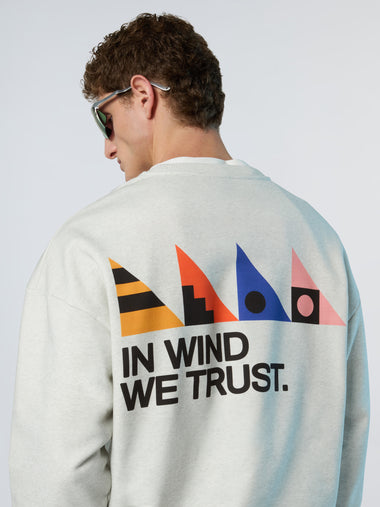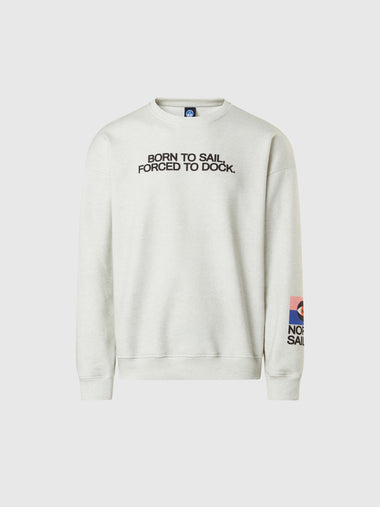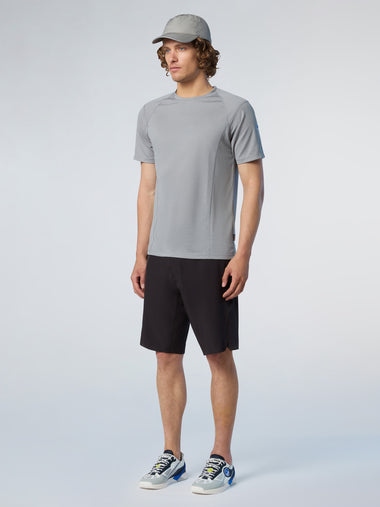NORTH SAILS BLOG
Alle
Events
Guides
News
People
Podcast
Sustainability
Tech & Innovation
Travel & Adventure
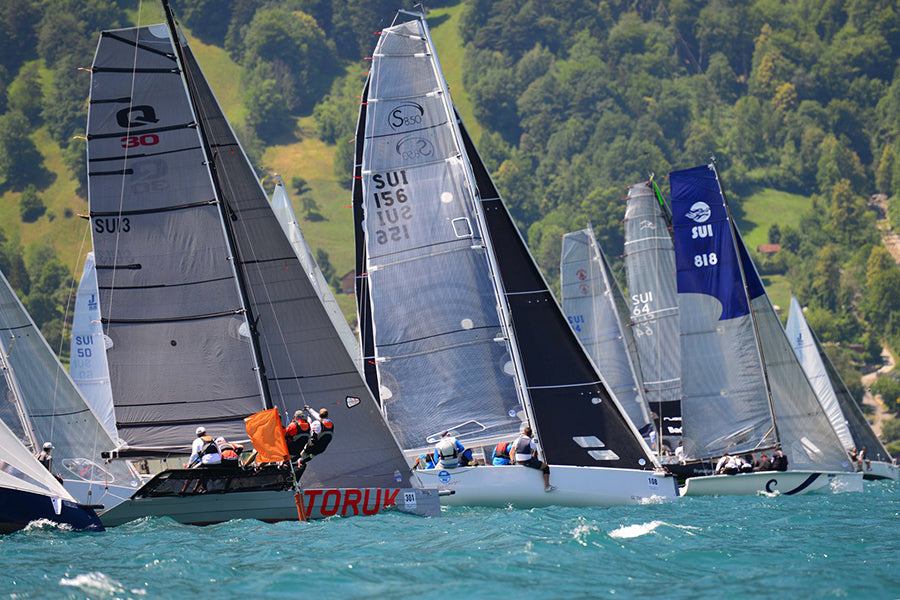
SIEG AM URISTIER-CUP 2018
SIEG AM URISTIER-CUP 2018
38 Boote (darunter 4 Esse 850) trafen sich am Samstag, 30. Juni 18 um 12.30 h Höhe Tellsplatte zum Start des legendären Uristier Cups, der zum ersten Mal vom Regattaverein Brunnen durchgeführt wurde.
Das Ganze fand bei traumhaftem Segelwetter mit Sonne satt, bis 27 Grad und 25 Knoten Wind statt…
Wie immer lagen Start und Ziel im unteren Drittel des Kurses. D.h. nach dem Start gab es eine lange Kreuz, gefolgt von einem sehr langen Downwind und am Schluss eine kurze Kreuz ins Ziel. Gestartet wurde in zwei Gruppen, Racer und Cruiser.
Samstag
Der RVB Brunnen schaffte es, am Samstag drei anspruchsvolle Wettfahrten durchzuführen. Auch bei Windspitzen bis 25 Knoten half es, wenn man den Urnersee und seine Eigenheiten genau kannte.
Auf der Esse 850 ‚sail NORTH‘ waren wir in einer neuen Formation unterwegs: Daniel Schroff an der Pinne, vorne Roman Juchli und Claudia Böhm. Somit segelten wir ohne grosse Erwartungen. Die Lockerheit, der guten Bootsspeed und die guten Revierkenntnisse von Daniel Schroff liessen uns am Samstag alle drei Läufe für uns entscheiden. Am Abend kam aber im Clubhaus die Bestätigung: Wir hatten im dritten Lauf einen Frühstart und damit wohl den Streicher bereits eingezogen.
Sonntag
Mit dem kleinen Rucksack vom Vortag (Frühstart) galt es heute, noch einmal die Lockerheit vom Vortag zu finden. Im ersten Lauf rundeten wir als dritte das Luvfass. Auf dem Vorwind konnten wir aber alles wieder gut machen und kreuzten schlussendlich die Ziellinie wieder als erste. Mit den Rängen 1, 1, 2 war auch der Sonntag äusserst erfolgreich für das Team SUI-156. Einzig im letzen Lauf mussten wir uns berechnet von der Esse 750 schlagen lassen, da die hinteren Boote mit Wind angerauscht kamen.
So klar wie das Resultat aussieht, war es aber nicht.
In jeder Wettfahrt wurden wir von den anderen Esse's gefordert. Nur durch den Fact, dass es nicht immer die gleiche Esse war, erscheint das Resultat so klar.
Wir sind auf jeden Fall mit unserem Bootspeed (gesegelt sind wir mit einem 3DL Grosssegel und einer 3Di Fock) und der Crew-Leistung zufrieden.
Fazit:
Ein schöner Anlass, der vom RVB super (notfallmässig) organisiert wurde – ein grosses DANKE dafür!
Und der Urnersee ist und bleibt eines der schönsten Segelgebiete der Schweiz!
Leider gab es am Sonntag noch ein paar Schäden. Wir drücken die Daumen, dass die Schiffe für Malcesine wieder fit sind!
Resultate
READ MORE
READ MORE
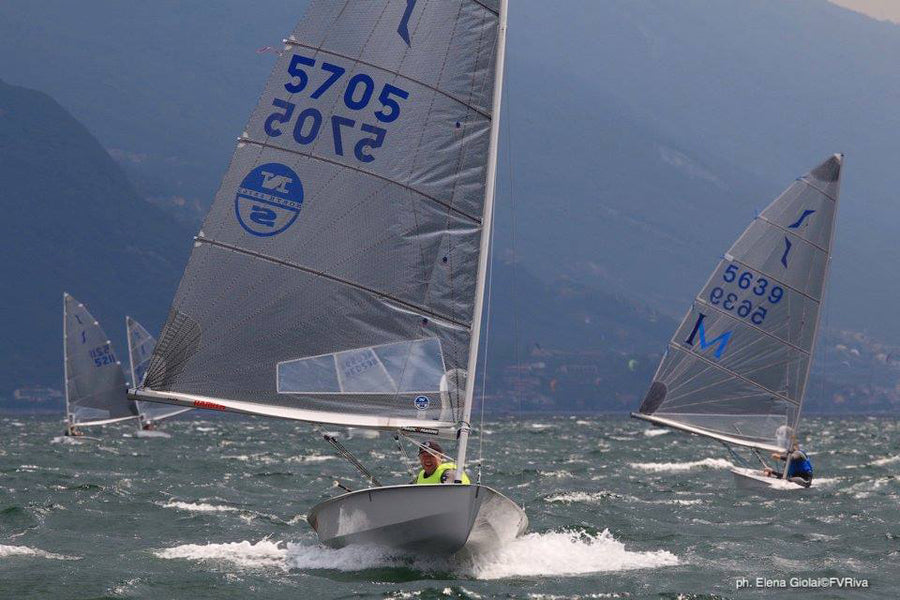
SOLO NATIONS CUP 2018
SOLO NATIONS CUP 2018
North Sails expert Charlie Cumbley takes the victory with near-straight bullets
Charlie Cumbley has won the 2018 Solo Nations cup in Lake Garda, carrying eight first-places on his scoreboard out of 10 races. The event saw forty-eight entries from the Netherlands and the UK come together for some spectacular racing in very testing conditions for most of the regatta, with only one light wind day.
Rounding off the podium in third place was Tim Law. Tim was tied on points with the second placed boat however due to count back took the bronze position. Charlie and Tim were both using the North P-2 Mainsail.
“The P-2 mainsail is a great all-purpose sail, it performed really well in both the light and heavy wind days” Charlie commented
The next event in the calendar for the Solo class is the UK Nationals in three weeks time in Hayling Island where ninety boats are currently entered. If you want to get your hands on this championship winning sail, contact your North Sails expert today.
Check out this video of Charlie racing!
Solo Nations Cup
1
/ Charlie Cumbley
3
/ Tim Law
6
/ Michael Hicks
8
/ Gareth Henshall
* Denotes Partial North Sails Inventory
Full results
READ MORE
READ MORE
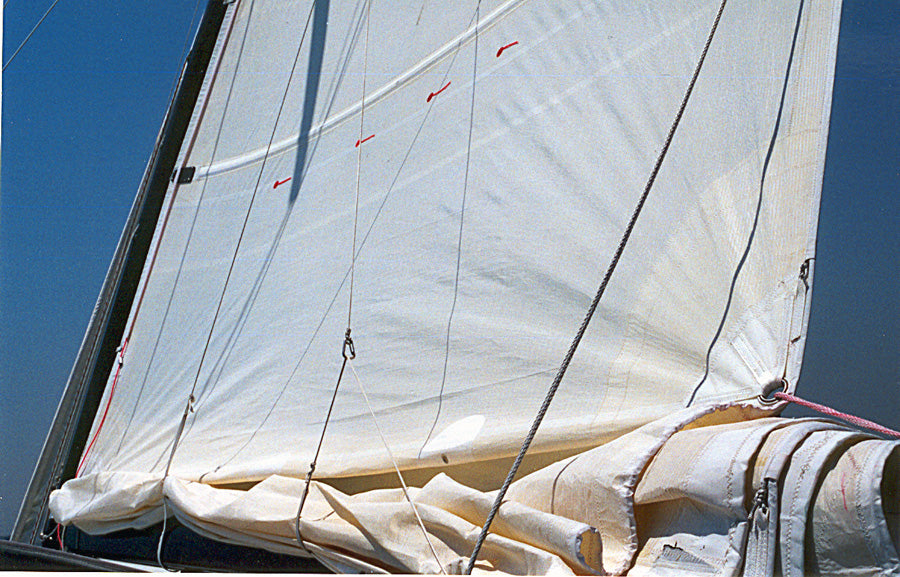
LES FACTEURS D’USURE D’UNE VOILE
LES FACTEURS D’USURE D’UNE VOILE
Note : Les photos sont disponibles dans le dossier « Fatigue du tissu ». Les quatre principales causes de vieillissement d’une voile sont : la flexion, la compression des fibres, le battement et le faseyement. Introduction : Quel que soit le matériau d’une voile, il finit par s’user. Mais en suivant quelques simples consignes d’entretien et d’utilisation, on peut considérablement augmenter la durée de vie d’une voile. Dan Néri, président-directeur général de North Sails, présente dans cet article les principaux facteurs d’usure des voiles. Il expose les problèmes structurels que ces facteurs entraînent dans les voiles et explique comment minimiser les dégâts.
Fatigue en flexion
Tout comme l’exposition aux UV lorsque l’on navigue par beau temps, la fatigue en flexion est inévitable, particulièrement dans le vent fort et la houle. Toute sollicitation sur la membrane qui implique un va-et-vient répétitif dégrade progressivement le matériau. Le battement des voiles pendant le hissage, l'affalage par vent fort, le roulage des voiles sur enrouleur ainsi que le battement pendant le virement de bord et la prise de ris sont à l’origine de la fatigue du matériau. Si les nerfs de chute ne sont pas correctement tendus dans un vent fort à modéré, les bords des voiles battront rapidement. Et dans des vents légers sur des angles de navigation abattus, les voiliers peuvent rouler assez violemment au point de faire claquer les voiles, entraînant alors une flexion du tissu et appliquant une certaine charge dynamique sur l’accastillage.
Pour éviter la fatigue en flexion :
Éliminer ou réduire le battement.
S’assurer que les nerfs de chute et de bordure sont correctement réglés pour éliminer le faseyement sur les bords de la voile.
Changer de cap dans des conditions légèrement clapoteuses pour réduire les battements.
Il est possible de diminuer les dommages causés par la prise de ris en pliant la voile en dessous du ris et en amenant le tissu du côté opposé à la bosse de ris.
Compression des fibres
Lorsque le tissu à voile est plié, une face du tissu est étirée et l'autre face (l'intérieur du pli) est comprimée. Les fibres comprimées vont alors se fragiliser petit à petit. Celles qui présentent la plus haute résistance à la contrainte, comme le carbone ou le Kevlar, se détérioreront encore plus facilement. Parfois, certaines fibres implosent, se désagrègent et se transforment en poudre. D'autres se brisent et se cisaillent longitudinalement à l’image d’une branche d'arbre verte qui se fracture lorsqu'elle est pliée en deux. Une fois que la fibre d’un tissu à voile se brise, sa structure intérieure est exposée aux UV. La fibre se dégrade par la suite et finit par se fissurer complètement dès la prochaine flexion.
Causes
Les causes les plus fréquentes de fatigue par compression des fibres sont le pliage de la voile au moment du stockage et lorsque la grand-voile est écrasée sous les bosses de ris. Quand vous pliez vos voiles de manière lâche avec les plis parallèles à la bordure, la voile n'est pas endommagée. En suivant cette même méthode de pliage pour ranger une grand-voile sur une bôme ou un foc de course dans son sac zippé de pleine longueur, les voiles resteront en bon état. Cependant, lorsque vous pliez une voile parallèlement à la bordure et que vous la repliez perpendiculairement à la bordure afin de la glisser dans un sac à voile standard, vous créez un pli marqué à 180 degrés et les fibres à l'intérieur du pli seront comprimées. Les fibres en polyester et en Spectra utilisées dans les tissus de voiles de croisière résisteront à des douzaines de cycles de pliage. Elles se fragiliseront légèrement à chaque usage. Lorsque vous rangez vos voiles dans un sac, il est préférable de ne pas répéter les plis aux mêmes endroits pour éviter de casser la fibre sur un pli déjà marqué.
Pour éviter les problèmes de compression des fibres :
Plier les voiles de manière lâche quand cela est possible.
Éviter de plier une voile sur le même pli lorsqu’on la range dans son sac.
Lorsqu’on arise une voile, amener le tissu du côté opposé à la bosse de ris.
Le battement
Lorsqu'on laisse une voile battre, c’est la chute qui sera nettement plus endommagée que le milieu de la voile ou le guindant. Imaginez un dompteur de lions qui fait claquer un grand fouet. Au niveau de la poignée du fouet, l’amplitude est moindre, mais plus on s'éloigne de la poignée, plus le fouet parcourt de la distance et plus il claque violemment quand il change de direction. Les fabricants de voiles ajoutent des renforts progressifs depuis le corps de la voile vers les zones épaisses de la chute. Ces renforts échelonnés permettent à la fois d'atténuer les effets de battement et de répartir la flexion de la fibre sur une plus grande surface. Vous pouvez réduire la fatigue de flexion en minimisant la durée et la force de battement de votre voile.
Grand-voile
Les grands-voiles sont soutenues par deux bords sur trois, et les lattes de pleine longueur permettent d’atténuer les battements au niveau de la chute qui, elle, n’est pas supportée. Dans un vent de moins de 25 nœuds, une grand-voile de croisière bien conçue avec des lattes de pleine longueur ne battra pas. Elle ondulera au moment du hissage ou de l’affalement. Une grand-voile avec des lattes courtes (aussi appelées « lattes de chute ») est plus ajustable et plus légère, mais elle se détériorera rapidement si on la laisse battre.
Voile d'avant
Les voiles d'avant ne sont supportées que sur un seul bord, et peuvent battre jusqu’à se rompre si on les laisse choquer. Par conséquent, un équipage de croisière doit être vigilant et effectuer les manœuvres et les réglages des voiles d’avant aussi efficacement que possible. Cela signifie que les écoutes des voiles d'avant doivent toujours être lovées et dégagées avant un virement de bord, un empannage ou un enroulement. C’est une procédure a minima et il serait également avisé de s’inspirer des équipages de régate même lors de simples balades en mer afin de minimiser les battements de la voile d'avant. (Pour plus d'informations, lisez Club Racing: How to Improve Your Tacks)
Pour réduire les battements :
Veiller à un réglage des voiles correct autant que possible.
Avancer suffisamment le point de tire de la voile d'avant pour contrôler la partie supérieure de la chute.
Utiliser un point de tire extérieur pour l’écoute de la voile d’avant pour les allures débridées et portantes.
Se préparer à virer avant de choquer complètement l’écoute de la voile d'avant.
Hisser la grand-voile sous le vent d’un relief par vent fort.
Abattre pour enrouler votre voile par les jours de grand vent.
Opter pour des lattes de pleine longueur lorsqu’on achète une nouvelle grand-voile.
Garder toujours les écoutes un tant soit peu bordées lorsque le bateau est momentanément à l’arrêt.
Enrouleur
Lorsqu'il faut enrouler la voile d'avant, les deux écoutes doivent être claires et la personne chargée de tirer sur la bosse d'enroulement doit se tenir en position pour la manœuvre. Si le système d’enroulement est actionné à l’aide d’un winch, il faut freiner un peu l’écoute pour minimiser l’amplitude des battements de voile. Si l'enroulement s’effectue sans winch, les écoutes doivent être choquées suffisamment pour que la manœuvre soit le plus rapide possible. Chaque fois que vous le pouvez, positionnez le bateau au vent arrière avant d'enrouler la voile. La force du vent apparent est réduite d'environ 1,5 fois la vitesse du bateau et la voile d'avant peut être partiellement déventée derrière la grand-voile.
Faseyement
Le faseyement de la chute ou de la bordure est un battement d’amplitude moindre. Quand il n’y a que le bord d'une voile qui faseye, il y a moins de surface de voile en mouvement, mais la fréquence est significativement plus élevée. Aussi parce que le faseyement d’une chute ou d’une bordure ne secoue pas le bateau, cela peut passer facilement inaperçu. Mais ne pas s’en rendre compte ou l’ignorer n’élimine pas le faseyement pour autant. Ce dernier continue son travail de sabotage et détériore les fibres. Si l’on y ajoute les effets néfastes des rayons UV, la chute ou la bordure finiront par céder.
Après de nombreuses heures de faseyement, le tissu le long de la chute a enduré des milliers de battements, compressant alors les fibres à chaque fois au même endroit. Si l’on y ajoute les effets délétères du soleil, la voile finira par se déchirer le long du gallon.
Le faseyement de la chute est provoqué par un écoulement d’air instable sur le bord de fuite de la voile. Si l'air s’échappe plutôt rapidement du bord de fuite, la force de l’écoulement d'air fléchira le bord non supporté (bord de fuite). Cette déflexion provoquera une dépression, et le tissu reviendra à sa position initiale ; le cycle se répétera, et ainsi de suite. Le bord faseyant claque à la manière d’un jeu de cartes que l’on mélange à l’américaine. Considérez ce claquement comme un signal pour border le nerf de chute. Les navigants en compétition apprennent à tendre le nerf de chute le moins possible pour éviter le béquet de chute. En croisière, les marins peuvent utiliser la même approche, mais il est préférable de trop tendre le nerf de chute plutôt que pas assez, excepté dans le vent très léger. En effet, mieux vaut avoir un léger béquet de chute qu'une chute déchirée.
Pour contrôler le faseyement de la chute :
Régler le point de tire de foc ou le chariot de grand-voile de façon que l'angle de tire soit dans l’axe de la chute.
Tendre correctement les nerfs de chute.
Extrait de : Guide complet d'entretien et de réparation des voiles, Dan Néri.
READ MORE
READ MORE
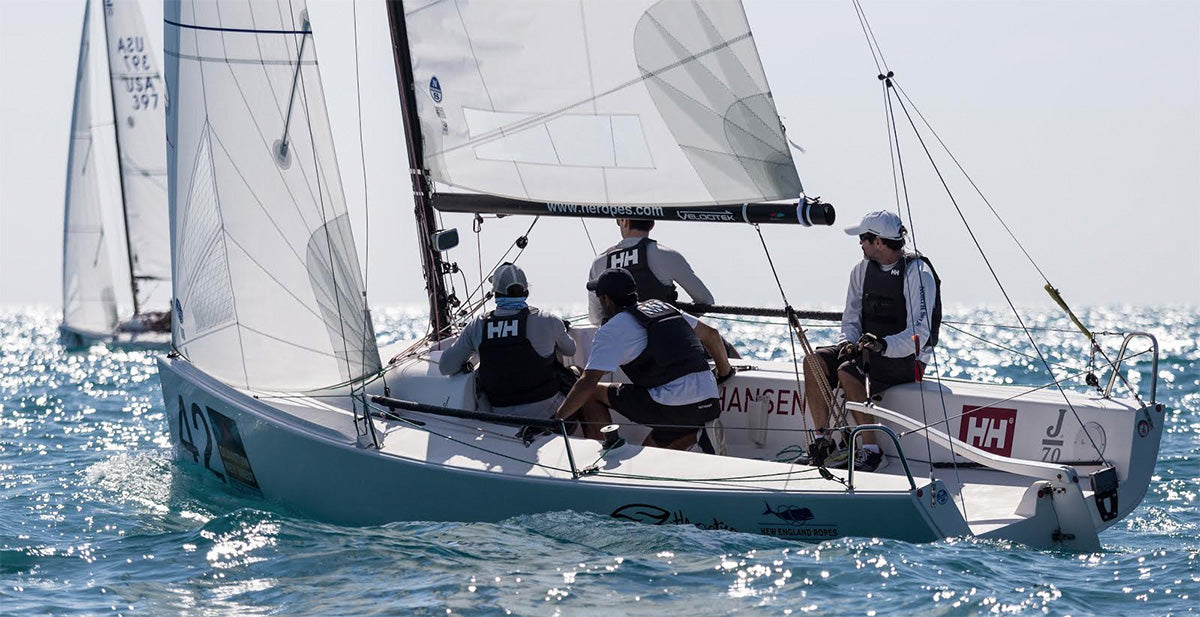
J/70 LIGHT AIR SPEED NOTES
J/70 LIGHT AIR SPEED NOTES
Tim Healy’s quick tips to optimize speed in light conditions
After a week of intense training with the Japanese teams in Newport, RI culminating with the New Your Yacht Club One Design Regatta, a lot was learned about light air tuning and trimming. Here are Tim Healy’s notes reinforcing some important points indispensable for optimizing the J/70 speed in light air conditions.
RIG TUNING
Ease rig to get about 3/4 inch of middle side sag in the mast. This is done by going off two full turns on the uppers and off two turns on lowers. If you are not getting 3/4 inch side sag, keep easing lowers until you do
In big chop, use a little backstay to control the rig from excess movement. Just enough to control the rig but not too much to take out all headstay sag
SAIL TRIM
In big chop and swell, keep speed up by twisting both sails thus making a large steering groove
Never stall the upper jib leech telltales. Trim until you see them stall then ease until 100% flowing
Jib leads 6-7 factory holes showing in front of jib car counting from behind front mounting bolt
Weather sheet trimmed to get clew at cabin house in flat spots, and 1.5- 2 inches off in big chop and waves. Remember to move lead forward with less windward sheet and back with more windward sheet
Ease jib halyard to show 8-10 inches of wrinkles in luff of jib in light and choppy conditions
Main traveler up to get boom on center when boat is up to speed out of tacks. Traveler at 75% up out of tacks for bow down acceleration
BOAT TRIM AND TURNS
Weight forward both up and downwind. Bow person in hatch up and down, out of hatch to help with roll tacking and jibing
Downwind: Tactician forward and to leeward and trimmer to weather. Both forward next to bulkhead
Upwind: Tactician forward next to bulkhead and trimmer as far forward as possible. Also, trimmer is first to control heel angle
Build speed first both up and down, then work on best VMG
Don’t let speed crash! It takes too long in light air to get going again
Make smooth turns and BIG rolls tacking and jibing
Keep momentum in focus when starting and at mark roundings
The three-day training camp coupled with the NYYC One Design Regatta, where teams had an opportunity to apply the new techniques and tips learned. We are extremely pleased with the each teams’ results. Here are the results within the top 10, powered by North Sails:
NYYC ONE DESIGN REGATTA
J/70
1
Team Vineyard Vines / John & Molly Baxter
2
USA 2 / Tim Healy
4
Rimette / John Brim
5
The Sled / Eiichiro Hamazaki
6
Natsuko / Yasutaka Funazawa
7
Sled / Takashi Okura
8
Polar / Doug Clark
9
It’s Sled / Hideyuki Miyagawa
10
Spring / Dave Franzel
* Denotes Partial North Sails Inventory
Full Results
Hiroo Kodama and Team Black practicing downwind techniques
Lots of learning in the three-day J/70 training camp with the Japanese teams
Short races at the North Sails training camp in Newport, RI
Tim Healy coordinates the Japanese J/70 Training Camp in Newport, RI
READ MORE
READ MORE
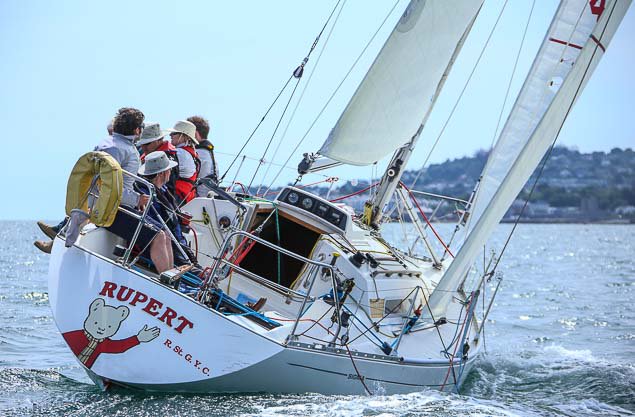
NORTH POWERS SIGMA 33 NATIONAL CHAMPION
North Powers Sigma 33 National Champion
Seven out of the top 10 boats were powered by North Sails at the UK and Irish Championship in Dublin Bay
Philip Lovegrove's "Rupert" flying 3Di NORDAC sails
The Sigma 33's had a stunning weekend's success at their recent UK & Irish Championships hosted by the Royal St. George YC in Dublin.
Seven out of the top 10 boats had North Sails in their inventory which included the overall winner Leaky Roof, who flew their North Sails PX15T No. 1 Genoa and Norlon 75 spinnaker, to seal their overall win with a scoreline that included three race wins.
Maurice "Prof" O'Connell from North Sails Ireland was on the water helping to set-up Dick Lovegrove's Rupert with her new 3Di NorDac mainsail and no. 1 genoa.
Shane Hughes was also afloat assisting Meltemi, from Dunmore East with his new 3Di NorDac No. 1 genoa.
Speaking after the event, North Sails Ireland's Nigel Young said, "We were delighted to see so many North Sails Sigma 33 customers afloat over the weekend. North Sails Ireland, UK South Coast and Scotland all look after Sigma 33 clients, delivering the fastest and most durable sail technology at an affordable price. Congratulations to the Sigma 33 fleet on a successful event."
Full results
READ MORE
READ MORE
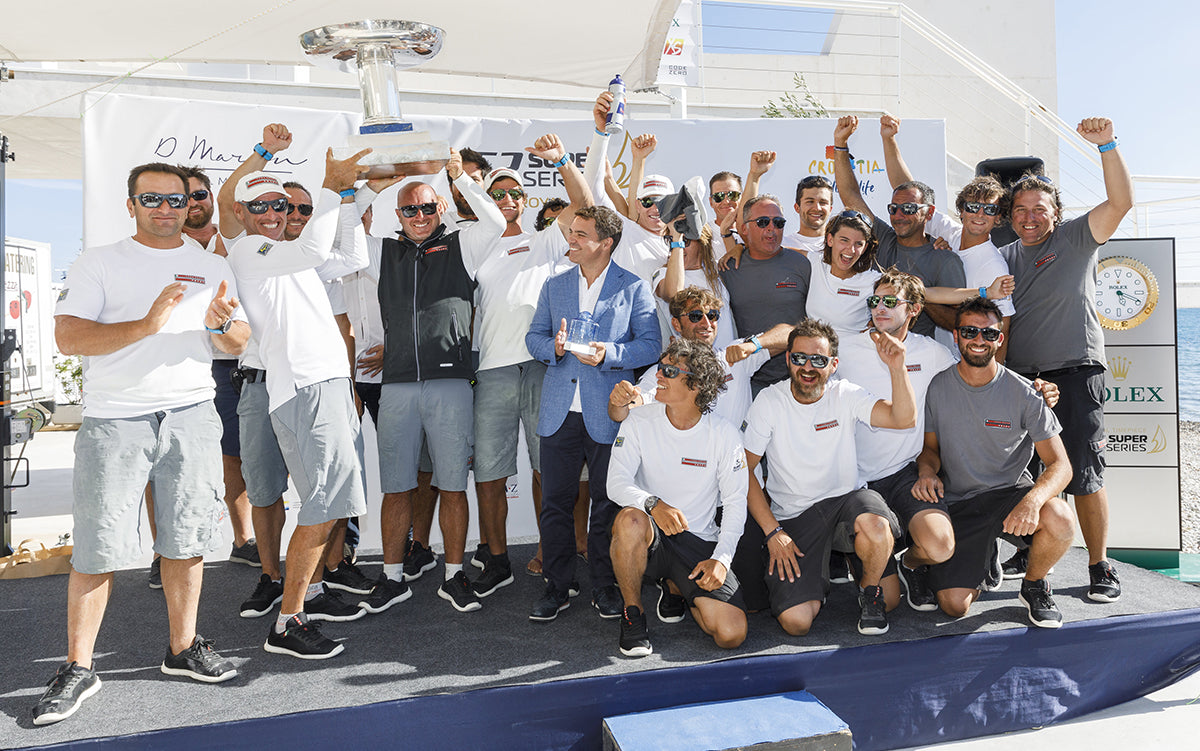
52 SUPER SERIES UPDATE
52 SUPER SERIES UPDATE
North Sails Inventories Sweep Podium at Super Series Event Two
52 SUPER SERIES Zadar Royal Cup 📸Martinez Studio
Two regattas in and the 52 Super Series is shaping up to be an event to watch this season. The best of five series hosted the first two regattas in Croatia in May and June; a new venue for the Series and new territory for many of the professional sailors in this event. North Sails Grand Prix Sales Leader and Super Series vet, Paul Westlake commented pre-season that newness was a theme running through the 2018 Super Series.
“We’re finished with two events, which were arguably the toughest events of the Series. You’re in a place the fleet has never sailed before, Sibenik and Zadar Croatia, respectively. On top of that, nine of the 12 boats are new this season, with endless developments in control systems, rigs, and most importantly sails. There is a considerable learning curve to understand the performance and the balance of this latest generation of boats. Plus very flat water and relatively light air makes for trying conditions on the race track. Sibenik turned out to be very light and Zadar ended up having a mixture of light and then some pretty good breeze over the last couple of days.”
Based on results, the most improved title goes to Luna Rossa and Phoenix, while Sled gets the consistency award. Luna Rossa sailed to the top of the podium in Zadar, rebounding from a sixth-place finish in Sibenik. Sled has not only been on the podium for both events, but has also dominated both coastal races and now sits comfortably in second overall for the series with 77 points.
The fleet will now turn its focus towards Cascais, Portugal, host of the 52 World Championship in mid-July. This location almost always guarantees good wind and swell, and a high probability of a tricky wave pattern. Recent conditions in the Series have not given a clear picture of a speed advantage, but Westlake feels we’re starting to see a little bit of a cream beginning to rise to the top.
On Luna Rossa:
“My prediction early on was that Luna Rossa would get stronger and stronger as the season developed. For them to win their second event as a newbie in the fleet is impressive. Yes, they’ve got a very experienced afterguard in Francesco Bruni, Jimmy Spithill, and Vasco Vascotto, but the majority of the crew is young with a dedication to improving their knowledge and skills every minute on the water. The program is showing that if you put the groundwork in and you trust the design and technology available, you have a solid foundation. I still think they’re going to get stronger and stronger throughout the series.”
📸 Martinez Studio
On Phoenix:
“Phoenix’s driver Tina Plattner is what every skipper dreams of, ending up with a podium finish in their first Super Series event. Being the first lady skipper in the history of the Super Series, and coming away with two wins and a podium finish whilst sailing at the highest level of our sport is nothing short of amazing. Hasso must be incredibly proud and it is no surprise that he has been instrumental in creating the Phoenix team which is doing a great job all around with very close attention to their rig and sail setup which leads to solid boat speed, it’s a fantastic team effort.”
📸 Martinez Studio
On Sled:
“You can’t underestimate how hard it is to win the coastal races in this fleet, and Sled has won both so far. We’ve always seen a trend of the boats that dominate in coastal races are usually regarded as one of the quickest boats in the fleet. We’ve seen light conditions so far and Sled is showing some real legs in the light air and flat water.”
📸 Martinez Studio
On What’s Next:
“The feedback on the North Sails design support and the latest 3Di RAW 880 upwind developments from all our teams has really been extremely positive. Everyone continues to push their equipment really hard because it is a long season. The top guys are keeping a careful eye on their sail program and the aging of the sails, and also the modifications and tweaks that they want to make as they learn their boats and look for those extra millimeters around the race track.”
Westlake, along with Grand Prix designers Mickey Ickert and Juan Meseguer, will be in Portugal in July for the World Champs. The pressure is on for 52 teams and the North Sails experts who support as the World Championship closes in. Every team that signs up for the Super Series has the ultimate goal of winning the season, but to be crowned a World Champ is still the Holy Grail. Westlake expects we’ll see another level of intensity over the next three weeks. Cascais can be windy and kick up big waves, the team will therefore refocus their energy on conditions that will be demanding on their equipment and crews, whilst providing dividends to those who are fast both upwind and downwind.
📸 Max Ranchi
📸 Martinez Studio
READ MORE
READ MORE
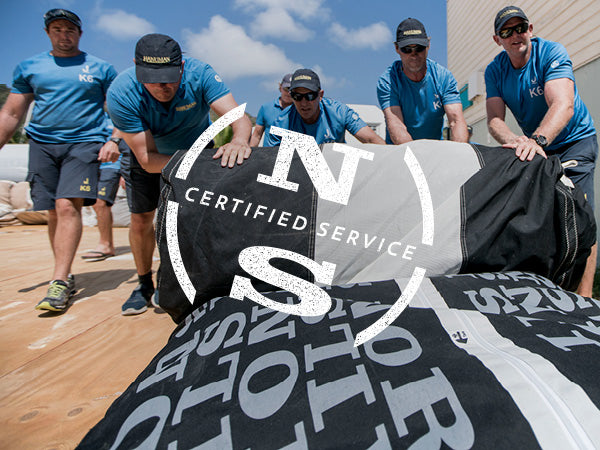
LAKE ONTARIO 300 & 600 CHALLENGE
LAKE ONTARIO 300 & 600 CHALLENGE
Check Off Your Race Preparation List.
At North Sails, our mission is to provide you with expert repairs, maintenance, and upgrades in a timely manner. Whether you race or cruise, your sails are a major investment, and we are committed to helping you maximize their performance and lifespan.
With the Lake Ontario 300 & 600 Challenge approaching, we want to make sure you are covered and your sail care preparation is taken care of. Bring your sails in for that vital tune up and order your race supplies before you cross the start line on July 14th.
READ MORE
READ MORE
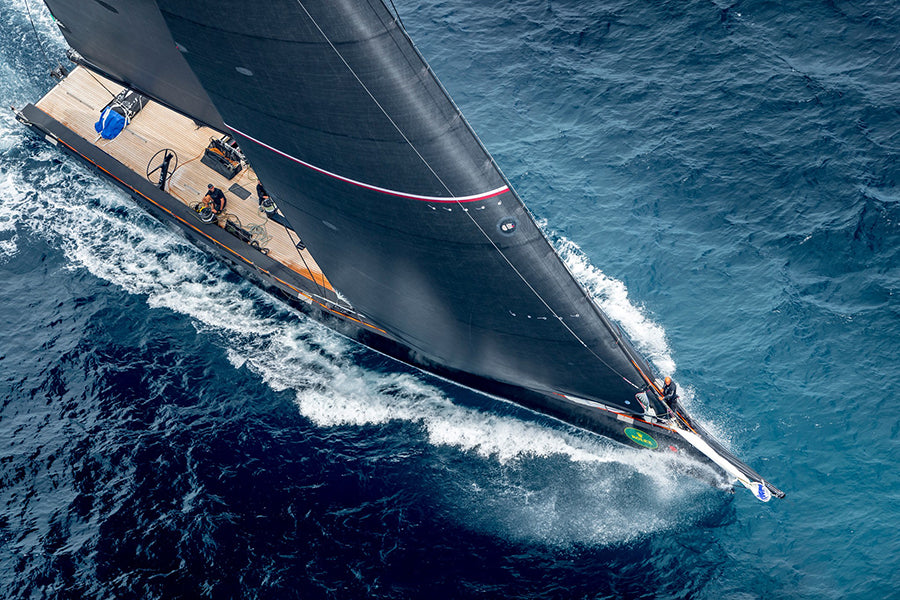
WALLY / GIRAGLIA ROLEX CUP
WALLY / GIRAGLIA ROLEX CUP //
VICTOIRE DE 'TANGO'
Après sa victoire en temps réel lors de la course Offshore de la Giraglia, le Wally 100 'Tango' mené par Marc Pajot, avec à son bord Laurent Delage, a remporté dans la classe Wally le classement Overall.
© Rolex / Kurt Arrigo
Du dessin des voiles à l'optimisation des réglages : Une implication à la mesure d’un projet hors norme.
Laurent DELAGE (Responsable du développement du jeu de voiles et équipier en charge de la stratégie) :
"Sur un bateau aussi pointu, le travail ne manque pas : les réglages du mât (cintres et quêtes) et ses influences sur les voiles nous ont bien occupé et aujourd’hui nous travaillons sur de nouveaux systèmes d’affalage de Spi. Quand on sait que ce dernier fait plus de 1000m2, on comprend vite l’importance que cela peut avoir…"
La fiche technique
Le bateau : Wally Cento (100 pieds)
Les voiles :
Voiles plates en 3Di RAW (Dynema/Carbon)
Voiles de portant en 3Di DOWNWIND (Code Zero) et NPC DOWNWIND (A1, A2,A3,A4)
READ MORE
READ MORE
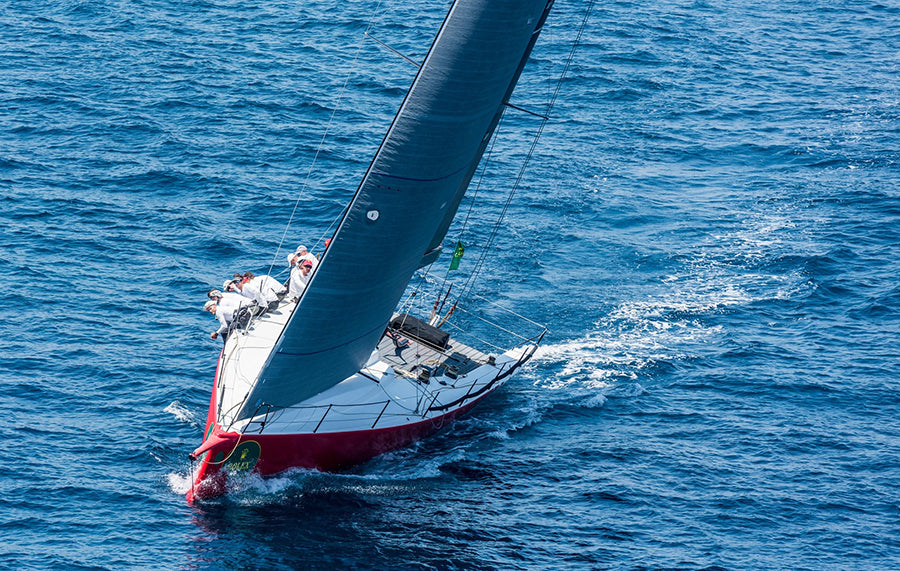
IRCA / GIRAGLIA ROLEX CUP
IRCA / GIRAGLIA ROLEX CUP //
VICTOIRE DE FRECCIA ROSSA.
Tenant du titre et récent vainqueur overall de la Rolex Capri Sailing Week en ORC, le TP52 'Freccia Rossa' s’est de nouveau imposé dans sa classe et conserve sa couronne.
© Rolex / Kurt Arrigo
De la gestion de projet au réglage de la GV : Une collaboration de tous les instants
Jean-Philippe GALLOIS (Project manager et régleur de GV à bord) :
"Nous avons un équipage Pro-Am très performant avec un propriétaire très impliqué qui, depuis cette saison, a pris la barre. Nous remportons la Giraglia pour la 3e fois de suite. Nous espérons performer sur la prochaine Copa del Rey fin juillet, l’objectif majeur de notre saison".
La fiche technique
Le bateau : TP52
Les voiles :
Voiles plates en 3Di RAW
Voiles de portant en 3Di DOWNWIND, NPC DOWNWIND
READ MORE
READ MORE
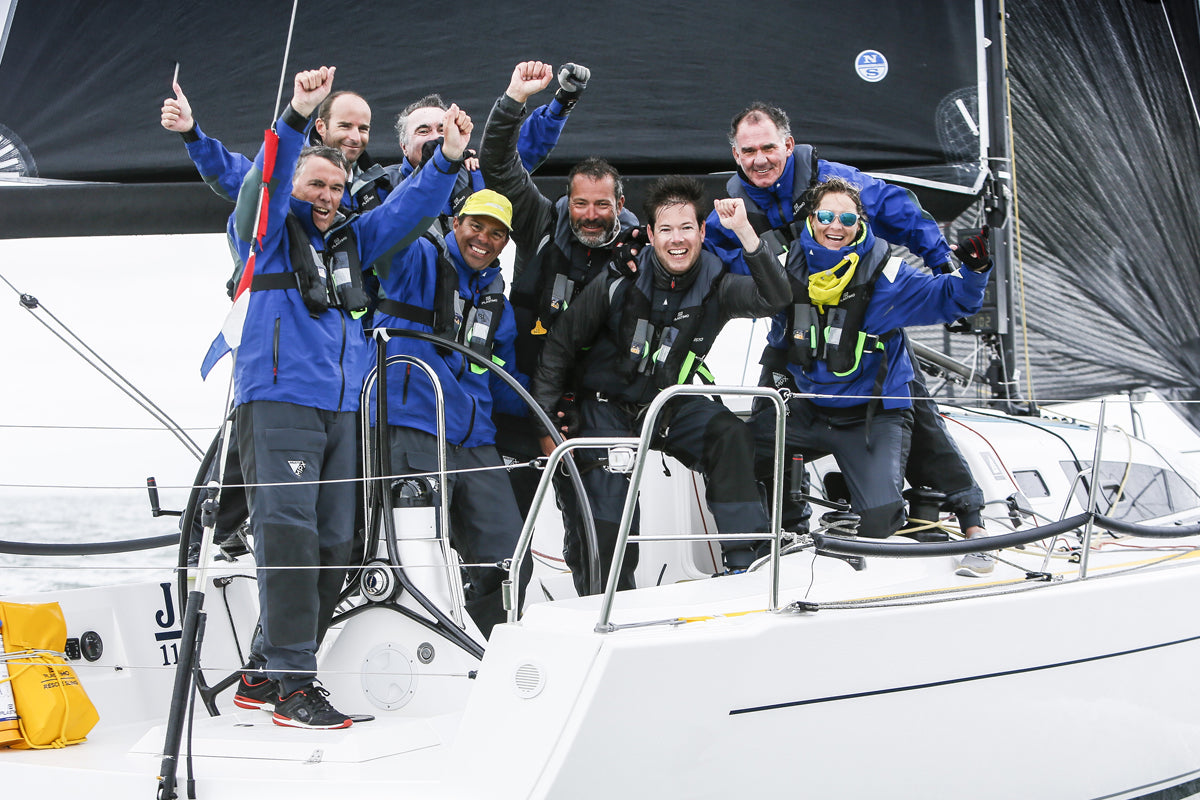
IRC / CHAMPIONNAT D’EUROPE
IRC / CHAMPIONNAT D’EUROPE //
VICTOIRE DE J LANCE 12
J Lance 12 a été sacré champion d’Europe IRC 2018 à Cowes. Le bateau skippé par Didier le Moal a fait preuve de beaucoup de maîtrise dans les dernières étapes pour s’imposer au terme d’une semaine de régates intenses.
Apporter une réponse pertinente aux experts les plus exigeants
Quentin PONROY (Chargé de la mise à poste et de la validation des voiles :
"Didier LE MOAL est un expert (Président de J Composites) exigeant, qui te pousse dans tes retranchements. Même si il reconnaitra plus volontiers les qualités de son bateau plutôt que celles de ses voiles, nul doute que celles-ci ont fait partie des atouts qui l’ont mené à la victoire".
La fiche technique
Le bateau : J 112
Les voiles :
Voiles plates en 3Di RAW
Voiles de portant en NPC DOWNWIND
READ MORE
READ MORE
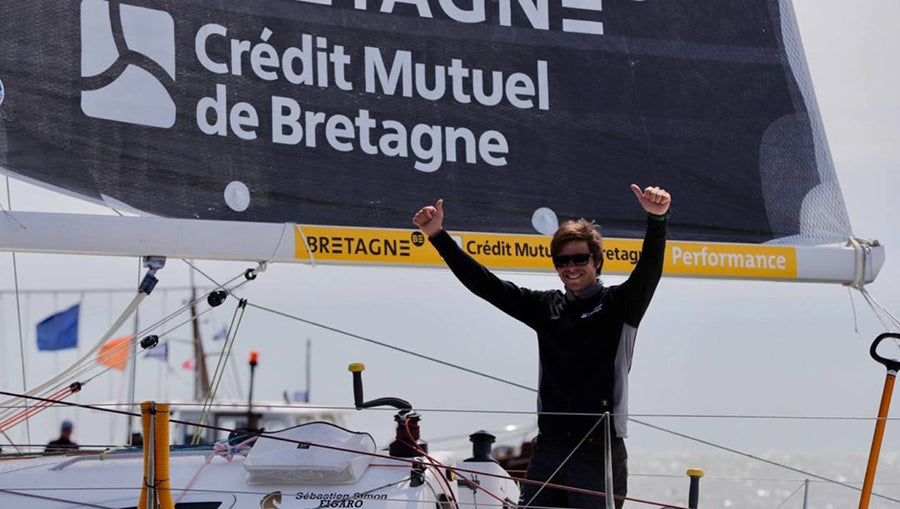
LE HAVRE ALLMER CUP
FIGARO-BÉNÉTEAU 2 / LE HAVRE ALLMER CUP // VICTOIRE DE SÉBASTIEN SIMON (BRETAGNE CMB PERFORMANCE)
En montant sur le podium des 5 manches disputées (3, 3, 3, 1, 2), Sébastien Simon remporte la Le Have Allmer Cup 2018. 7 des 8 premiers de la Le Havre All Mer Cup sont équipés de spis North Sails
© Alexis Courcoux
Développer en permanence pour répondre aux exigences de la monotypie
Quentin PONROY (Commercial/dessinateur, en charge de la classe Figaro) :
"Sébastien est notre client-développeur sur cette série. Ses résultats ainsi que ceux de nos autres clients sont une véritable récompense, étant donné l’investissement en temps de navigation, écoute et réflexion que représente l’optimisation de chaque voile."
© Alexis Courcoux
READ MORE
READ MORE
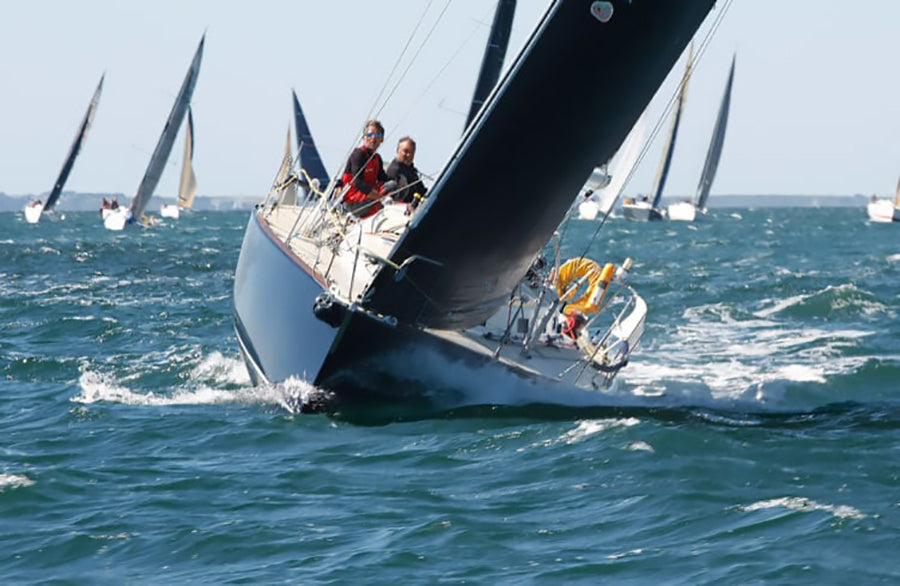
IRC / DUO CAT-AMANIA
IRC / DUO CAT-AMANIA //
VICTOIRE DE GIRARDIN / THOMAS (J120)
Le duo Philippe Girardin / Gwénaël Thomas a remporté haut la main la Duo Cat-Amania 2018 avec trois victoires d’étape. 3 des 5 premiers sont (à une voile près) intégralement équipés de voiles North Sails. Tenant du titre, Laurent Tilleau, associé à Philippe Sauzières à la barre du JPK 1010 'Crescendo' termine 5ème.
© Sylvain Huet
Courir aux côtés de SES clients pour mieux comprendre leurs besoins
Laurent TILLEAU (Commercial IRC) :
"Les marins de cette classe restent certes des amateurs, mais très éclairés, aguerris à la course, teigneux sur l’eau et exigeants dans leur préparation et celle de leur monture. La plupart des concurrents s’entrainent réellement et sérieusement. Ils sont très demandeurs de conseil et d’expertise. C’est pourquoi il est très important d’être à leurs côtés : sur les pontons bien sûr, mais également sur l’eau."
La fiche technique
Le bateau : J 120
Les voiles :
Voiles plates en 3Di RAW (Aramid / Dyneema)
Voiles de portant en 3Di DOWNWIND et NPC DOWNWIND
READ MORE
READ MORE
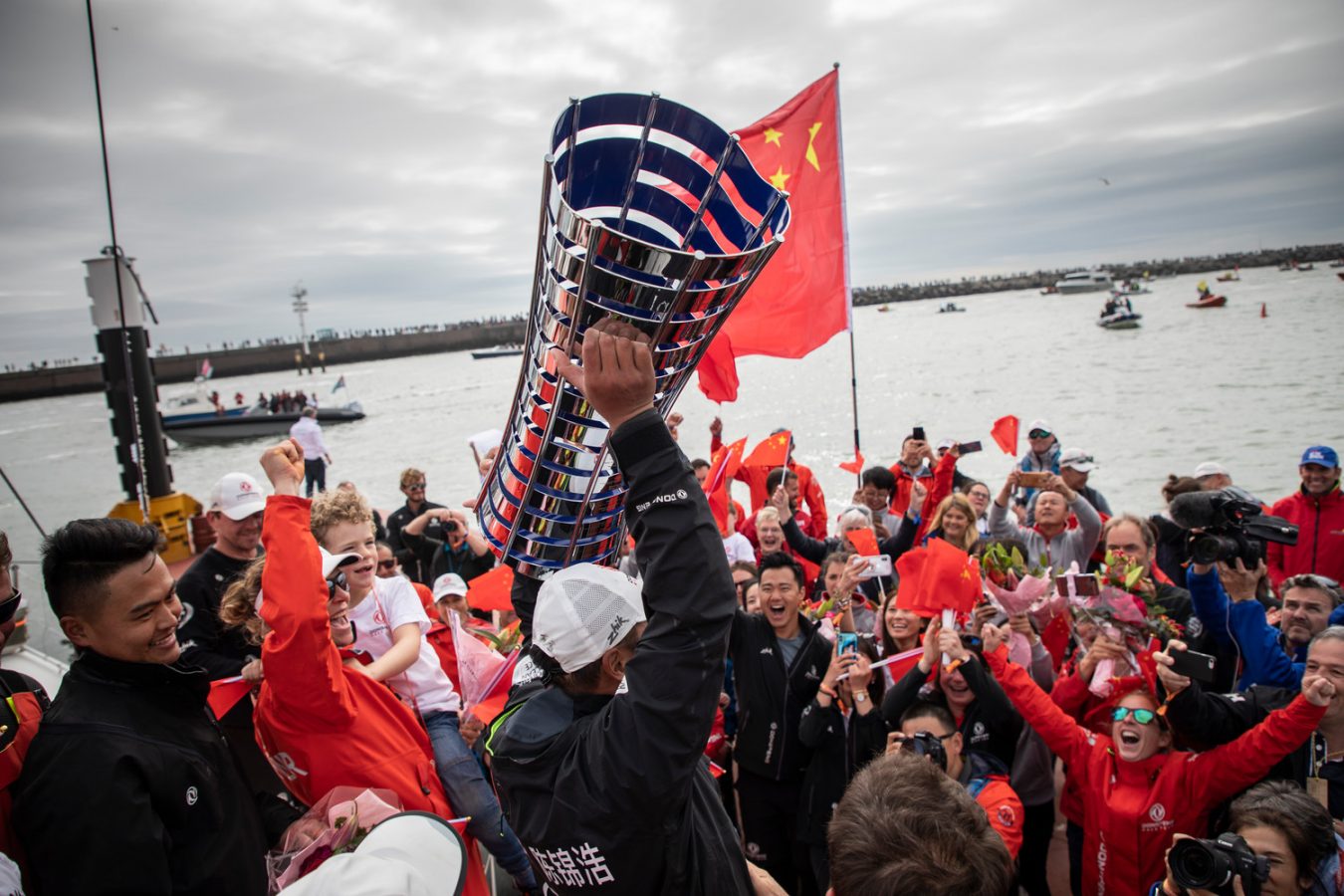
A RACE OF SUPERLATIVES
A RACE OF SUPERLATIVES
Ken Read Reflects On The Closest Volvo Ocean Race In History
Dongfeng Race Team was named winner of the Volvo Ocean Race 2017-18 after a late pass in during Leg 11. 📸 Martin Keruzore/Volvo Ocean Race
Like every other serious sailor on the planet I was glued to the Volvo Ocean Race tracker and live updates through the last day and a half of the Volvo Ocean Race. I woke up half a dozen times in the middle of the night to check what was going on as the fleet started to split at the exclusions zones. Unbelievable drama with the thrill of victory and the brutal agony of defeat all mixed into one as the boats finished within minutes of each other.
With the dust now settling, you can’t talk about this race without first remembering the John Fisher tragedy. And the question is how can offshore sailing adapt to have better safety onboard in order to avoid such tragedy? Because these boats aren’t going to get any slower; with semi-foiling boats, offshore racing is only getting faster and and safety is going to become more of a priority.
Secondly, from a North Sails perspective, I just couldn’t be prouder of our people and 3Di sails that were designed and supplied for this race. And how much better our products get by the day thanks to races like this. Bouwe Bekking said this was the windiest race he has ever done; the abuse that got put upon these sails and how good they looked coming into the finish line is unfathomable. Drone footage fully exposed the brutality of the Volvo Ocean Race like it’s never been seen before; how hard these boats are pushed and what the sails went through. Those of us who have done the race understand it, but even with onboard footage we’ve never been able to really show the world how brutal it can be to man and machine. The drone footage shows that the fleet tried to destroy their sails 24 hours a day for weeks at a time and 3Di lived through it! And not just lived through it, but the boats finished with sails that looked like they just did a Tuesday night beer can race. That’s how good 3Di sails are. It’s unbelievable and I’m incredibly proud of North Sails.
The funny thing is, our company and the sailing world is starting to take 3Di performance for granted; but no other rival sail manufacturing technique could withstand anything close to what the Volvo sails did. Not even remotely close. It’s an unbelievable takeaway. We can’t get used to it because 3Di’s performance is incomparable and it is so beyond anything that has ever happened in our industry before.
I remember when 3DL was first used on the Volvo 60’s and we saw performance rise to new levels, yet everyone was holding their breath as to whether a film-on-film sail would make it through each leg. But 3Di, obviously without film, has totally eclipsed that breakthrough and left laminates in its wake. To the point where we have now retired North 3DL sails and focused production entirely on 3Di for racing sails and performance cruising sails to meet demand. It’s also worth noting the ease of making long-lasting repairs in the worst spots possible. A tube of 5200, a piece of 3Di material and a bit of time for the glue to dry; any repair is complete. 3Di’s durability and unique construction has eliminated the need for teams to carry a sewing machine onboard.
Interestingly, we had a complete debrief with every single Volvo team during the Newport stopover, 80% of the way through the race. The discussion covered the good and the bad. As a company we are committed to constantly improving, which is why we always do these debriefs after every major sailing event. There are always little details where we can do better. Three years ago feedback from the Volvo teams was all over the map, with a lot of both critical and positive analysis of the sails. The unique thing about this edition of the race was that the few small details the teams brought to us were tiny issues which are simple to clean up. Secondly, and I think more interesting, every teams’ detailed analysis was consistent; almost always exactly the same as the others. Gautier Sergent (North Sails Head of R&D, and designer of the VO65 sails) has brought everything together beautifully to create a solution for the race that is close to perfect.
MAPFRE finished second overall in the Volvo Ocean Race 2017-18 📸Volvo Ocean Race
It’s important to recognize as well that the females onboard are no longer just girls sailing, they are Volvo Ocean Racers, so it will be interesting to see what programs pick them up going forward. I hope the crews don’t go back to the status quo. These sailors are now experienced, big boat Volvo sailors; I hope big boats start calling them as much as they call the guys to go racing. The proof is in the pudding and that’s where you find out where the talent is, who now gets the invite? And there’s no reason why they should not get lots and lots of invites because Lord knows they have the experience, and they’ve sailed with best and have seen the toughest conditions. For me helping females succeed in all levels of our sport as well as keeping kids sailing in their 20’s and 30’s is key to the growth of our sport. Without female opinion leaders and female superstars, and female owners real growth is not going to happen. We have to keep pushing very hard in our sport to involve more women and youth.
Looking to the future, it seems like the IMOCA relationship is set with the Volvo Ocean Race. Whether I agree with it or not is irrelevant, but I’m certainly curious to see how it works out. For me, the Volvo must always be a fully crewed race. The rules for youth and women sailors, and the introduction of onboard reporters, have been crucial to showing the world what sailing looks like. So I would not want to create a boat that weeds out in essence those three huge breakthroughs. It’s therefore critical to put a crewed boat out there. With the IMOCAs hopefully the crew does not become too small and that it is considered a 60ft boat where you have a proper crew and you can continue with the female, youth and reporting onboard. Personally, I would also love to see owners back in the race with an old Whitbread-style, second ‘Big Boat’ Class or open division, inviting 70’ through 100’ crewed boats to race around the world under a rating band – attracting those boats competing in other races like the Rolex Sydney Hobart, Newport-Bermudas, TransAtlantics, TransPacs and Rolex Fastnets. Whatever it might take to get more boats in the race. It means opening things up and saying to owners “we want you back”.
At the end of the day offshore racing will continue to grow and evolve, and events like the Volvo will continue to push our products to improve, and boggle our minds with drone footage bringing it all to our living rooms. Which is fantastic for the sport. Boats will become faster. Hopefully women and young sailors are to be included more often. And we have to keep pushing safety as boats get inherently less safe. We need to pause and remember that we as North Sails have a strong say in our sport as well as a massive advantage in the marketplace today, and into the near future, and we should make the most of it; whether for a race boat or a cruise boat that wants the best. The fastest sails in the world are in fact the most durable. Something that has never been said in the history of sailmaking.
Carolijn Brouwer hoists The Netherlands flag after winning the Volvo Ocean Race 2017-18, the first edition of the race to require mixed crews. 📸 Pedro Martinez/Volvo Ocean Race
READ MORE
READ MORE
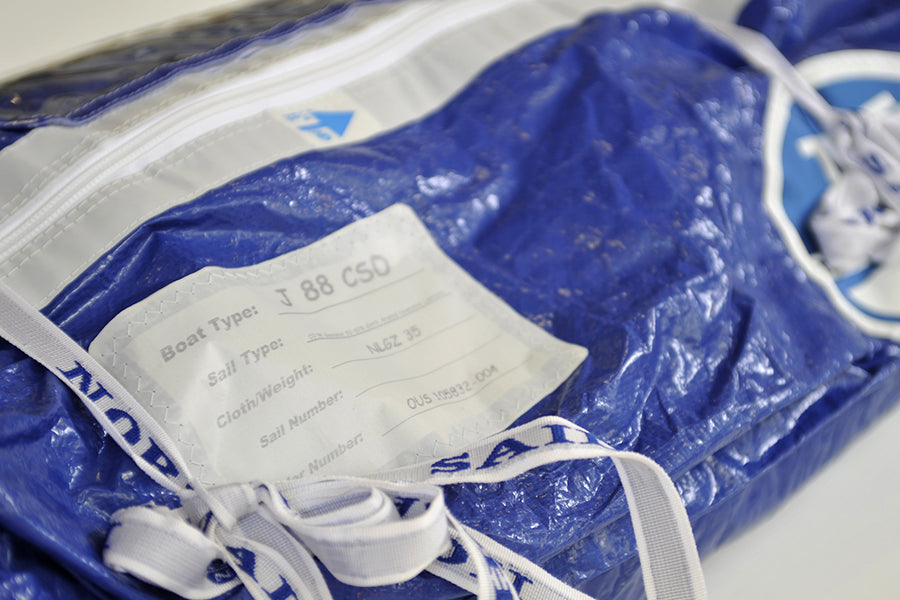
Consejo North Sails
CONSEJO NORTH SAILS
El cuidado de las velas es clave para prolongar su vida útil y prestaciones, pero también es importante prestar atención a las bolsas en las que las guardamos.
Desde North Sails os recomendamos que las limpiéis regularmente con agua dulce para evitar que se acumulen suciedad y salitre (que podrían afectar a la integridad de vuestras velas) y que realicéis un mantenimiento básico de las cremalleras. ¿Cómo hacerlo? Muy sencillo: enjuagarlas con agua dulce, completando el recorrido completo de la cremallera para eliminar salitre y suciedad, y cuando sea posible, lubricarlas aplicando silicona en espray.
READ MORE
READ MORE
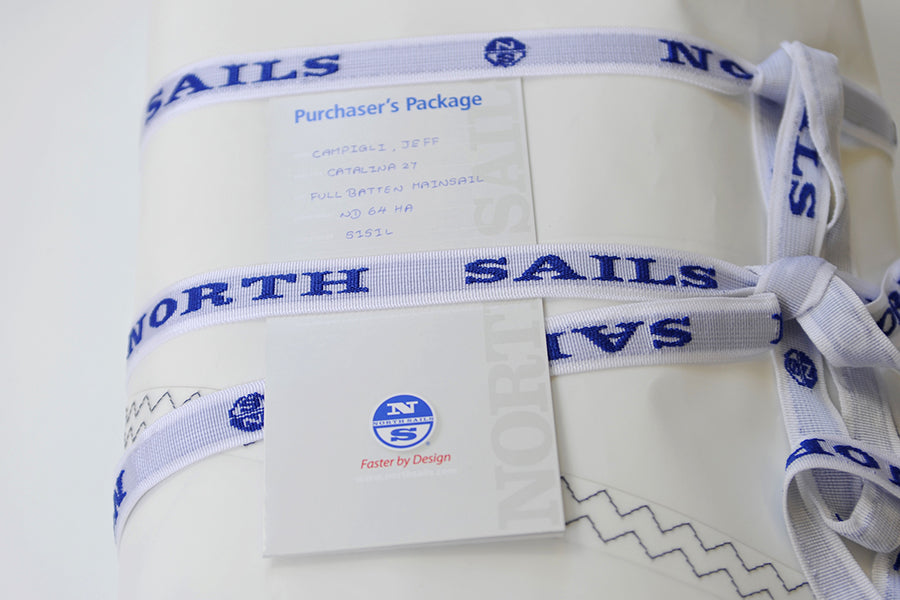
¿VELAS NUEVAS? ¡APROVECHA AHORA!
¿VELAS NUEVAS? ¡APROVECHA AHORA!
¿Conoces nuestro programa de precios reducidos en base a la capacidad de producción de la velería a nivel mundial?
El precio venta público (PVP) de las velas North Sails está calculado para picos de producción, cuando nuestras velerías trabajan a pleno rendimiento, pero cuando disponen de mayor capacidad de producción, ese PVP recibirá un interesante recorte. Actualmente se ofrece para velas que se entreguen en agosto, septiembre y octubre. Así que ya sabes: si quieres renovar o reforzar tu inventario con velas North Sails, ¡pregunta por nuestro programa de precios reducidos!
READ MORE
READ MORE
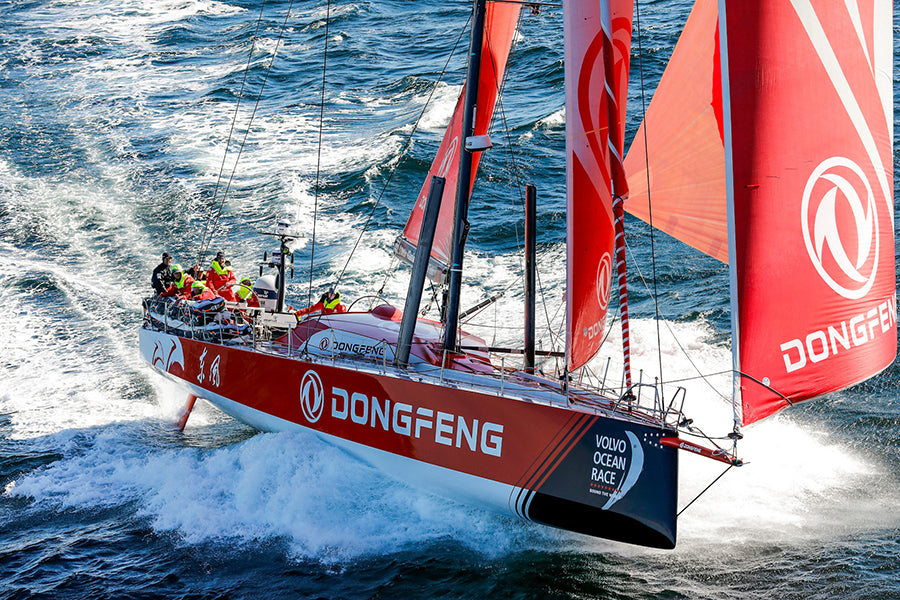
DONGFENG RACE TEAM, CAMPEÓN DE LA VOLVO OCEAN RACE 2017-18
DONGFENG RACE TEAM, CAMPEÓN DE LA VOLVO OCEAN RACE 2017-18
Han tenido que completarse las 11 etapas y la circunnavegación del mundo para conocer la identidad del equipo ganador de la Volvo Ocean Race 2017-18, la edición más disputada y emocionante de la historia.
© Ainhoa Sanchez / Volvo Ocean Race
Tres equipos llegaban al último asalto empatados a puntos al frente de la clasificación, por lo que la victoria se decidiría en la etapa más corta de toda la vuelta al mundo, la que unía Gotemburgo con La Haya, de sólo 700 millas. La incógnita se mantuvo literalmente hasta la línea de meta, y finalmente sería el equipo chino Dongfeng Race Team el que se llevaría el título. El español MAPFRE finalizó segundo, a tres puntos del campeón. El equipo liderado por Xabi Fernández se proclamó ganador de las In-Port Series. Desde North Sails queremos felicitar a todos los equipos por el magnífico espectáculo que nos han ofrecido, su demostración de marinería, su esfuerzo, su profesionalidad, y por haber contribuido a demostrar una vez más la calidad y prestaciones de las velas North Sails, velería oficial de la Volvo Ocean Race 2017-18.
READ MORE
READ MORE
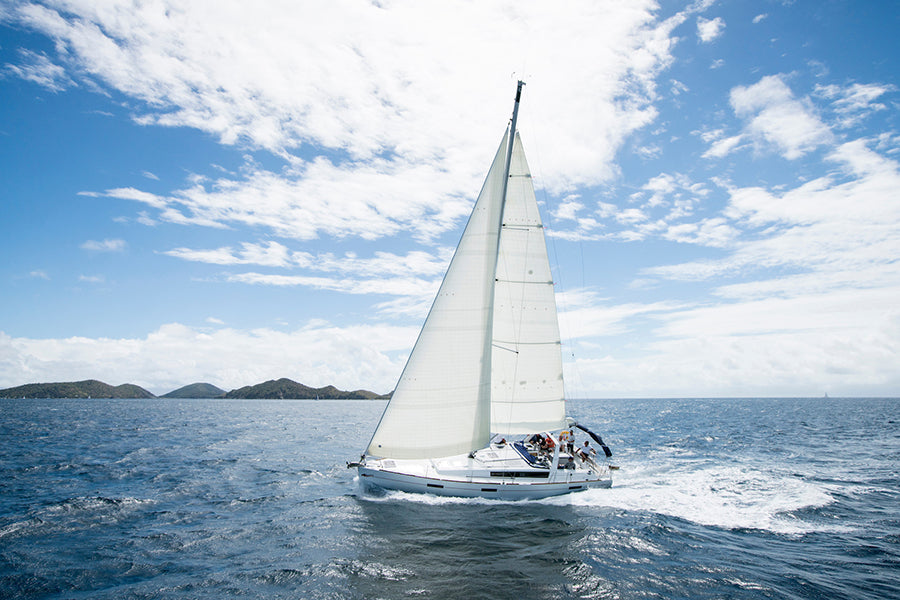
LA 3Di NORDAC TRIUNFA
LA 3Di NORDAC TRIUNFA
En junio de 2017, North Sails revolucionó el mercado de las velas de crucero con el lanzamiento de la 3Di NORDAC, un producto que por primera vez combina el tradicional tejido de poliéster con la tecnología 3Di. Un año más tarde, ya se han comercializado más de 2.000 unidades 3Di NORDAC en 26 países. ¿Cuál es la clave de su éxito?
© Amory Ross
Nació como una idea, y hoy es uno de los productos de mayor éxito en el extenso catálogo de velas North Sails. La 3Di NORDAC debe su nombre a la combinación de dos términos: NORDAC es un anagrama del Dacron (poliéster) del que está compuesta; 3Di se refiere a la tecnología exclusiva de North Sails con la que se fabrica en moldes de tamaño real, la misma con la que se crean las velas de los barcos de alta competición.
El Dacron lleva años demostrando su excelente compromiso entre estabilidad, resistencia y precio, características especialmente valoradas en navegación de crucero. Aplicando la tecnología 3Di al tejido de poliéster, North Sails ha logrado crear velas de una pieza, sin costuras, moldeadas en 3D que aportan un grado inédito de prestaciones y durabilidad a los inventarios de crucero. La 3Di NORDAC está disponible para barcos de pequeña y mediana eslora, con grátil máximo de 24 metros.
“En 2015 comenzamos a explorar ideas para un nuevo producto para el mercado de crucero”, explica Dan Neri, director general de North Sails. “Identificamos una oportunidad de crear una vela blanca asequible con todos los beneficios del 3Di. Estábamos seguros de que el producto mejoraría radicalmente la experiencia de la navegación en crucero, y un año después de su introducción más de mil barcos navegan con 3Di NORDAC”.
Luis Martínez Doreste, director comercial de North Sails España, destaca que “la 3Di NORDAC aporta un valor añadido en durabilidad y rendimiento que ninguna otra vela de poliéster puede alcanzar”. Un argumento que convence a los clientes de la firma en nuestro país: “No dejamos de recibir comentarios positivos de los clientes que apuestan por la 3Di NORDAC”.
El pasado enero, apenas seis meses después de su llegada al mercado, la 3Di NORDAC recibió el Pittman Innovation Award 2018 de la revista SAIL Magazine en categoría crucero, un reconocimiento basado en la combinación de las “magníficas virtudes de coste-efectividad y durabilidad de las velas tradicionales con el proceso de fabricación 3Di aplicado al poliéster, un acierto seguro para navegación de crucero”.
Doce meses después de su lanzamiento, North Sails ha comercializado y entregado 2.162 velas 3Di NORDAC en 26 países.
READ MORE
READ MORE
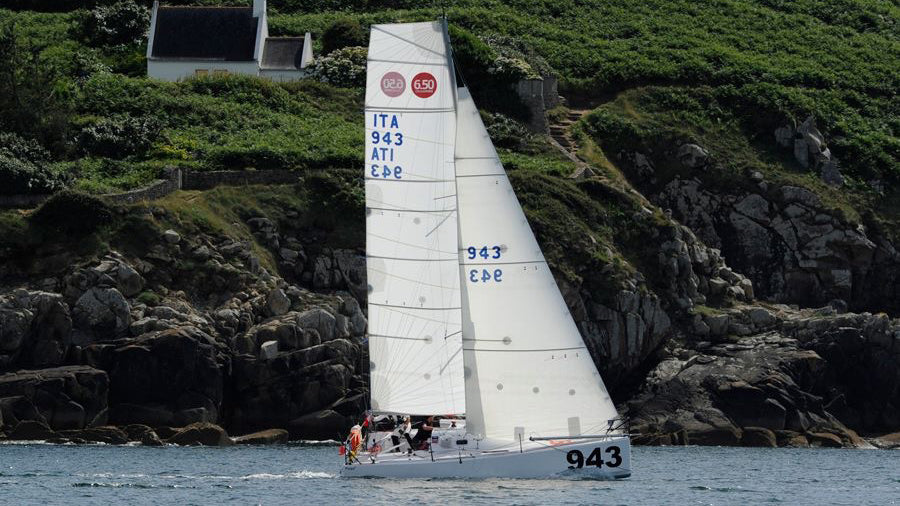
QUEL BON MILLÉSIME CE MINI FASTNET 2018!
QUEL BON MILLÉSIME CE MINI FASTNET 2018!
Régater à vue pendant 4 jours avec une telle intensité n’est pas donné à tout le monde…et à ce petit jeu, Axel Tréhin et Fred Denis sur « Tartine » FRA 945, ont été impériaux. Fraichement mis à l’eau 3 semaines plus tôt, le dernier plan Lombard fabriqué par « Mister Axel himself » vient nous rappeler que les nez ronds ne sont pas totalement prophètes en leur pays…Les 2 compères ont imposé un rythme soutenu du début à la fin ne laissant que des miettes à la concurrence et s’imposent (classement proto) en 3 jours et 14h.
Ambrogio marche sur l’eau et signe un fabuleux hat-trick !!! Pour cette occasion, Bogi « Wanted Sponsor » ITA 943 a choisi un équipier de choix en la personne de Tanguy Le Turquais, qui, entre 2 épreuves de Figaro, est revenu à ces premiers amours. Il faut dire qu’aujourd’hui, régater en Pogo 3, c’est comme le Figaro…il faut une photo finish pour départager les concurrents. Pendant près de 4 jours, ils ont repoussé les assauts incessants d’Amélie Grassi/ Davy Beaudart (FRA 944) et d’Erwan Le Draoulec/ Clarisse Cremer (FRA 903) pour signer une superbe victoire après celles de la Mini en mai et du trophée MAP. (classement série)
READ MORE
READ MORE
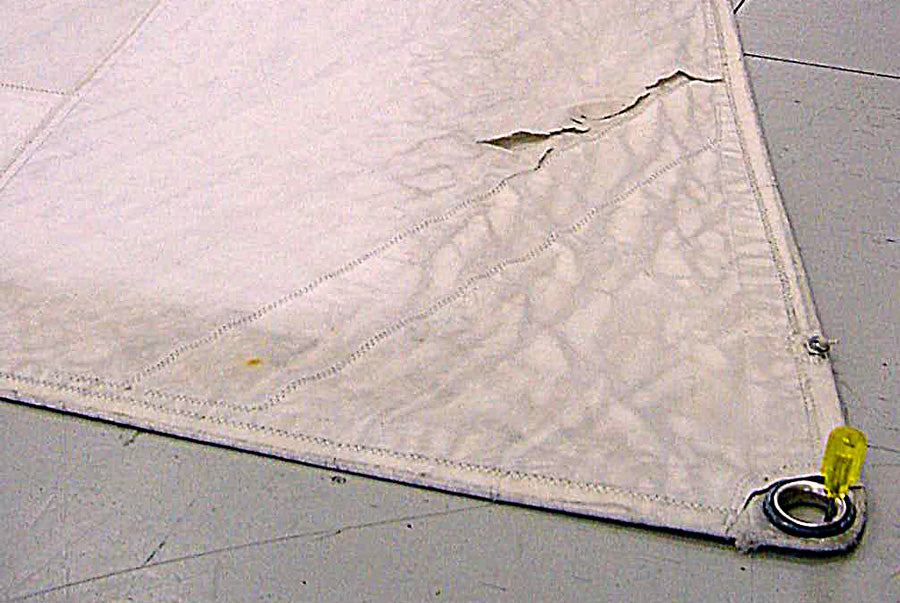
COMMENT BIEN PROTÉGER VOS VOILES DU SOLEIL ?
COMMENT BIEN PROTÉGER VOS VOILES DU SOLEIL ?
Les marins sont bien placés pour savoir que le soleil n’a pas seulement des bienfaits. Les rayons ultraviolets qui brûlent notre peau et blanchissent les ponts en teck provoquent également de sérieux dégâts aux voiles. Il convient de protéger vos voiles comme vous protégez votre peau et de bien les couvrir lorsque vous ne les utilisez pas. Car, une fois le tissu détérioré à la suite d’une exposition prolongée au soleil, il n’existe pas vraiment d’autre recours que le remplacement de la voile.
Tissus
Certaines fibres présentent une meilleure résistance aux UV que d’autres. Si l’on considère deux fibres de même type mais de diamètre différent, celle d’un diamètre inférieur aura tendance à se dégrader plus rapidement. Les tissus en polyester tissé sont fabriqués avec des fils de chaîne presque toujours plus petits que les fils de trame. Par conséquent, quand le Dacron est endommagé par le soleil, il se déchire plus facilement dans le sens de la chaîne (parallèlement à la trame).
Pour tester l’intégrité des fibres de votre voile, il suffit de légèrement gratter la surface du tissu avec un objet en métal non tranchant, comme le bord d’une cuillère ou le côté épais d’une lame de couteau. Si les fibres sont encore en bon état, le tissu deviendra brillant et plus lisse à l’endroit où vous l’aurez frotté. Si les fibres sont abîmées, les filaments à la surface boulocheront ou s’effilocheront. Et quand les dommages causés par les UV sont très importants, la fibre risque de se détacher complètement. C’est donc le signe alarmant que votre voile est sur le point de céder.
La plupart des expositions aux UV se produisent lorsque les voiles sont affalées. Certaines zones de la voile seront par conséquent plus affectées que d’autres. Ainsi, la chute de la grand-voile reposant sur le dessus se détériorera plus rapidement que les parties en dessous. Quant au tissu à l’intérieur de l’enroulement d’une voile d’avant sur enrouleur, il sera, lui, préservé du soleil plus longtemps que la face extérieure.
Parfois, la solution la plus économique est de réparer ou de remplacer les parties endommagées par les rayons ultraviolets. Mais le plus souvent, lorsque le tissu présente un état de dégradation avancée au point que les fibres se cassent facilement ou que les fils de trame d’un tissu en Dacron cèdent, c’est qu’il est temps de remplacer votre voile.
Protections anti-UV
Vous serez peut-être surpris d’apprendre que votre voile peut se dégrader à travers sa protection anti-UV. À la longue, la protection devient moins efficace contre les rayons du soleil. Un tissu épais protègera davantage la voile du soleil qu’un tissu léger. De même que les couleurs foncées offrent une meilleure protection que les couleurs claires. Si vous naviguez sous les tropiques, envisagez donc une protection anti-UV épaisse. Votre grand-voile sera certes plus encombrante et lourde, mais ce revêtement prolongera sa durée de vie.
Dernier point et non des moindres, le pont de votre bateau constitue une excellente barrière contre les UV. Stockez vos voiles en soute dans la mesure du possible.
Couture
Un fil à coudre se dégrade au soleil beaucoup plus vite qu’une fibre de même diamètre d’un tissu à voile. Parce qu’étant cousu sur le dessus, le fil à coudre est davantage exposé aux rayons du soleil. Si le choix de la grosseur du fil ne dépendait que de la résistance aux UV, on privilégierait les fils épais. Mais avec un fil trop gros, la voile risque de se perforer le long de la couture et finit par se déchirer le long des pointillés. Tandis qu’une aiguille trop fine relativement au grammage du tissu peut fléchir et dévier autour des fibres plus grosses, ce qui peut affecter le bon déroulement de synchronisation de la machine. Compte tenu de ces facteurs, le fabricant de voiles choisit en général le fil le plus léger et l’aiguille le plus fine possible en fonction du tissu et de son grammage.
Test du pouce
N’importe qui peut vérifier l’état de dégradation d’un fil avec son pouce. Si, en grattant le fil avec l’ongle du pouce, il s’effiloche, c’est qu’il est temps de remplacer les coutures sur votre voile. Inspectez chaque couture sur plusieurs endroits, notamment le long du galon de chute ou au-dessus de la bande anti-UV d’un génois sur enrouleur. Certaines zones se détériorent plus vite en raison de la façon dont la voile est enroulée ou pliée.
Munissez-vous d’un crayon à papier et encerclez les zones qui s’effilochent facilement, puis cherchez d’autres endroits où le fil est usé. Le repiquage est certes un long travail, mais il reste relativement simple à effectuer, et peut être rapide si vous repérez les fils fragilisés avant que les coutures ne lâchent complètement.
Sangles
Lorsque vous inspectez vos voiles, regardez de près l’extérieur des sangles. Si vous remarquez des fibres cassées, contactez votre voilerie pour remplacer vos vieilles sangles. Les nouvelles sangles seront cousues sur les anciennes.
Il serait peine perdue d’essayer de coudre à travers une sangle de point de tire en utilisant une machine à coudre portable ou avec toute autre machine à coudre légère. Les coins sur une voile deviennent de plus en plus rigides à mesure de son utilisation, et vous casseriez immanquablement de nombreuses aiguilles.
Extrait de : Guide complet d'entretien et de réparation des voiles, Dan Néri.
READ MORE
READ MORE
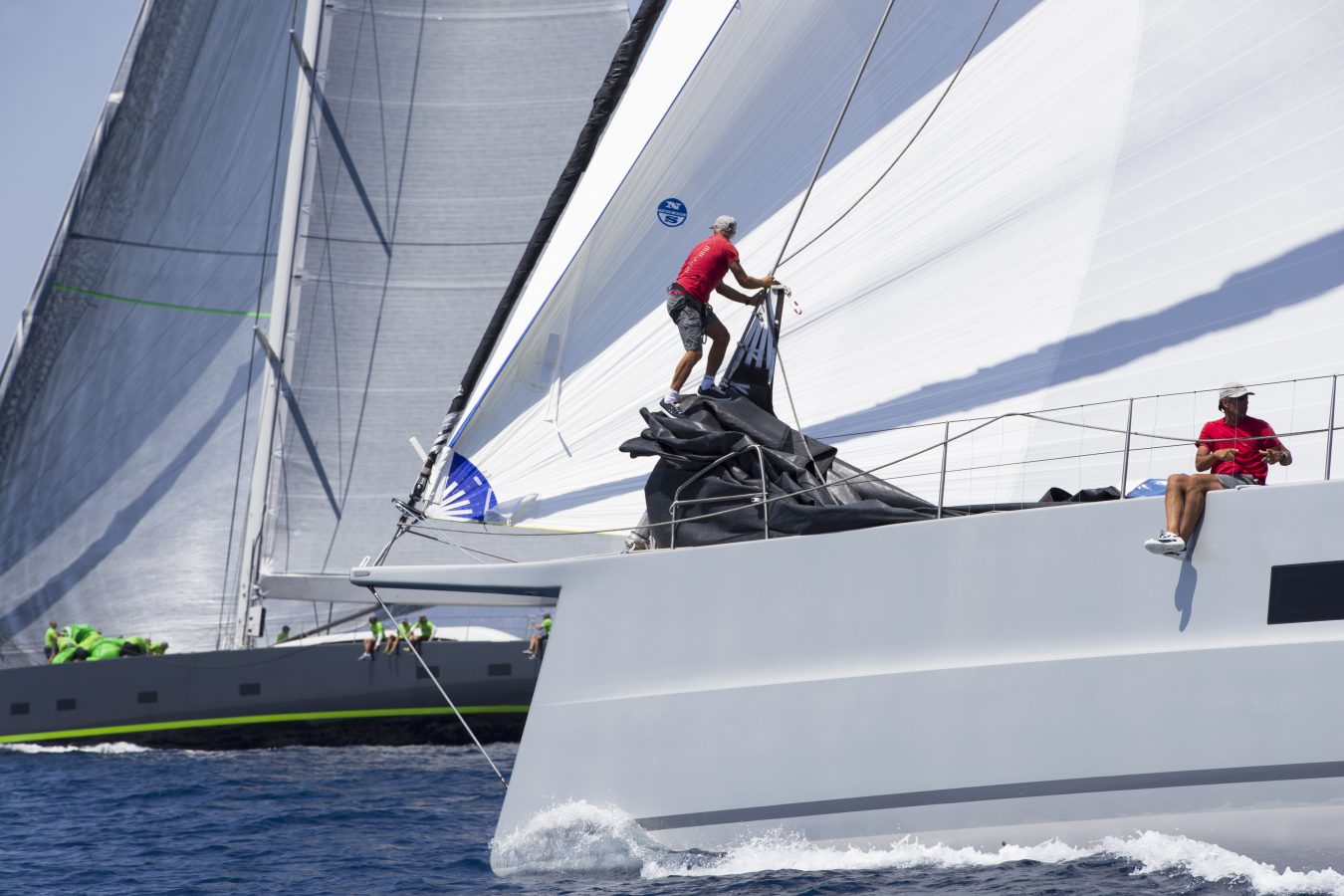
22ND ANNUAL SUPERYACHT CUP
22nd ANNUAL SUPERYACHT CUP
North Sails Powers Overall and Three Class Wins In Palma
© Claire Matches / SY Cup
The Superyacht Cup, Europe’s largest and longest running superyacht regatta this year featured 16 yachts, beautifully designed, and sailed by the best for a chance at the 2018 title. As always, Palma delivered fantastic racing conditions, setting the scene for a beautiful showing of some of the largest racing yachts in the world. Starts occurred in two-minute intervals, giving spectators watching ashore action-packed final moments before each fleet took off. Racing was also full of excitement for crews, with some classes having match-race style pre-start techniques and finishes within seconds of each other.
“It was fantastic out there today. Great conditions here in Palma with a nice nine to 12 knots sea breeze, and quite challenging at times. I like this place- It’s really special. The unique geography puts a bend in the wind that you have to get right every time. The first race is always pretty key. Anything is possible,” commented Cameron Appleton, onboard Highland Fling.
The breeze built over the duration of the week, keeping the racing close and competitive. Some teams fared well in the lighter air within their class, like Highland Fling who won their first race of the event. Others saw improvements come as more breeze filled in throughout the week. Points were tight in each class making every second count at the finish, especially going into the final day of racing. Many scores were within one point, and for some teams it came down to tie-breakers, showing how competitive each yacht and crew is.
© Claire Matches
“We had a good tussle with Svea in both races,” commented Velsheda’s tactician Tom Dodson. “They showed good speed in the first race to cross ahead on the first beat. In the second it all worked for us, we got the cross and hung on. Both boats are owner-driver and sailed to such a high standard – if we get everything right we can still win races against the newer boats.”
It was impressive to see the two J Class superyachts match racing, close in points and even closer on the race course. “We got our start right, taking the right-hand side of the first beat,” commented Dodson, “We weren’t a 100% sure about it, but we were pretty sure that side would work out, and then we saw a couple of the locals going that way, so we felt pretty good about our decision.”
After three days of racing, only the fastest and most consistent teams survived. Clients on 33m Win Win took 1st overall in Class A, with Saudade and Highland Fling close behind in second and third overall. J Class Velsheda won the tiebreaker in Class B, with a total of six points. Q the 51.7m Dubois took 1st in Class D, the Corinthian class, battling each race against 46m Scorpione of London.
Congratulations to our clients on a successful week in Palma!
J Class SY Velsheda, Winner of Class B. © Claire Matches / SY Cup
“We were honored to win the event on the oldest boat in the fleet that is still helmed by her owner of 30 years. Velsheda herself is 85 years old this year. I and many of the crew have been with her since 2001.”
–North Sails Tom Dodson, Auckland NZL
Win Win, Winner of Class A © Claire Matches / SY Cup
“It was an absolutely superior event with some of the best sailing you can imagine. 28 degrees and 10 – 15 knots sea breeze and Palma showing herself from her best side. First time on Win Win which I enjoyed a lot. Great owner with a great team. Tough but great competition with Saudade and Highland Fling being within minutes of each other the whole way around in all the races. Already looking forward to next year. This event is a must do event regardless of which class you are racing in.”
– North Sails Jens Christensen, Herlev, Denmark
© Claire Matches / SY Cup
“Sir Peter Harrison’s Sojana was incredibly sailed by his long-standing and loyal crew. She has been optimized for speed and shows true elegance when under sail. Great conditions on the Bay of Palma with sea breeze and sunshine suited her, giving her everything she needed to perform to her fullest. Her crew enjoyed racing and was very pleased having a great season under their belt. Great times spent on and off the water to top off our season after placing second in St Barth’s, first in Antigua, and third here in Palma behind the illustrious Velsheda.”
-North Sails Brad Favelle, Palma, Spain
© Claire Matches
“This year’s Palma SY Regatta was well run and a blast to sail in. Palma delivered perfect champagne sailing conditions with 9 – 14 knots of wind and flat water. I raced on the Swan 115 Highland Fling in Class A where there was a 3 way tie for first going into the last day. I can’t remember a superyacht regatta where the racing was this close.”
– North Sails Mike Toppa, Ft. Lauderdale, FL
© Claire Matches / SY Cup
“The racing was very close in our class. Conditions were great and each day our team improved. The onshore social aspect of the regatta was also a great time. Our crew won the SUP race after day two of racing. It was a lot of fun.”
-North Sails Marc Patino, Palma, Spain
Q, Winner of Class D © Claire Matches / SY Cup
It takes many hands to do big work on the SY Svea © Claire Matches / SY Cup
© Claire Matches / SY Cup
© Claire Matches / SY Cup
© Claire Matches / SY Cup
© Claire Matches / SY Cup
© Claire Matches / SY Cup
© Claire Matches / SY Cup
2018 Superyacht Cup
Class A
1
Win Win
2
Saudade
3
Highland Fling
Class B
1
Velsheda
3
Sojana
4
Svea
5
Ganesha
6
Missy
Class D- Corinthian
1
Q
* Denotes Partial North Sails Inventory
READ MORE
READ MORE

PETER KECK WINS THE C SCOW NATIONALS
2018 C SCOW NATIONALS
Congratulations to Peter Keck – A Win Without a Question!
Start line at ethe 2018 C Scow Nationals ©Larry Kmiecik
The C scow National Championship was hosted in the beautiful Lake Delavan with sixty-three teams attending from thirteen different fleets. Peter Keck, alongside with crew Ben Porter, placed his name on the C Scow National Championship trophy for the fourth time (2018, 2014, 2005, 1997).
Keck battled a tough competition including four past National Champions (Gluek, Skotarzak, Eckert and Reilly). Keck was, by far, the most consistent C Scow on Delavan Lake last weekend. He started out his domination with a bullet in the first race and he never took his foot off the pedal, finishing with a 2, 3, 2, 7 and no need to sail the last race.
North Sails continues to bring speed to the C Scow Class – This year’s National Championship saw North clients finish 1,3,4,5,6,7,8,9,10. Unparalleled performance.
Learn more about the fast C Scow sails.
2018 C SCOW NATIONAL CHAMPIONSHIP
1
N 181 / Peter Keck
3
B 12 / Kent Haeger
4
A 14 / Paul Reily
5
OO 99 / Dave Keck
6
BL 3 / Patrick Lynch
7
E 111 / Mathew Prange
8
B 217 / Joe Skotarzak
9
A 136 / Ed Eckert
10
A 36 / Tom Eckert
* Denotes Partial North Sails Inventory
©Larry Kmiecik
©Larry Kmiecik
©Larry Kmiecik
©Larry Kmiecik
READ MORE
READ MORE

KIELER WOCHE 2018
KIELER WOCHE 2018
North-powered Clients Claim Multiple One Design Class Victories
Matt Belcher & Will Ryan reign again in the mens 470, sweeping yet another title © Sasha Klahn
Kieler Woche, the world’s biggest sailing event attracted roughly 4,000 sailors from 50 nations for the nine-day event in Northern Germany. Entries range from ORC, to Olympic Dinghies, to paralympic teams. With the Sailing World Championships in Aarhus later this year, many olympic hopefuls used Kieler Woche as a training event. In the 470 fleet, Olympic Silver Medalist and reigning World Champions Matt Belcher and Will Ryan continued their streak of success, snagging the title over Swedish team Anton Dahlberg & Fredrik Bergstrom. In the women’s fleet, Silvia Mas & Patricia Cantero won the medal race to secure their victory from Maria Bozi & Rafailina Klonaridou, from Greece.
©Sascha Klahn
North Sails clients also filled the top end of the Finn fleet, with Kiwi Josh Junior taking the championship after finishing fourth in the medal race. Second place in the medal race secured second place for Anders Pederson. Rounding off the podium was current European Champion, Ed Wright.
The OK Dinghy fleet had an impressive sixty-one boats racing from all over the world including Australia and New Zealand. Congratulations to Jan Kurfeld for taking the overall win. Jan was using his North M-20 Mainsail, which has again proven itself to be a championship winning sail. Congratulations to our clients on yet another successful week in Kiel.
Jan Kurfeld, winner of the OK Dinghy Class © www.segel-bilder.de
© www.segel-bilder.de
Returning J/24 champion, Mike Ingham and crew on Nautalytics, enjoyed their time in Kiel and are already looking forward to next year. After 11 races and one discard, Mike racked up four bullets, and had five races within the top five overall, making his last race more of a victory lap. Congrats to Mike and team on sailing a great regatta.
Full Results
©www.segel-bilder.de
Keeping an eye on the competition, close behind ©Sascha Klahn
© Sascha Klahn
Kieler Woche 2018
J/24
1
USA 5443 – Mike Ingham
OK Dinghy
1
GER 18 – Jan Kurfeld
Finn
1
NZL 24 – Josh Junior
470 – Men
1
AUS 11 – Matt Belcher & Will Ryan
470 – Women
1
ESP 18 – Silvia Mas & Patricia Cantero
420
1
GER 56086 – Felix Kaiser & Jonas Royla
J/70
1
GER 929 – Bjorn Beilken
READ MORE
READ MORE
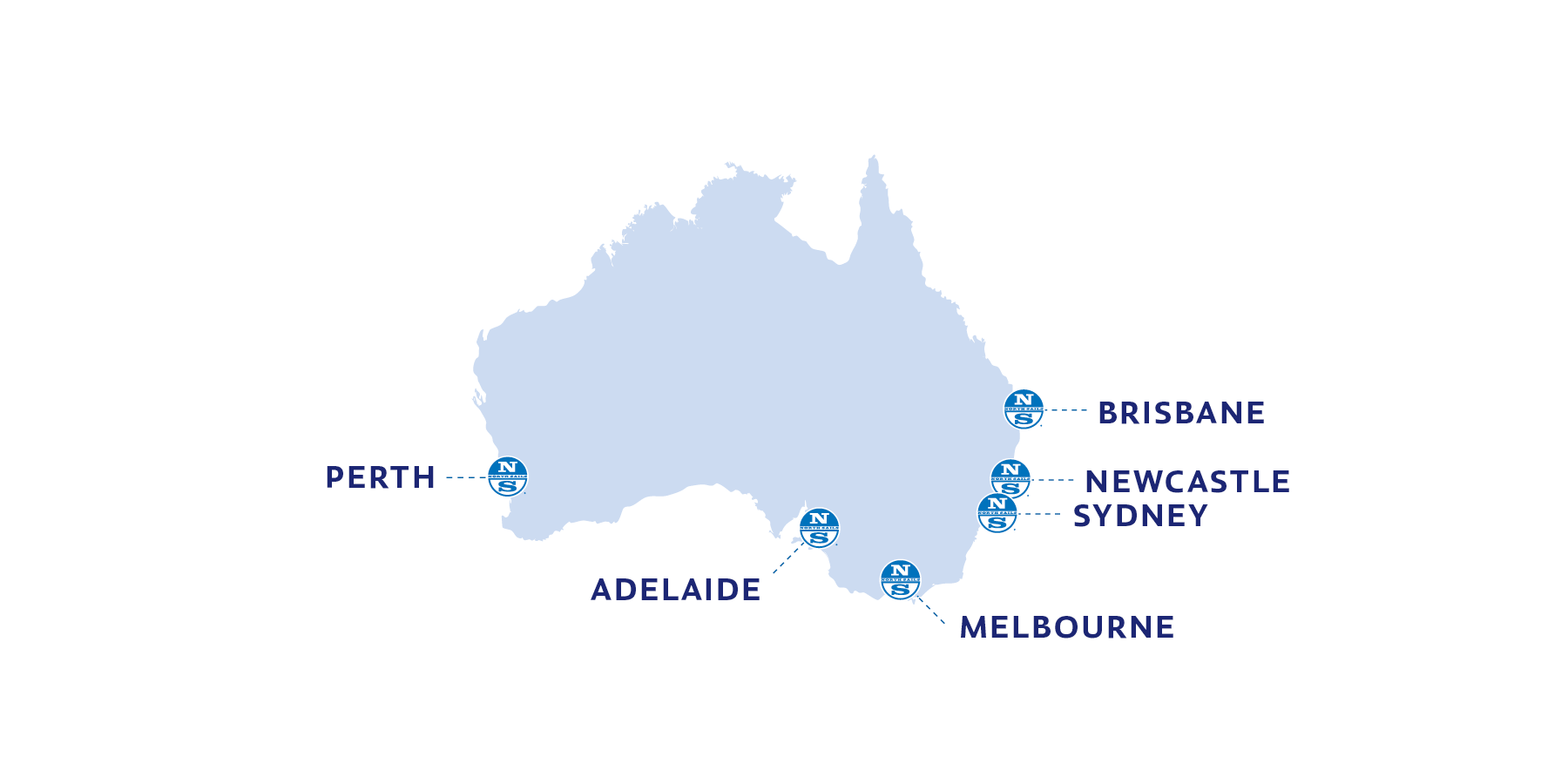
NORTH SAILS ARE HERE FOR YOU
NORTH SAILS ARE HERE FOR YOU
From choosing the correct sail for your needs to making the most of your sails on the water our team of experts all over Australia are here to help
North Sails are committed to designing, producing, delivering and servicing the best sails in the world, no matter what your boat or style of sailing.
Within Australia, North Sails has a network of seven sales and service centers providing, coverage Australia-wide. Our sailmakers have an average of 20+ years in the industry, with experience in every size and type of boat and sails from small One Design classes such as Sabot’s to the largest Superyacht’s in the world.
Meet Some of The Australian Team
Michael Coxon
In 1978 while running his own sail loft, Michael was invited to become part of the North Sails network. He jumped at the opportunity and began work as the One Design Manager. In 1984 North Sails head office, based in the USA recognised Michael’s potential and invited him to purchase North Sails within Australia. His team has gone on to make one of the largest and most successful sailmaking operations. Over the years North has given Michael great sailing opportunities at the highest level worldwide and locally.
“I look upon each day of my career of over 40 years as a highlight. I left school to started a sailmaking apprenticeship, then owner/manager in my 20s and have enjoyed every day since, in particular helping my staff recognise their potential in our industry.”
Mark Bradford
Mark started sailmaking in 1987 and has 30 years of experience across all disciplines of the sport. Mark’s One Design background is in 125’s, 420’s, 470’s, Etchells, Star Class and Farr 40. This interest has seen him compete in 19 World Championships. He also has experience in the America’s Cup working with BMW Oracle from 2003-2007. He is currently the Skipper of Peter Harburg’s Black Jack sailing team.
Alby Pratt
Starting as an apprentice sailmaker in 1988, Alby has held almost every position within the loft: sailmaker, service manager, project manager, sales consultant and today sales manager.
“Dealing with great customers, a great group of people using the best technology everyday make working for North Sails a dream job.”
Aaron Cole
Aaron Cole is the Loft Manager in Melbourne. He is a former America’s Cup, Volvo Ocean Race & Audi MedCup sailmaker with 22 years experience. Aaron has a wide range of expertise in both offshore and inshore high-performance yacht racing. He’s competed in 16 Rolex Sydney to Hobart Yacht Races and is highly regarded as one of Australia’s top primary trimmers. Aaron’s vast knowledge of the very latest materials and sailmaking techniques offers customers the highest level of technology and service.
If you are interested in any North Sails products, get in touch with the team!
READ MORE
READ MORE
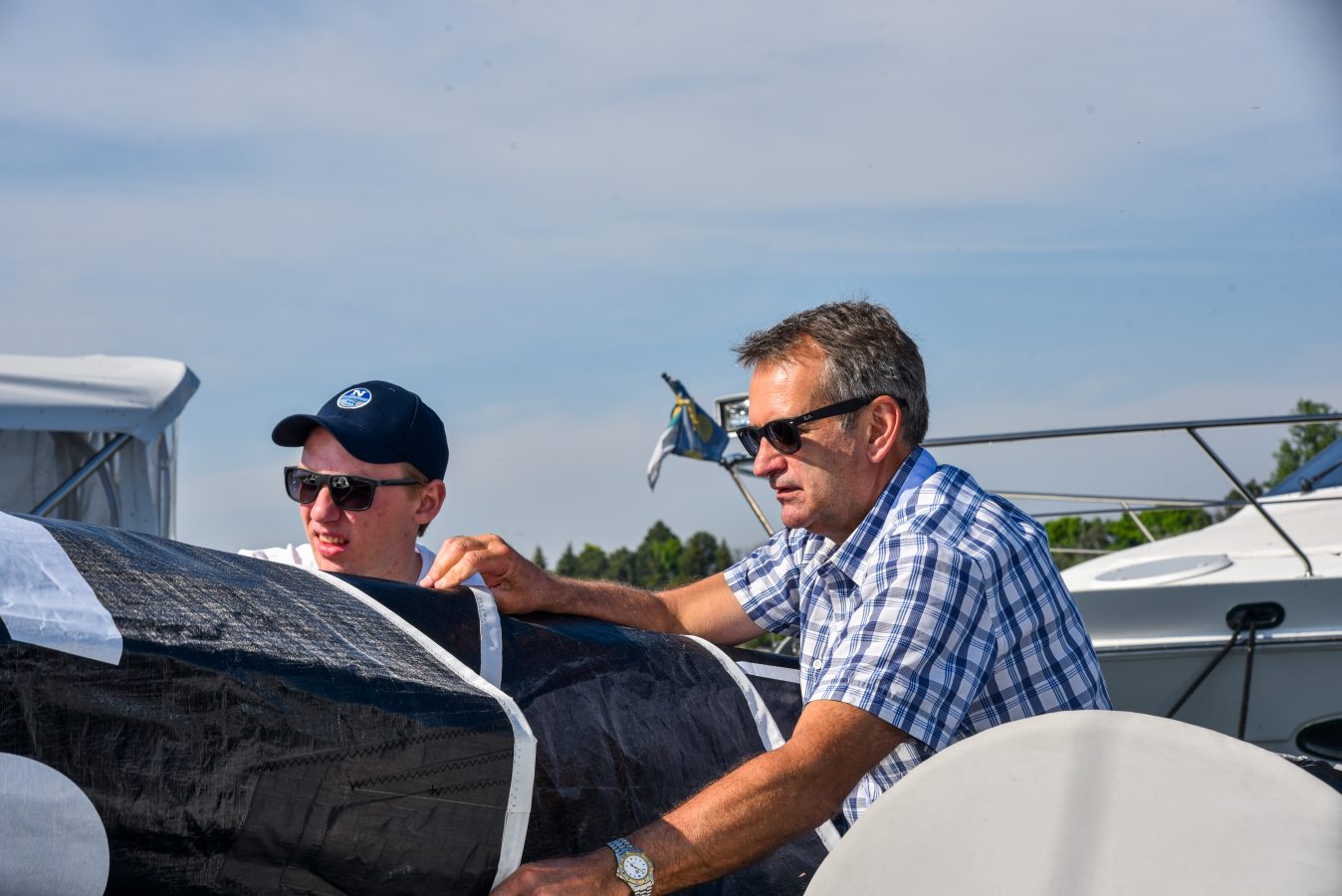
CUSTOMER SPOTLIGHT: AFTERBURN
CUSTOMER SPOTLIGHT: AFTERBURN
Soto 40, A True Downwind Flyer
It's hard to miss her walking down the dock. A Soto 40 out of Port Credit Yacht Club, Afterburn, is looking to turn heads this season. Owners Craig Pirie and Darren Gornall worked with local North Sails Expert Hugh Beaton to improve their sail inventory for 2018. The end result? A new 3Di RAW Square Top Mainsail and A2 Spinnaker. The new sails arrived days before the Susan Hood Trophy Race, an overnight distance race around Lake Ontario, with just enough time to be installed. The North Sails Toronto team delivered the sails with Hugh to the boat, and Hugh spent the day before the race installing both sails to ensure a perfect fit. Afterburn had a gorgeous start to the Susan Hood on the Friday evening with a fantastic breeze and a beautiful sunset backdrop. She finished at 5:42am with a corrected time of 12:00:01. Following the race, Hugh had the following remarks on how she performed with her new sails:
"Sailing the Soto 40 Afterburn in the Susan Hood was a real pleasure. She lived up to her billing as a downwind flyer, hitting 15-16 knots pretty easily during the first half of the leg to Niagara. We started with the Masthead Code 0, and then peeled to the A2 about 90 minutes into the race as the breeze went aft. True wind speed 17-18 and a true wind angle of 145 degrees is a great combination for this boat." – Hugh Beaton, North Sails
READ MORE
READ MORE

SUMMER INTERN: REGINA TREJO
SUMMER INTERN: REGINA TREJO
Tell us about yourself.
I am from Chicago and grew up in a large family of sailors. I am a rising sophomore at Syracuse University, studying television and accounting. I’m on the sailing team, getting great collegiate racing experience against other competitive schools. In my free-time I love to read, take photos, and of course, be on the water.
How long have you been sailing and/or involved in the marine world?
I have been sailing my entire life. As a kid, I sailed with my family on our Alberg 35, and eventually raced dinghies and keel boats as I got older.
What are you most looking forward to about working at North Sails?
I am looking forward to learning more about sailmaking and meeting some great local sailors. Working for North Sails is a great opportunity to further immerse myself into one of my passions.
What’s your favorite part about Summer?
I love being able to travel and sail in warm weather. Spring and fall sailing in upstate New York is too cold! It's nice to be able to relax and have fun on Summer break.
What boats do you race (outside college)?
I race the Vanguard 15 weekly, and will jump on any keel boat that I have the opportunity to be on. Recently, I sailed on a Santana 30-30 and a Melges 24.
What are you focusing on during your internship at North Sails?
I am focusing on how keel boats work and how different sails are employed under certain conditions.
If you could be a part of any racing program, which would it be?
I would love to sail vipers. When I raced against them recently, they were so powerful downwind and looked like a perfect mix between dinghy boats and keel boats.
When is your next regatta?
I do not know what my next regatta is quite yet, although I have always wanted to participate in the Race to Mackinac or the Tri-State.
When you sail, do you prefer to be at the helm?
When sailing dinghy boats I am most comfortable as a crew member, but I love to skipper when the opportunity arises. On keel boats I enjoy trimming kite.
What’s your earliest memory of being on the water?
My earliest memory sailing is wearing my Sesame Street life jacket with Elmo and Big Bird on it!
READ MORE
READ MORE

CUSTOMER SPOTLIGHT: RUM KIST
CUSTOMER SPOTLIGHT: RUM KIST
Weeknight Racing Powered By New 3Di RAW Sails
A gorgeous Tuesday evening with a SW breeze allowed for a great night racing with Bill Morland on Rum Kist, a Beneteau 10R, out of Etobicoke Yacht Club. Local North Sails Expert Hugh Beaton came by to race with Morland, who's owned the boat for a little over a year now. Hugh offered his tuning tips for their new 3Di RAW main and jib.
"The 10R was responsive and easy to get into the groove upwind. Conditions were ideal with 10-12knots of wind, making for a fast trip around the course. The new 3Di mainsail was very responsive to main sheet tension, giving us a nice high mode with no loss in speed." - Hugh Beaton, North Sails
READ MORE
READ MORE

CYC RACE TO MACKINAC 2018
CHICAGO YACHT CLUB RACE TO MACKINAC
Check Off Your Race Preparation List.
At North Sails, our mission is to provide you with expert repairs, maintenance, and upgrades in a timely manner. Whether you race or cruise, your sails are a major investment, and we are committed to helping you maximize their performance and lifespan.
With the 1110th Chicago Yacht Club's Race To Mackinac approaching, we want to make sure you are covered and your sail care preparation is taken care of. Bring your sails in for that vital tune up and order your race supplies before you cross the start line on July 21st.
READ MORE
READ MORE
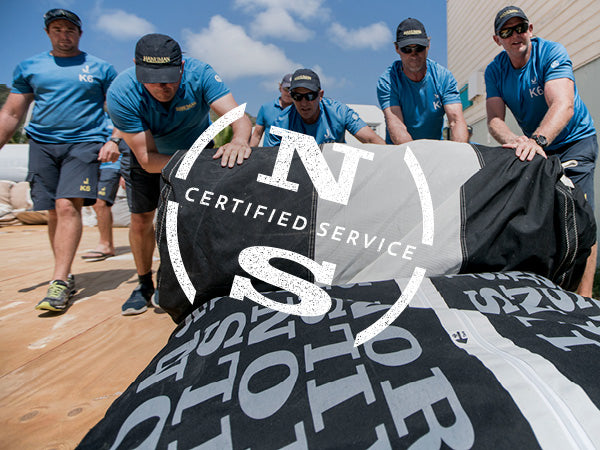
CYC RACE TO MACKINAC 2018
CHICAGO YACHT CLUB RACE TO MACKINAC
Check Off Your Race Preparation List.
At North Sails, our mission is to provide you with expert repairs, maintenance, and upgrades in a timely manner. Whether you race or cruise, your sails are a major investment, and we are committed to helping you maximize their performance and lifespan.
With the 1110th Chicago Yacht Club's Race To Mackinac approaching, we want to make sure you are covered and your sail care preparation is taken care of. Bring your sails in for that vital tune up and order your race supplies before you cross the start line on July 21st.
READ MORE
READ MORE

BAYVIEW MACKINAC RACE 2018
2018 BELL'S BEER BAYVIEW MACKINAC RACE
Check Off Your Race Preparation List.
At North Sails, our mission is to provide you with expert repairs, maintenance, and upgrades in a timely manner. Whether you race or cruise, your sails are a major investment, and we are committed to helping you maximize their performance and lifespan.
With the 2018 Bell's Beer Bayview Mackinac and CYC's Race To Mackinac approaching, we want to make sure you are covered and your sail care preparation is taken care of. Bring your sails in for that vital tune up and order your race supplies before you cross the start line on July 14th.
If you're taking on both Mac races this year, don't hesitate to take advantage of our Concierge Service program.
Once you arrive on Mackinac Island after the Bayview Mac Race, drop off your sails with our team by July 17th and they will ensure they are delivered to Chicago for any repairs needed.
If you are competing in the Ugotta Regatta, J/105 North Americans or J/35 North Americans, please ask our team about the concierge service from the Chicago Mackinac to these races.
READ MORE
READ MORE
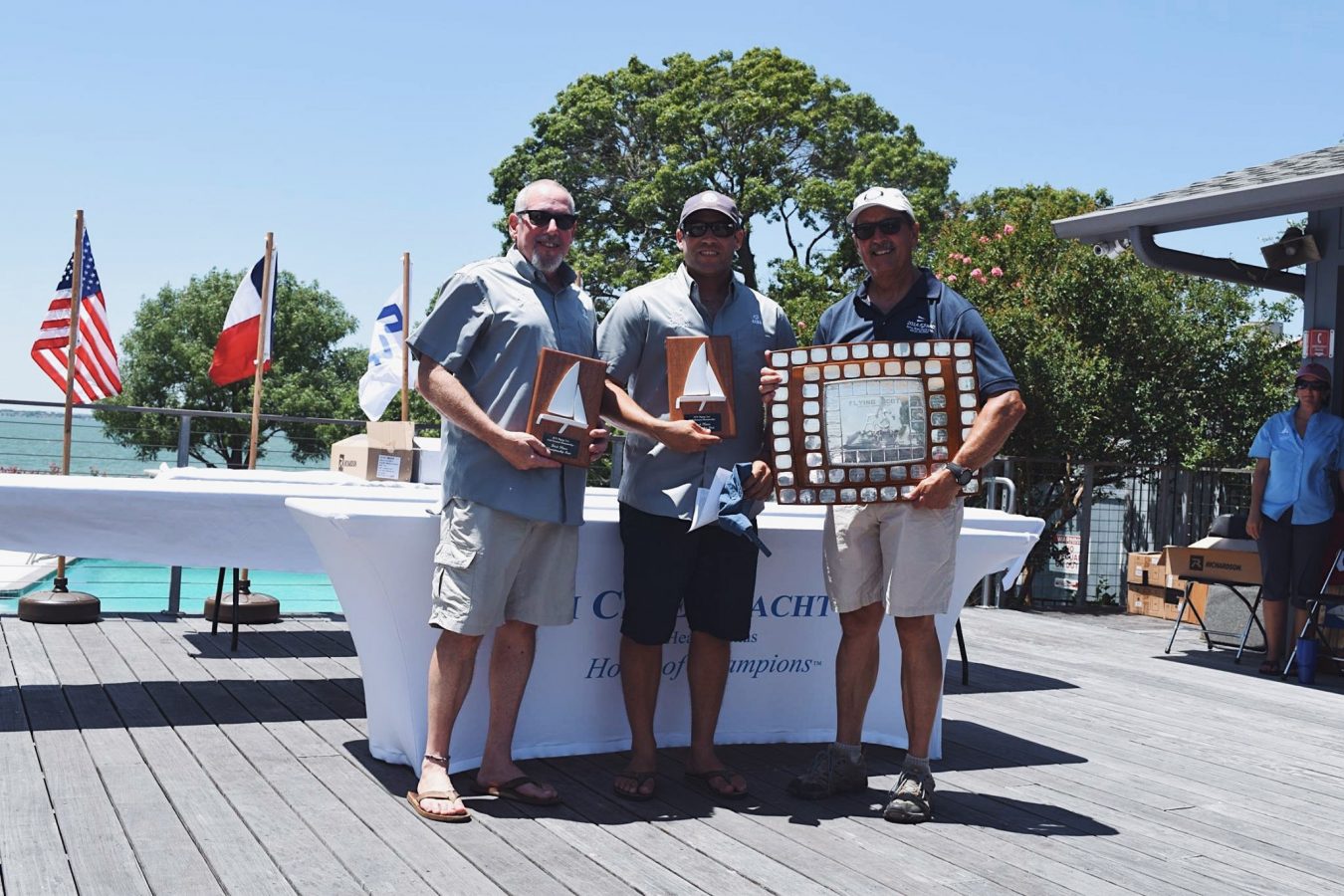
LESSONS LEARNED AT FLYING SCOT NORTH AMERICANS
LESSONS LEARNED AT THE FLYING SCOT NORTH AMERICANS
Expert Zeke Horowitz Shares His Tricks Of The Trade
Zeke and Jay Horowitz, 2018 North American Champions © Steve Bill
The 2018 Flying Scot North American Championship at Rush Creek Yacht Club in Heath, TX could have been called the “How to Run a Major Championship Clinic.” From the outset of the event, it was obvious that RCYC along with Fleets 209 and 23 had pulled out all the stops to make this regatta stand out as an all-time great in this class’ rich history. We had a super energetic and hard working Regatta Chair in Mike Brown, who was extremely active in helping make sure everyone had what they needed, and felt organized and welcomed. He had ensured that this sentiment was expressed at every turn from registration to measurement to launching and hauling out. There were plenty of cold waters (and other beverages…) and smiles at every turn. But perhaps the biggest shout out needs to go to local legend Bob Gough who recruited an absolutely World class PRO in Mark Foster (a sailing legend in his own right) who, in turn, assembled a brilliant team of volunteers who kept the racing as square and fair as possible in conditions that regularly delivered 30+ degree wind shifts. The RC communication on the radio was perfect and seemingly miraculously, they were always ahead of the big shifts and velocity changes. Kudos to the tremendous team that put together an absolutely flawless event.
I don’t think anyone on the racecourse managed to make the sailing look as easy as the RC made the race management look. We were sailing on the Southwest corner of the Lake so it wasn’t always easy to see the breeze before it touched down right off the coast. It was very common for a beat to feature three or four 30-degree wind shifts with the pressure ranging anywhere from eight knots all the way up to the high teens. You could quickly watch a boat go from being in your mainsail window 1,000 yards to leeward of you to all of the sudden being directly on your bow 1,000 yards in front of you! Needless to say, keeping your wits about you was important but not easy. These condition is easy to get frustrated in and nearly impossible to always be in the right place at the right time. But I choose to think of this condition as one of the easiest conditions to make decisions in. Some readers who experienced this first hand might be shutting their computers and decidedly never listening to me again… but first let me explain!
When sailing in these conditions on a windward leg that is around a mile long, you are very rarely going to be in the same breeze as your competitors (especially those on the other side of the course). You can’t control what the breeze is doing, and you can’t control the decisions your competitors are making. So, all you can worry about is getting your boat to the weather mark as best you can in the breeze available to you. It’s as simple as: “Am I lifted or headed and am I in the most pressure imminently available to me?” THAT’S IT.
We learned time and time again that the breeze was oscillating and it always seemed to come back eventually. Even when it seemed really bleak, the new pressure would drop in, the direction would shift back, and you could tack and be right back in front with leverage. This was not a condition where you could chase shifts or puffs.
When we saw the boats on the opposite side of the course go way up in a big lift with breeze that we didn’t have we would try to take a deep breath and come back to, “am I lifted or headed? And am I in the most breeze imminently available to me?” That was the only question we would make decisions on. Never, “we need to go get what they have.” We couldn’t get what they had… It wasn’t available to us. So if we were still in a relative lift and were still heading towards the most breeze imminently available to us, we would hang in there and wait until our moment to go up in a big lift with pressure that the other guys didn’t have. If you tack to try to go get something that other people on the other side of the course have, by the time you get there, it’s going to be gone and the boats you just left on your side are now going to have their shot. That’s called being “out of phase.” There were countless occurrences of this at the NAC’s but 9.9 times out of 10, the team that stayed patient and disciplined and kept sailing on their lift, would win out in the end. So to me, this is simple racing because all you can worry about is yourself and sailing on the best number in the best breeze available to you. Note that in this condition you oftentimes have to value sailing on the right tack over clear air. Staying on the lift in dirty air was usually better than sailing a big header to clear your air. This is tough decision to make but it’s a very important one for staying in phase! When in doubt point your boat at the mark.
Having top notch boat speed makes being patient a whole lot easier.
The majority of the regatta was sailed in flat water and more than ten knots. This is pretty powered up conditions for the Flying Scot and there were a couple of sail trim items we focused on to make sure our speed was there. Since we were rarely looking for power and the water was so flat, relative to how much breeze there was, we focused on trying to achieve a nice flat sail set up. If we had the same amount of breeze but more waves/chop, we wouldn’t have been so aggressive on the flat sails. We had the jib halyard tension set so the luff of the jib was mostly smooth. We still stuck to having it a touch too loose, but it was a click tighter than it would have been if there was a bit of chop. If there were any wrinkles coming off the snaps, they weren’t longer than about six inches. We rarely used weather jib sheet because we didn’t need any extra power in the foot and we sheeted the leeward sheet a tad harder than usual too. We had the leech tell tale just on the verge of stalling as soon as we were up to speed. This helped us keep the jib nice and flat and achieve adequate pointing. The foot of the jib had a hint of curl when we were fully trimmed. We set the main halyard so that the luff was smooth when sailing downwind.
In the breezier conditions this meant that the luff was a bit loose for the upwind portion of the race. So we played the cunningham more often than usual so we could set the “speed wrinkles” coming off the luff. The wrinkles at the bottom of the main came off the luff and made it about half way back towards the leech. The wrinkles above that one got progressively shorter (closer to the luff) as they made their way up the sail. Above the vision window in the luff of the main, the luff was mostly smooth. So in the biggest breeze we had we were pulling the cunningham grommet down by up to about four inches to keep our speed wrinkles where we wanted them. Lastly, we made sure the outhaul was nice and snug to keep the foot of the main flat. There was a noticeable tension wrinkle in the foot when we weren’t trimmed in. I would have called our outhaul tension 90%. After that it was all about playing the vang and main sheet through the puffs and lulls to try to achieve a steady angle of heel. Having a crew counting the puffs and lulls so the skipper can be ready to make the appropriate adjustment was key.
I’d like to thank all of the dedicated Flying Scot class members and class officers for all the hard work making it down to Rush Creek Yacht Club and helping to create the type of environment that makes everyone want to keep coming back. This is a special boat and a special fleet and it would be nothing without all of the spectacular personalities that define it. We’re looking forward to seeing everyone again real soon!
Randy Pawlowski and Rafael Melendez, winners in the Challenger Division. © Steve Bill
READ MORE
READ MORE
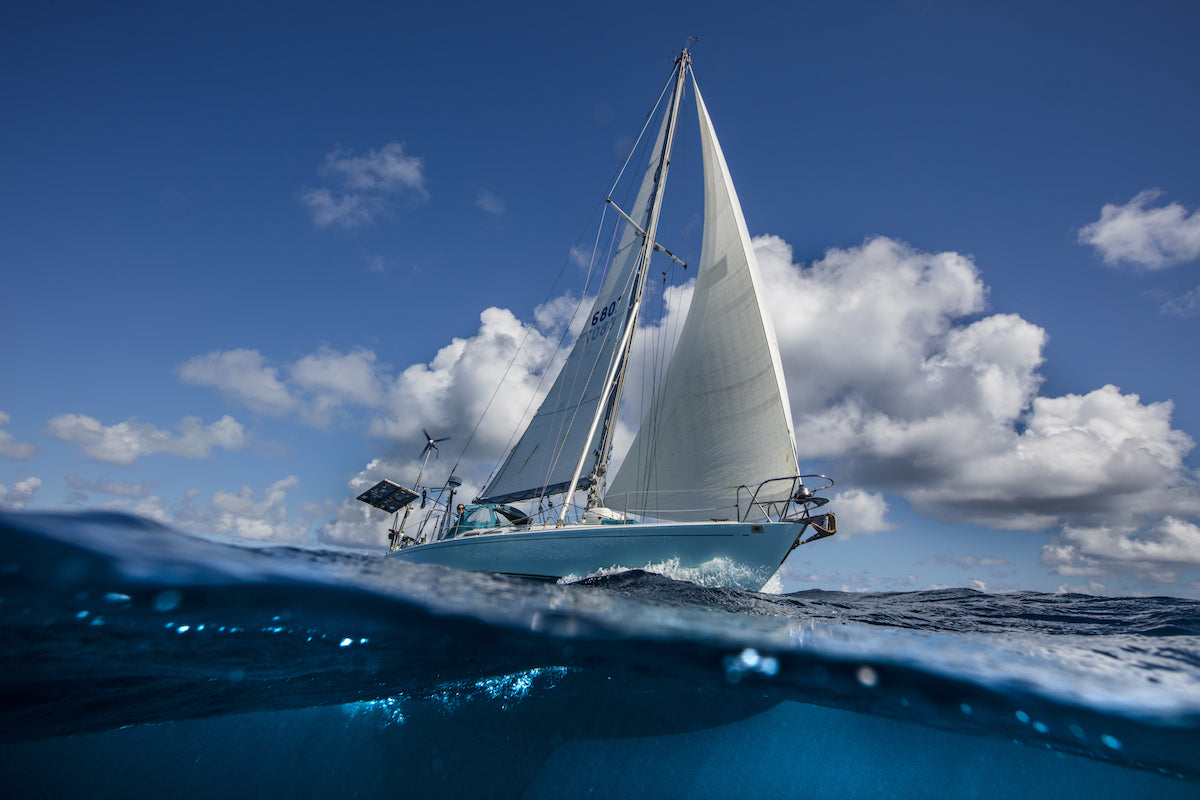
3Di NORDAC: CRUISING ESSENTIAL
North Sails launched a cruising revolution in June 2017 with the introduction of 3Di NORDAC. The product promised to deliver a better cruising experience for a market that had not seen true product innovation in over 60 years. Today we’re celebrating the team that worked so hard to bring 3Di NORDAC to market, and our customers around the world who provided us with valuable feedback.
3Di Technology, Adapted for Cruising
“We envisioned redefining the cruising sail market. We felt the cruising market deserved a sail that would perform better than traditional dacron without sacrificing durability. To deliver that vision we set out to leverage North 3Di technology, which is the sail construction choice of the world’s top ocean racing teams. 3Di NORDAC provides optimal sail shape holding for longer, which ultimately means more value for the cruising sailor.” -Bill Fortenberry, North Sails Global Market Segments Manager
3Di TECHNOLOGY
Pittman Innovation Award
3Di NORDAC was awarded SAIL Magazine’s 2018 Pittman Innovation Award in the cruising category. “North has combined the great cost-effectiveness and durability of traditional sails with the 3Di process…a win-win for cruising sailors everywhere.” -Charles J Doane, SAIL Magazine Editor
READ MORE
It Started As An Idea…
“We started exploring ideas for a new product for the cruising market in 2015. We saw an opportunity to create an affordable white sail that would have all the benefits of 3Di. We felt confident that the product would change people’s cruising experience for the better, and a year later, over a thousand boats are sailing with 3Di NORDAC. It’s very rewarding to hear positive feedback from boat owners experiencing the 3Di difference for the first time.” -Dan Neri, CEO of North Sails
LEARN MORE
Testimonial
“Our new 3Di NORDAC mainsail and genoa continue to amaze us. Both sails have a shape and finish that rival the best sails I’ve ever seen or used over my 40 plus years of sailing. Even the roller reefing genoa offers exceptional upwind performance. We are exceptionally pleased with these sails.” -Steve Fredrick, Beneteau First 42, USA
3Di NORDAC REVIEW
By The Numbers
One year in, 3Di NORDAC has been an undeniable success for both North Sails and its expanding customer base of small to medium size cruising boats. Patented North 3Di technology offers superior performance with traditional polyester materials.
READ MORE
READ MORE
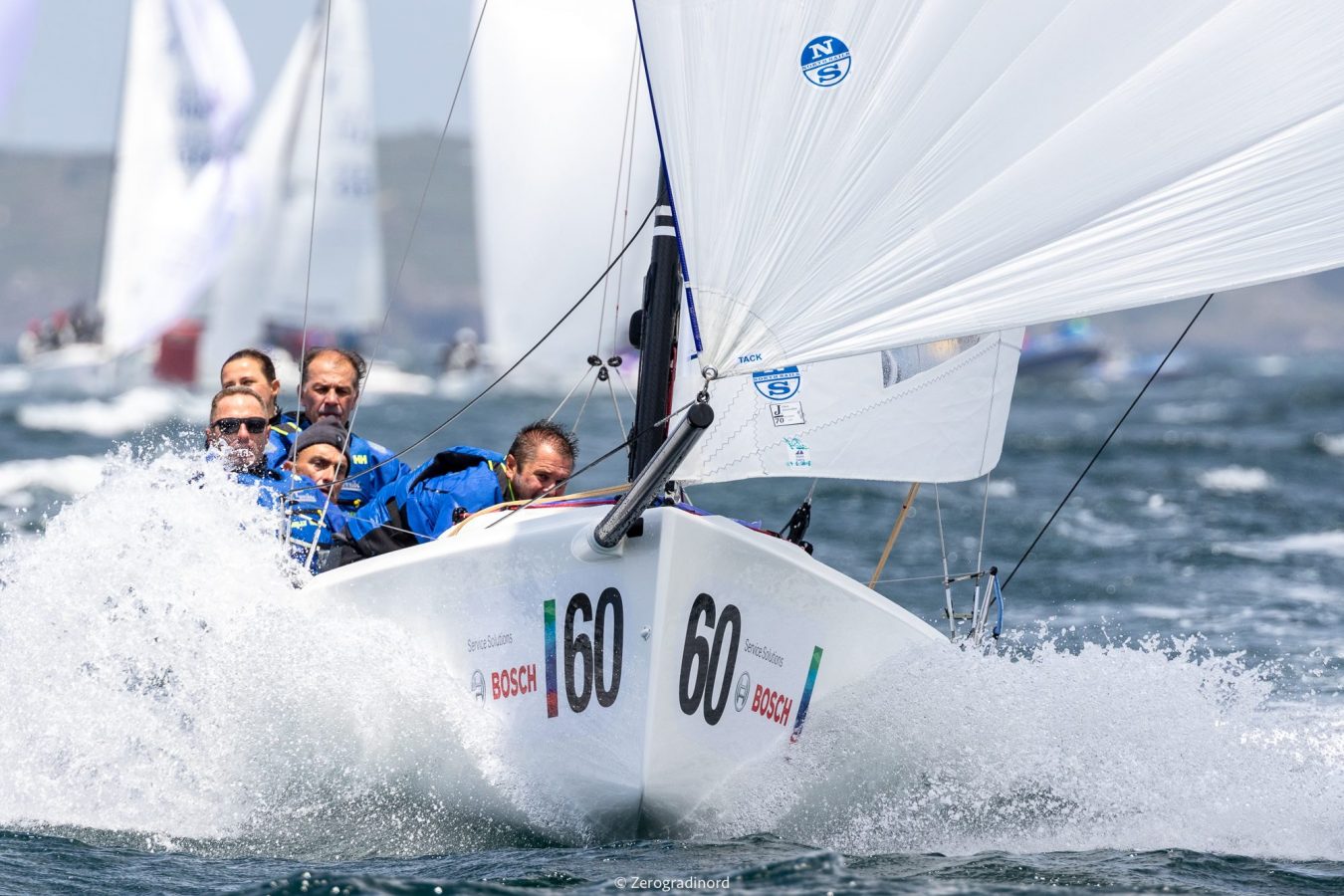
NORTH CLIENTS STORM J/70 EUROPEANS
NORTH CLIENTS STORM J/70 EUROPEANS
Alberto Rossi’s Enfant Terrible Continues Winning Streak in Vigo, Spain
Team Enfant Terrible, 2018 J/70 European champions. © Mauro Melandri | Zerogradinord
Sixty-nine boats met in Vigo, Spain for the 2018 J/70 European Championship. The heavy North-Westerly Atlantic winds came in full force, making for a beautiful week with exhilarating planing conditions. The title came down to the last leg of the final race. After receiving a black flag (DSQ) in race eight, Enfant Terrible was playing catch up towards the end of the regatta. Their win in the final race gave them a one point lead over second place Relative Obscurity, making Alberto Rossi and his team the new 2018 European Champions!
Rounding off the podium in first for corinthian division was Luis Arriola and his team onboard MarNatura. The local Vigo team put in a spectacular performance placing ahead of most the professional teams, showing true local spirit. What is extra special about this team is that the crew members are under 25 years of age, with 22-year old Luis on the helm proving that the J/70 is not just for professional sailors. Second place in the Corinthian division was Paolo Tomsic and team onboard La Femme Terrible, finishing in seventh place overall.
The fight at the top was not just between these three boats. A stand-out performance by Gustavo Doreste and his Spanish team onboard FERMAX who scored a hat trick mid-week, with three bullets in a row, matching the number of victories to the first and second placed boats.
North Sails has confirmed their abilities to overcome the odds and downright speed, thanks to five of the top 10 all powered by North. Congratulations to our clients on a job well done! Our clients placed 1,3,5,7, and 9 out of 69 boats.
Alberto Rossi and team Enfant Terrible used North Sails XCS-1 mainsail, J-2 jib and AP-1 spinnaker.
2018 J/70 EUROPEAN CHAMPIONSHIP
1
Enfant Terrible / Alberto Rossi
3
MarNatura / Luis Arriola (1st Corinthian)
5
FERMAX / Gustavo Doreste
7
La Femme Terrible / Paolo Tomsic
9
Ewa / Krzysztof Krempec
Full Results
Team MarNatura, 1st place Corinthian Division. © J70 Class Association | Chris Howell
© J70 Class Association | Chris Howell
Team Enfant Terrible going fast downwind. © J70 Class Association | Chris Howell
© J70 Class Association | Chris Howell
READ MORE
READ MORE

ONE DESIGN DEBRIEF : ROAD TO J/70 WORLDS
ONE DESIGN DEBRIEF: ROAD TO J/70 WORLDS
Experts Collaborate in Three-Day Training Session in Newport, RI
North Sails one design experts met in Newport, RI for a three-day collaboration featuring North’s exclusive two-boat testing system. Attendees brought a range of expertise, from sail experts to sail designers, augmenting the further development and advancements in sail design, techniques, tuning, and boat speed. This on-the-water convention combined the intellect and talent of the North team from all over the U.S. Strength in design has kept North Sails ahead of the curve, and their commitment to excellence enhances future performance and evolving designs within North’s J/70 product line.
From left to right: Will Welles, Max Skelley, Eric Doyle, Jackson Benvenutti, Reed Baldridge, Mike Marshall, Tim Healy, Allan Terhune, Chris Snow
“We had an awesome in-house training session last week in Newport. It was great to have our J/70 team working together to learn as much as we could. The amount this group accomplished as a team this last week is incredible. It just goes to show what a strong team can achieve when we all work together. We all got pieces from each other and I am more confident than ever that we are working together to get the most out of the boat for our customers.”
– Allan Terhune, Sales Expert, North Sails Annapolis, MD & Chicago, IL
“It was an awesome three days of two- boat J/70 testing in Newport, RI in a variety of conditions. Some of our best sail designers and sailors worked together as one to improve sail designs, rig tuning and trim techniques. I was proud to be apart of this long-term recipe of making sure our customers have the fastest sails available and the best possible trim and tuning techniques and information. Just as North Sails dominated the highly competitive J/70 Europeans winning overall, five out of the top ten and top Corinthian, our North team was at home already working to make improvements for the the upcoming World Championship in Marblehead. It’s a recipe for success.”
– Max Skelley, Sales Expert, North Sails Annapolis, MD
“It was great to get together with the North One Design team in Newport. The energy that the younger guys bring combined with the experience of the veteran sailmakers really makes for a great learning and teaching environment. When we add in the technical expertise of our designer Mike Marshall in the coach boat, we have an incredibly strong team for developing sails. Lots of ideas about sail trim, boat set-up and sail shape were thrown around and tested and we have a much more detailed understanding of our product line and how to help our customers go faster throughout the wind range. I think everyone is looking forward to testing our ideas on the racecourse this summer leading up to the world championships in Marblehead.”
– Eric Doyle, Sales Expert, North Sails San Diego, CA
“It was excellent working with some of the best J/70 sailors in the world that strive so hard to make the fastest sails in the world go even faster! The two-boat testing system ran by Mike Marshall is simply unmatched providing real time feedback about sail trim, and boat speed, while coordinating this information with real time wind analysis at the same time. The system eliminates any unknown variables and allows us to focus on exactly how the different sail designs are working separately. It’s quite astounding how educational this process is, and how any kind of doubt can be so minimized. Our technology, research, and design efforts are simply unmatched in the sailmaking world.
–Jackson Benvenutti, Sales Expert, North Sails New Orleans, LA
“It was excellent to bring together a large group of J/70 experts from the North Sails team to evaluate our sail designs. As with any class, you have to try new things in order to improve, but the high level of the team helps to narrow those ideas into the best ones which can then be evaluated on the water with the help of the Two-Boat Testing System. Lucky for us, we had perfect conditions the confirm what is the best sail for our clients for the 2018 Worlds in Marblehead.”
–Mike Marshall, Sail Designer, North Sails Portsmouth, RI
“We had a great session with our One Design team last week evaluating and testing sails . Using our two-boat testing system was invaluable as it gave us accurate feedback as to what was happening on the water. Sometimes with small differences in boat speed and wind shifts over the course of a test it is hard to tell decisively which boat is performing better. With the two-boat system, the answers are clear. This is really valuable when evaluating what products we have and deciding what to look at in the future.”
-Chris Snow, North Sails San Diego, CA
“What a productive week of sailing with many of our J/70 gurus, sharing ideas and looking at sails. I had the pleasure of sailing with many of them who have been on the circuit over the last few years sailing with lots of different teams. Having Mike Marshall in the powerboat running our two boat system was invaluable at confirming our current sail line up is easy to tune, trim and go fast in a wide range of conditions that we saw over the week of testing.”
-Will Welles, Sales Expert, North Sails Portsmouth, RI
READ MORE
READ MORE
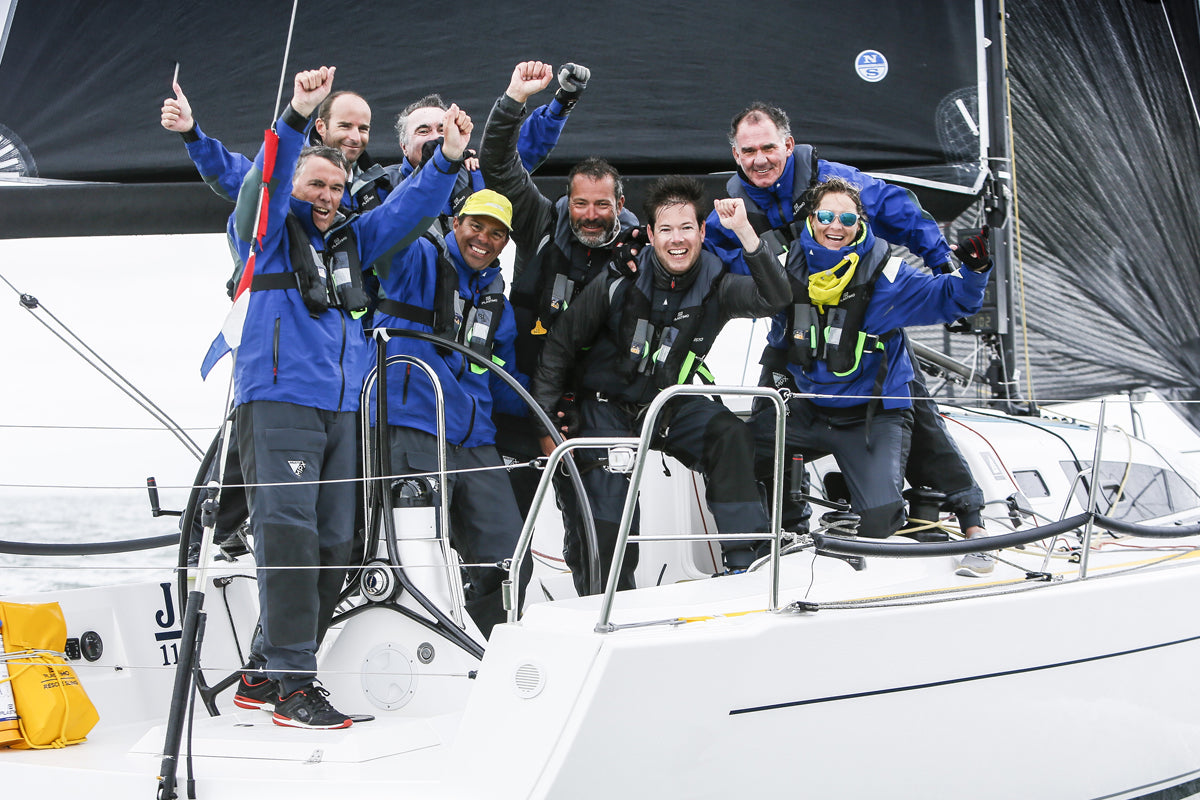
J LANCE 12 CROWNED IRC EUROPEAN CHAMPION
J LANCE 12 CROWNED IRC EUROPEAN CHAMPION
In The Heat Of Battle, The J/112E Sport-Cruiser Wins Title In Cowes
2018 IRC European Champions © RORC / Paul Wyeth
The IRC European Championship was a mixed bag experience for all competitors. The regatta consisted of a combination of short and long inshore races, windward/leeward courses and one Round the Isle of Wight race. The conditions started off with lighter winds, where the local boats used to their advantage. With the strong solent tides, this local knowledge was essential, especially for the shorter inshore races around the Solent. Mid-week, the Round the Isle of Wight race kicked off with winds of around 30+knots clocked at St. Catherine’s lighthouse. The majority of the class one boats finished this race in no time, using the downwind leg and their asymmetric designs to speed around the course and turn the corner before the foul tide turned against them. Round the Island is well-known for being a small boat race, as competitors can tuck in and out of the tide to make gains. Boats like Shaitan and Redshift in class three were challenging the 40-footers in class two with short runs, gybing into the shore to avoid the punching and unforgiving current.
Ino XXX, second place class two © RORC / Paul Wyeth
Each fleet was a mix of local racing boats with a few that travelled to compete in one of England’s most popular race courses. It was great to be challenged by different boats coming in from across Europe. In the end, the boats that were most consistent throughout the week and the teams who met the challenges of the mixed courses were the ones who came out on top. In Class One Tokoloshe II finished first overall, followed by Ino XXX. In Class Two, Elke came out on top with La Réponse close behind in second. Class Three was dominated by Didier le Moal’s J Lance 12.
J Lance 12 coming up to the windward mark © RORC / Paul Wyeth
The J/112E is fit for purpose and faired extremely well against other competitors in their division like the JPK 10.80, First 40.7, Sunfast 36, J/109, and X-37. Delivering utmost speed and versatility, her upwind game and downwind speed made her a tough boat to beat. Congratulations to J Lance 12 for your amazing performance, showing true speed while keeping things simple in the highly competitive conditions presented in Cowes.
“It is our third season on this type of boat, so we know exactly how it works,” continued le Moal. “We had a very, very good navigator – to be fast is one thing, but to be fast on the right side is perfect. We are not so good reaching, but upwind the boat is so fast, it helps you recover.” – Didier le Moal
J Lance 12’s crew consisted of skipper Didier le Moal, navigator/tactician Nicolas Lunven, Frederic Bouvier, Christophe and Cyrille Cremades, Jean Francois Nevo, Jean-Michel Roux, and Cyrille Testonare who are good friends and have been sailing with Didier for years. © RORC / Paul Wyeth
J Lance 12 was equipped with North Sails 3Di 780M RAW and 3Di 760S RAW main and headsails. Congratulations to our clients for your excellent results last week, and a special congrats to J Lance 12 on your new European Championship title!
Tokoloshe II, first place in class one © RORC / Paul Wyeth
© RORC / Paul Wyeth
La Réponse , © RORC / Paul Wyeth
© RORC / Paul Wyeth
© RORC / Paul Wyeth
READ MORE
READ MORE

UV SKADER PÅ SEJL: SOLEN ER IKKE DIN VEN
UV SKADER PÅ SEJL: SOLEN ER IKKE DIN VEN
Vores sejlpleje information henvender sig til traditionelle duge og laminater. 3Di er komposit teknologi, ikke et laminat. For mere information om 3Di sejl pleje, se afsnittet Sail Maintenance. Her er hvad du skal vide om UV skader på traditionelle duge.
Omend vi sejlere nyder det, når solen står på himlen, er vi også helt klar over UV-strålernes kraft og den skadelige virkning de har på sejl, dæk, hud m.m. Hvis dine sejl skal holde længe, så skal du være næste lige så påpasselig med dem, som du er med din hud. Er dugen først nedbrudt, er der kun en løsning - et nyt sejl
Dug
Nogle enkle fibre er mere modstandsdygtige end andre og tykkelsen på dem er også afgørende. Kædetrådene i et polyestersejl er ofte tyndere end skudtrådene. De tynde tråde nedbrydes derfor først og det er så langs dem, at dugen revner.
For at teste fibrenes tilstand kan du tage en ske og skrabe hen over dugen. Er fibrene intakte, vil dugen blive glattere og mere skinnende. Er fibrene derimod beskadiget, vil den dugen “fnugge” og hvis den er helt nedbrudt, knækker de korte fibre af og det er tid til et nyt sejl.
Sejlene er mest udsatte, når de ikke er i bevægelseligger/står stille. Storsejlets agterlig er derfor ekstra udsat, når det ligger på bommer og genuaens agterlig er derfor ekstra udsat, når det er rullet ind. Man kan erstatte denne del af sejlet, men det er desværre en rimelig kortsigtet løsning.
Syninger
Da sytråden ligger oven på dugen, så den er det første, der ryger. En tykkere tråd holder længere, men den laver større huller i dugen og risikoen for at sejlet flækker langs den stiplede linie, når der er tryk på, er derfor større. Dette er overvejende sejlmagerens hovedpine, men hold øje med dem.
Tommel-testen
Enhver med en tommelfinger kan teste trådene. Hvis du kan trække tråden ud med neglen, er det tid til at få det til service. Tjek hver søm forskellige steder. Særligt vigtigt er det at løbe agterliget og UV-beskyttelsen på rulleforsejl igennem, og hvor tråden ellers sidder ekstra udsat.
Stropper og webbing
Når du går sejlene igennem, så husk også at tjekke stropper og webbing. Hvis der er antydning af knækkede fibre, så er det en god idé at få dem skiftet med det samme. Det er ærgerligt, hvis de ryger, når man er på langfart eller midt i sejladsen. Skulle du ligge inde med noget maskineri og gøre forsøget på at sy dem selv, så vær opmærksom på, at hjørnerne bliver hårdere med tiden, så det kræver en meget kraftig nål for at den ikke pludseligt knækker.
Presenninger
En presenning beskytter sejlet, ligeså vel som UV-beskyttelsen på rulleforsejlet gør, så begge dele er vigtige at have! Men også disse fibre nedbrydes og så er sejlet igen udsat, selvom det umiddelbart er beskyttet. Tjek derfor med jævne mellemrum om solens stråler kan trænge igennem presenningsdugen. Det giver en idé om, hvor tiltrængt en udskiftning er. Tommel-testen kan også bruges her – går den igennem, så skulle presenningen have været skiftet for et stykke tid siden…
Vælg en kraftigt, mørk dug. Den holder længere. Skal man sydpå, kan flere lag være nødvendige. Den bedste beskyttelse er dog dækket, så læg dem så vidt mulig ned i båden.
Benyt dig af vores gratis eftersyn i løbet af vinteren, så evt.slitage og skavanker kan opdages og repareres i tide.
READ MORE
READ MORE
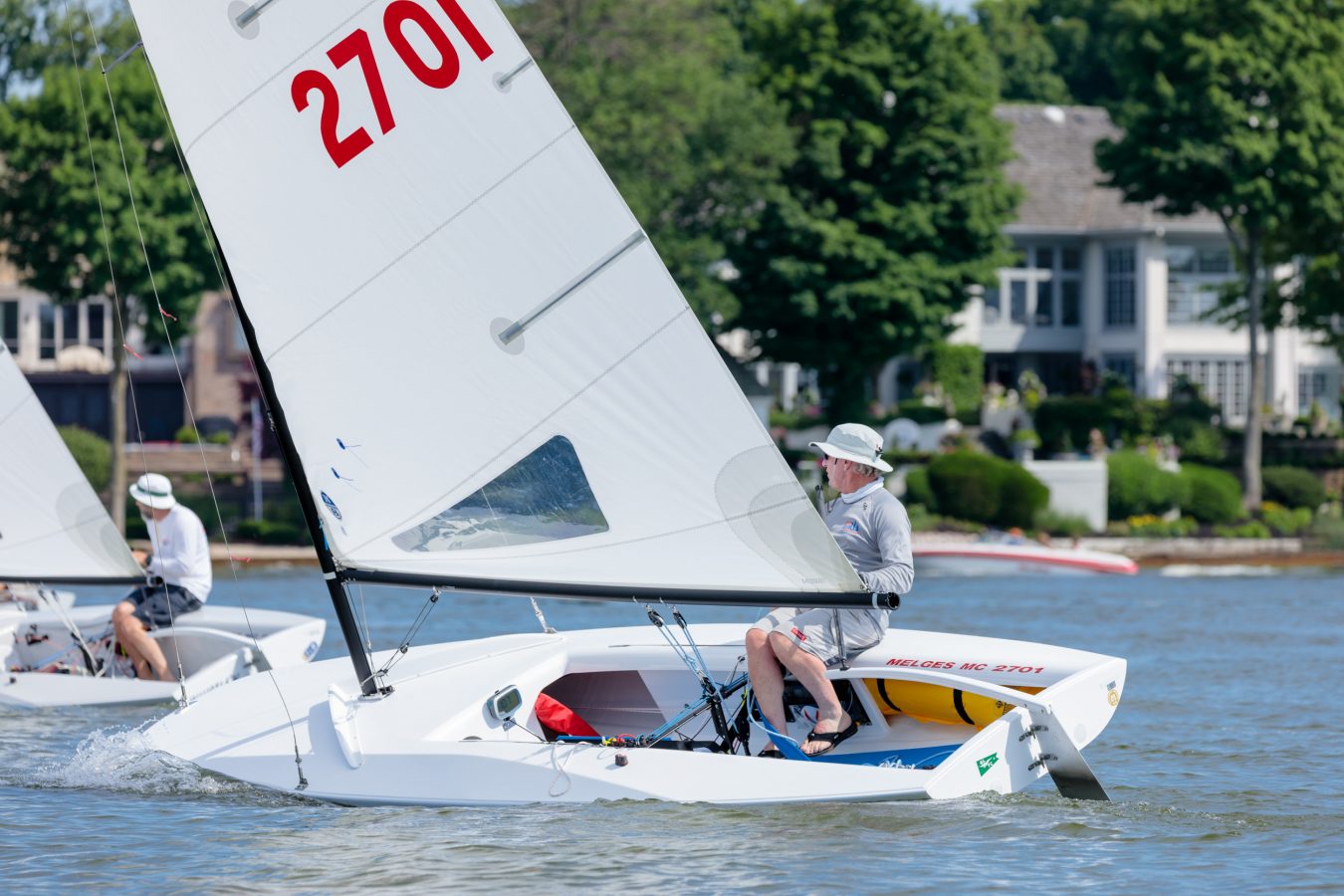
MC SCOW MASTERS CHAMPIONSHIP
MC SCOW MASTERS CHAMPIONSHIP
Congratulations Vince Driessen, powered by North ZMax
Champion Vince Driessen, in his new Melges MC 2701 and his North ZMax mainsail, chasing down Dan Quiram in race 2. © Harbor Pictures Company
This week we held one of our class sanctioned major MC Championships of the year at one of our newest fleets. Fleet 103 Indianapolis Sailing Club was our host for the four day event. This club has a rich history of One-Design sailing with large fleets of Y-Flyers, Flying Scots, Highlanders, Snipes, Thistles, Lasers , Lightning’s and many more classes. They also have a great junior program and also own their beautiful 14 acre property on Geist Reservoir. Their history is rich and their future is bright. If you have never been make sure you get with some of the new MC advocates there like Andy McDonald to check it all out.
The Regatta
Scheduled for six races but a huge high pressure system dominated the whole state of Indiana this week. Day 1 and Day 3 no racing. Our practice day was great and day two we got in three very fair but very light air races.
The Sailors
Thirty six teams were here for this year’s Master Championship. Lighter than expected but when the Weather Channel gives you a predicted scorcher with light winds these things can happen. Some great sailors were here though. Past national champions from both MC and C Scow classes were present along with some great sailors from other classes just getting into the MC Class. So the sailing was with a tough group but also a fun group. Not the big dance but the warmup to the big dance if you will.
The Results
Wow, this was really cool to watch. Vince Driessen of Gull Lake with his new Melges MC 2701 won two of three races and probably would have won three of three but in one race had to do a 720 in light air after some contact with another boat in front of the judges on race 2. Vince did not even hesitate and did his 720 with his typical great attitude. However, Ted Keller tied Vince up with his own great sailing performance and just placed second on the tie-breaker . Mike Considine of Pewaukee sailed a very good regatta and survived an unusual judges protest and hearing on kinetics. Eric Hood finished fourth and was top Grand Master. Katie Arvensen really sailed well and was our top Woman for the Masters Championship this year. Commodore Richard Blake was fifth overall and second Grand Master.
Lessons Learned
Velocity rules over direction (most of the time). This was all about sailing in the dark water for these three light air races. Even though we had tall tree lines what was showing on the water was what was happening. Sometimes in really hot conditions and high tree lines on a narrow lake the wind will not show on the water. So that was the case. You could see the breeze on the course all the time. That was critical because you had to make a choice. Direction or velocity. I think in the case of Ted and Vince they were the only ones who were able to mix both very well. Others of us had moments but those two really put it together. Second was not being out of place on the starting lines. They were very long and in light air this poses a huge risk. Most of the top ten sailors all three races could be found closer to the middle during these starts.
Other Regatta News
A great group of volunteers including some MC sailors not yet qualified for the Masters helped with this event. Regatta Chairman Dale Katzfey had a great crew for the whole event and were all honored at the awards ceremonies. Also, Andy McDonald thank you for the vision to bring the regatta to Indy and make it all happen.
Bill Crawford gave every sailor some incredible framed pictures. Bill’s skills are incredible. Check it out at bill@harborpictures.com . You will Melges.com , MC Scow.org and others posting many of his pictures. In fact he has his own Facebook page and you can see some there now.
In closing, great job to all at the Indianapolis Sailing Club. Thank you from all of us who participated this week. It was fun and very well done !!!
Lots of great club racing going on now, some more great regional regattas to get you ready for the MC Nationals at Pewaukee August 23-26. You don’t want to miss it . The famous and annual PYC Rib Night is happening during the Nationals as well. It is one of those LifeList regattas you do not want to miss.
MC SCOW MASTERS CHAMPIONSHIP
1
Vince Driessen
2
Ted Keller
4
Eric Hood (Top Grand Master)
5
Richard Blake
1st Woman
Katie Aversen
* Denotes Partial North Sails Inventory
EHood (Grand Masters Champion) and Vince Driessen Overall and Masters Champion, both used the fast North ZMax. © Harbor Pictures Company
© Harbor Pictures Company
READ MORE
READ MORE

GIRAGLIA ROLEX CUP 2018
WALLY CENTO ‘TANGO’ REMPORTÉ DANS LA CLASSE WALLY LE CLASSEMENT OVERALL
Avec sa victoire en temps réel lors de la course Offshore de la Giraglia, le Wally 100 ‘Tango' managé par Marc Pajot avec à bord notre dessinateur Laurent Delage en charge du suivi des voiles, a remporté dans la classe wally le classement Overall.
A noter que les 3 Wally finissent avec le même nombre de points, preuve de la dureté du championnat.
RCA: TP52 Freccia Rossa fait à nouveau
Tenant du titre de la précédente édition et fraichement vainqueur overall de la Rolex Capri Sailing Week en ORC il y a moins d’un mois, le TP52 ‘Freccia Rossa’ remporte dans sa classe combiné Inshore + Offshore et conserve sa couronne.
A son bord comme régleur de Grand Voile et en charge du projet dans sa globalité, Jean-Philippe Gallois, nous livre ses impressions sur la course :
https://m.youtube.com/watch?v=PQC2LcfO_XE
Plus d’infos / more info : https://www.rolexgiraglia.com/fr/news-74/resultats.html
READ MORE
READ MORE

ETCHELLS 2018 AUSTRALASIAN CHAMPIONSHIPS
ETCHELLS 2018 AUSTRALASIAN CHAMPIONSHIPS
North Sails were well represented in Mooloolaba this week at the annual Etchells mid- winter regatta both on and off the water. With 7 staff members were racing and Michael Coxon on water coaching and invited by Nic Douglas “Adventures of a Sailor Girl” to join her as co-commenter on the media boat.
© AdventuresOfASailorGirl.com
The mid winters are always well supported and this year the added interest with 41 boats racing from four countries, numerous past class world champions, all driven by the upcoming Brisbane hosted Etchells World Championships in November.
Each of the 7 individual heat winners and the top 15 in the regatta chose North Sails exclusively.
North Sails continued their Etchells class support as a regatta sponsor donating a jib that was drawn from a hat at the presentation and won by class stalwart Steve O’Rouke, a popular win.
The Cure - Happy in their win on a countback
The 3 days offshore racing did not disappoint starting in a challenging left over sea state in medium airs with both the sea and wind backing off over the course of the event. Mooloolaba is renowned for being a challenging tactical coarse and again lived up to expectations with a different winner in each of the 7 races and ended with “The Cure” and “Crue Jane” finishing on top with equal points and Dave Clark and his “The Cure” team taking out the 2018 Australasian Championships on a count back.
For these competing crews plus a similar additional number, together with North Sails, the focus shall now be on the upcoming Worlds to be held off Brisbane in a few months.
© AdventuresOfASailorGirl.com
© AdventuresOfASailorGirl.com
© AdventuresOfASailorGirl.com
© AdventuresOfASailorGirl.com
The Cure - Happy in their win on a countback © AdventuresOfASailorGirl.com
The Cure - Happy in their win on a countback © AdventuresOfASailorGirl.com
READ MORE
READ MORE
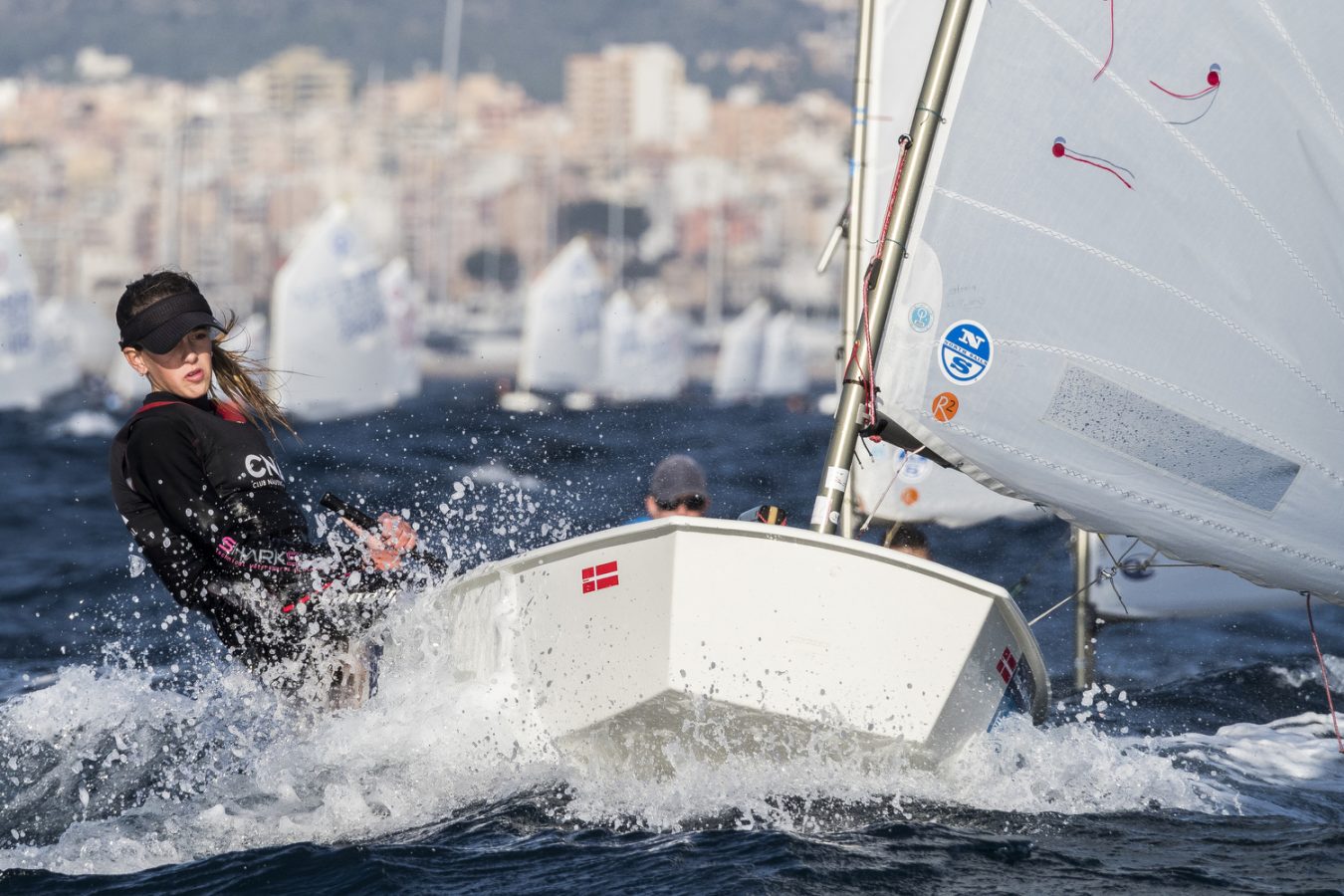
ONE DESIGN SPEED GUIDES
NORTH SAILS SPEED GUIDES
In Depth One Design Guides Written by Our Experts
Ever wonder what it takes to be competitive in a one design class? North Sails Speed Guides provide you with essential information on tuning, finding the right crew, buying sails, and boat-specific proper technique. Pulling all the pieces together can be challenging, and the North Speed Guides help you leverage our expertise to make the best decisions for your racing program and make the most of your one design sailing. North Speed Guides provide you the knowledge and confidence to focus on the best part of sailing: having fun.
READ MORE
READ MORE
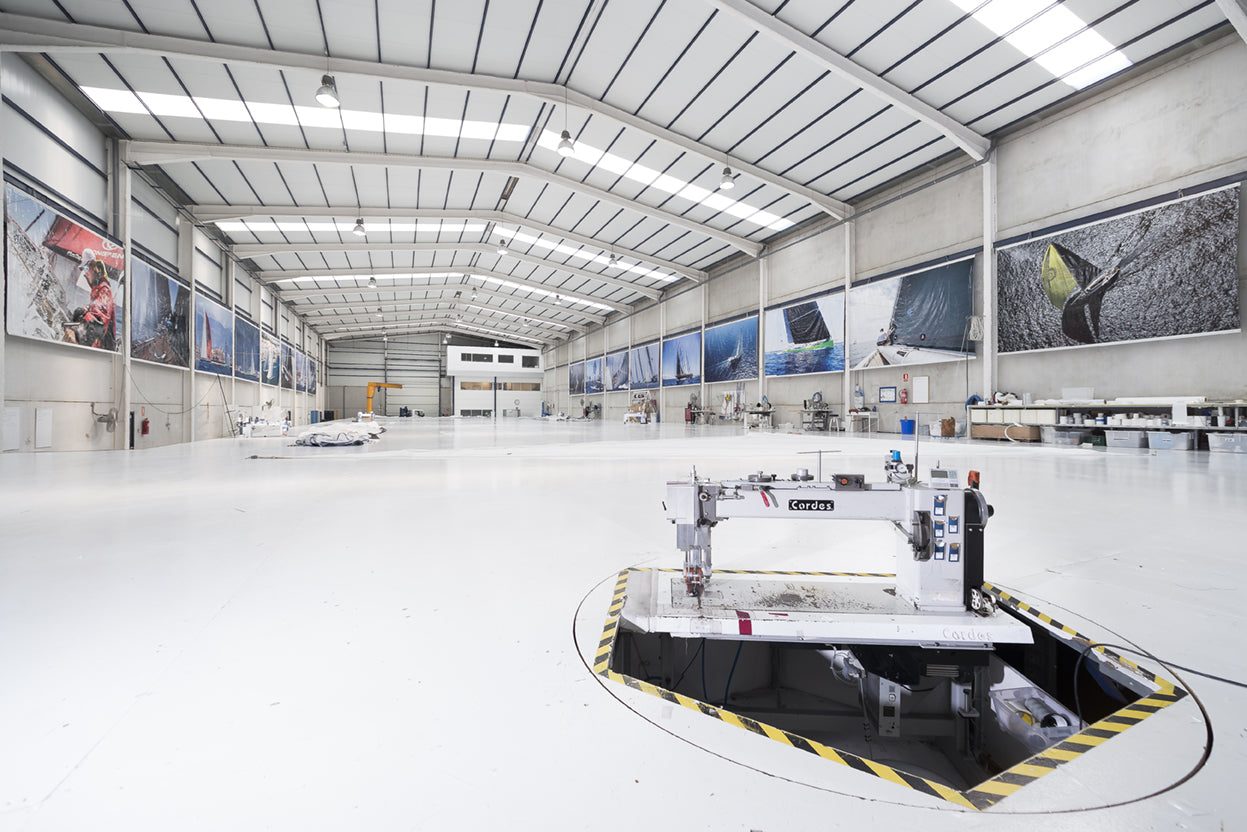
LOOK INSIDE A LOFT: PALMA
LOOK INSIDE A LOFT: PALMA
North Sails In The Hub of Superyacht Activity
North Sails expanded their presence in Palma, Spain earlier this year to become the largest superyacht service facility in the world hub of superyacht activity. A larger sales and service team, increased capacity and expanded resources offer superyacht owners and crews market-leading customer service unrivaled anywhere in the world.
With a combined loft space of 6518m², 42 staff, three vehicles for sail transportation, two with 1.5-ton cranes, as well as storage for 2000 sails, North Sails in Palma is unquestionably the best destination in the world for quality superyacht service, capacity, and turnaround.
Well known sailing photographer Ian Roman joined the team in Palma last week to document North’s expanded presence. We shine a spotlight on Palma loft.
The combined North Sails Palma loft has three locations providing a range of services from purchasing new sails to Certified Service for the world’s largest yachts. Fiona Bruce is the Palma Site Manager and oversees operations for all three locations. Find a loft.
The loft floor at the Llucmajor location in Palma is 45 x 25 meters. It is one of two floors this size at the two-story location. The photo above shows a spinnaker from J Class SVEA.
North Sails Palma features modern high powered specialist sewing machines and rotating pits to handle sail repairs.
Two giant sail washing facilities are housed in Palma.
A superyacht sail can weight up to 1,900 kg. Purpose built trucks outfitted with 1.5-ton cranes help lift superyacht sails on and off the yachts.
The newly combined North Sails team features 42 sales and service staff. In addition to superyachts, this team is able to support all clients with boats of all sizes who either live in or are visiting Mallorca.
Palma houses a specialized storage to comfortably store 2000 sails. This is the only sail storage facility of its kind in the world.
READ MORE
READ MORE

CUSTOMER SPOTLIGHT: DENALI 3
CUSTOMER SPOTLIGHT: DENALI 3
North Sails Expert Skip Dieball on Denali 3 Featuring The Latest 3Di Technology
The new Ker 46+, Denali 3, rolled into Northern Michigan on May 31st and the commissioning team has been hard at work everyday since.
Built by McConaghy and managed by Wade Morgan of Morgan Yachting, the boat was built to spec and on time. The fit and finish was perfect and after a few days of putting the pieces together, it was time to go sailing.
D3 is outfitted with the latest North Sails 3Di. Designed by North Sails New Zealand's Magnus Doole, all the sails showed up ready for install and fit perfectly out of the box. Magnus, myself and Wade had been in communication for nearly nine months making sure that any changes were properly communicated and that all the technological tools were used to ensure that the sails fit the Southern Spars mast perfectly. Bill commented on her sails;
"She has a very versatile wardrobe. The boat and sails lived up to my vision and met my goals so I am totally pumped! It's just awesome. Sunday was a real treat..had breeze up and D3 sailed consistently in the high teens. I can’t wait for it to really blow, as she has way more in the tank."
Bill McKinley, owner of Denali 3, has been impressed with the entire team in getting the boat from the trailer to sailing within one week. Bill commented, "Super impressive. Couldn't have happened without proper focus and hard work."
READ MORE
READ MORE

KASHMIR CLAIMS OVERALL WIN AT 2018 CHICAGO NOOD
KASHMIR WINS CHICAGO NOOD REGATTA
In Trying Conditions The Best Prevailed
The NOOD regatta, as well as the Colors Regatta the weekend before, open up the Chicago racing season. Rain, fog, and cold temperatures accompanied with light, and shifty winds dominated the weather for this years' NOOD regatta, presenting a strong prevailing SW breeze, and SE thermals out on the race course, yet keeping things warm onshore for post-racing festivities.
This year we had a prolonged period (10+ days) of cool, overcast, with N-NE breezes, with some fog & rain thrown in the mix, so there wasn’t any usual local knowledge. Rather, the regatta had generally trying conditions for competitors & race committee alike.
In the end North Sails clients won five of the nine One-Design classes, some quite close & some a runaway. In what was arguably the most competitive class, J/111 Kashmir won both the North Sails Boat-of-Day award on Saturday & the NOOD Overall champ.
Hear it firsthand from Karl Brummel of Kashmir, interviewed by Sailing World regarding their highly successful weekend.
READ MORE
READ MORE

CUSTOMER SPOTLIGHT: LAKE CHAMPLAIN
CUSTOMER SPOTLIGHT: LAKE CHAMPLAIN
Premiere Sailing With Gorgeous Views
Around an hour and half South of Montreal sits a hidden gem for sailing with picturesque views and fantastic breeze. Hugh Beaton and Louisa Sonosky from North Sails Toronto visited Montreal based North Sails Expert Miro Balcar for a weekend of sailing and laughs with local North Sails customers. Willsboro Bay Marina sits tucked away from the noise of the city on the US side of New York side of Lake Champlain.
My second visit to Willsboro Bay did not disappoint - the facilities are outstanding, and the passion for sailing is alive and well on Lake Champlain. We had scheduled two outings during the afternoon to look at new sails and discuss the addition of a modern furling Code 0s which are great additions for modern cruisers looking for some additional horsepower for reaching in light winds.
The evening social completed the day with over 40 guests milling about and sharing sailing stories - a big thank you to Bob Klein and family for providing great facilities for our North Sails Day. - Hugh Beaton, North Sails
Saturday featured 6-7 knots of breeze in the middle of the day, allowing for a great afternoon of sailing with dedicated North Sails customer Francois Bertheau onboard his Jeanneau Sun Odyssey 469. Later on Saturday saw a drop in wind speed to around 4-5 knots yet still gorgeous conditions thanks to the mountain views and warm sun. Hugh sailed with Jean Francois Elie onboard Scoot, NED ACK55 with an all carbon rig, for a couple hours as well in these fantastic conditions.
One could not ask for better conditions than what we saw all weekend; the right temperature mixed with enough for a leisurely sail around the bay. The views are picturesque - a must visit for all. - Louisa Sonosky, North Sails
As a thank you to our local North Sails customers, we toasted to the season ahead filled with as many picturesque weekends as possible.
READ MORE
READ MORE
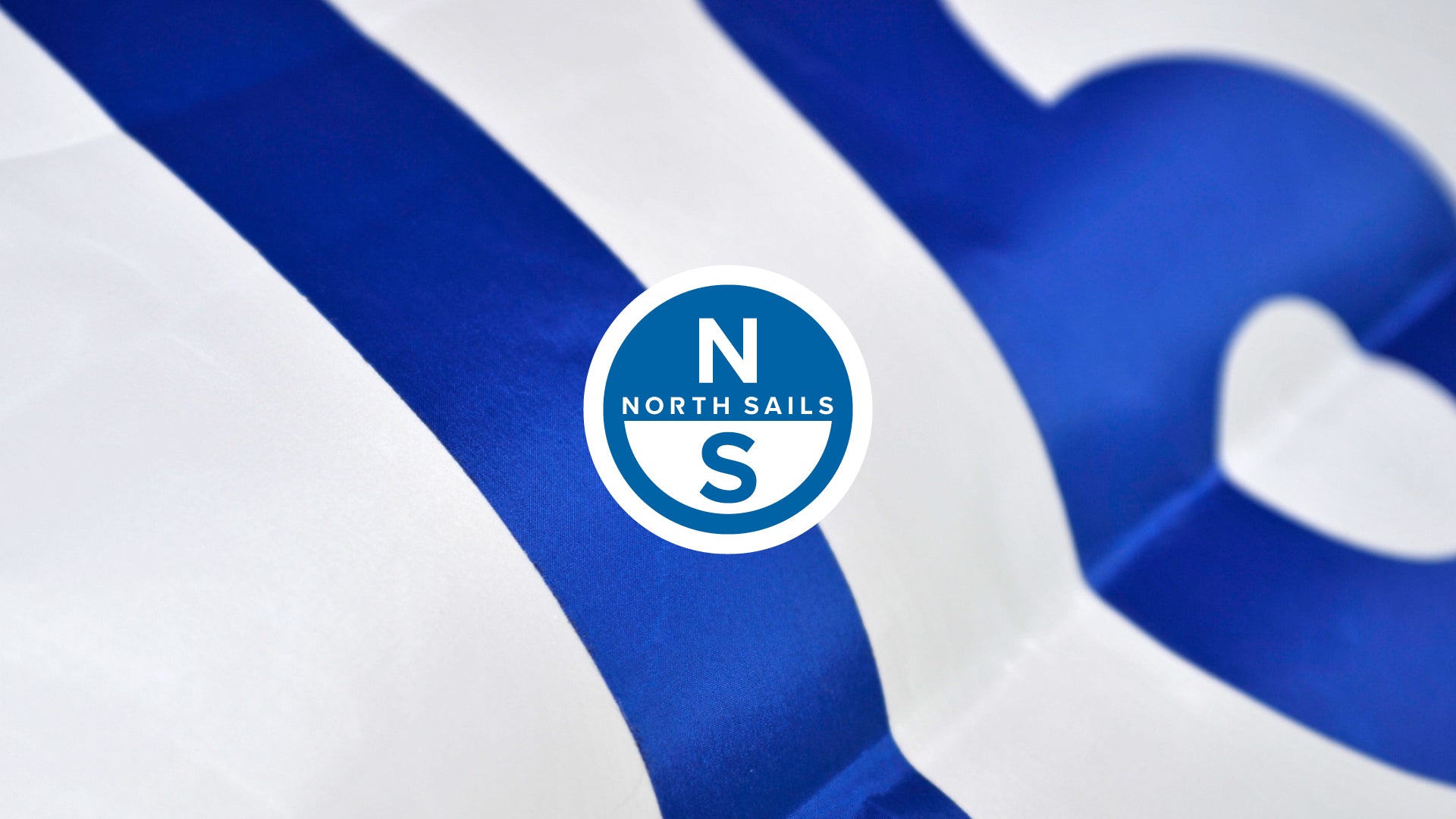
J22 SPEED GUIDE
North Sails expert Mike Marshall answers your J22 speed and boat handling questions.
Who sails the J22?
The J22 class is simultaneously both international and “grassroots.” Make no mistake. The top J22 sailors are extremely talented, but at the same time, the class has a culture that’s quite approachable and down to earth. In addition to the United States and Canada, fleets are active in France, Germany, the Netherlands, South Africa, the Cayman Islands, and Jamaica.
Sailing a J22 upwind in a good breeze, hiking hard and sailing flat is fast.
J22 sailors are friendly and want to help each other sail better. On the water, people are definitely competitive, but if you ask someone on the dock what they were doing to perform so well in a certain situation, they’ll tell you. And quite a few of the people you may be asking, especially at North American regattas, have won world championships.
What’s also special about the J22 is that getting to regattas and out on the racecourse can be easier compared with many other keelboats. You only need a couple buddies to sail with you; the boat is simple to trail; and the cost of getting into the class is relatively low. Your big decision each year is which one or two new sails to buy. Put all these things together and you have a class of very friendly and likeable people enjoying an affordable game with their friends, and that creates a special vibe.
What kind of sailors do best in the J22 class?
The boats are often called “a dinghy with a piece of lead hanging off the bottom.” You need to roll tack them, and boat handling is critical to sailing fast, so dinghy sailors naturally do well. The class encourages young dinghy sailor participation with a grant program that loans a boat each season to a youth team, and these teams always do well. Of course, you still have all the technical aspects of a keelboat, so teams also need to develop the skills required to tune the rig and make sure the sail shape is right.
What is the ideal J22 crew size?
You can sail with three people or four. The weight limit is 605 pounds, and it pays to be right on the limit. Ideally, you’ll sail with your biggest person in the middle.
How physical is the crew work?
While the crew work involved in taking a J22 through maneuvers is only moderately physical, racing this boat competitively is a workout. As my friend Jeff Eiber says, “I don’t like sailing boats unless I’m working hard to do it,” and the J22meets this criterion. Jeff is happy to be a middle crew on these boats where he’ll be hiking out like you would on an Etchells. The bow person is also hiking. And the harder you hike, the faster you go.
What are your top J22 speed tips?
Sail the boat like a dinghy.
Focus on tuning and forestay length.
Keep the boat as flat as possible.
Upwind, sail as fast as nearby boats; don’t try to out-point them.
What’s involved in crewing on a J22?
When sailing with three, the helm drives and handles the mainsheet, backstay, and traveler. The middle person trims the jib and spinnaker, and also douses the chute. The bow person manages halyards, spinnaker pole, and sail controls at the mast. Sometimes the bow person is the tactician; sometimes the middle person is. When sailing with four, the bow person’s job gets split. On sets, the second person aft may feed the spinnaker out of the companionway or manage the controls for the bow person.
What should you know when buying a J22?
The first J22 was built in 1983, so many of them have been built over the years. New boats are not currently available in the U.S., but you can pick up a competitive boat for $8,000, add a couple new pieces of gear, and, with practice, compete at the top-20 level in a world championship. If you’re aiming for the top 10, you should buy a boat in the $15,000 range.
Boats with numbers above 1460 were built by U.S. Watercraft as opposed to TPI, which built the earlier boats. The newer boats have no wood in the interior and therefore need less maintenance. However, older boats can certainly compete. Boat number 677 finished in the top five at the last two world championships in the United States. Most people who join the class buy a used boat, purchase a new jib, and get on the water for $10,000 or less. If you’re on a tight budget, you can do it for half that much.
Beyond the basics, what kind of prep is needed to make a boat competitive?
If you have aspirations to be in the top 10 at the worlds, you need to prep the bottom and make sure your chainplates, mast step, and jib tracks are in exactly the right place. If that’s not your initial goal, just prep the bottom and go sailing. Bottom paint is not a problem either, but make sure it’s sanded nice and smooth. If you bought a $5,000 boat, take a close look at all the blocks. You’ll probably want to replace a few of them.
How do you transport the boat?
Although this boat has a fixed keel, it draws slightly less than four feet, so it doesn’t stand too tall on its trailer. Combining a displacement of 1,790 pounds with the weight of sails, equipment, and trailer, gives a total weight of 4,000 pounds. This means that you can haul the boat with a minivan or light SUV. One of the Canadian teams tows long distances with a Honda Odyssey. I’ve also seen European teams tow the boat with a Volkswagen Passat, but this seems a bit small to me.
What's involved in rigging and de-rigging a J22?
What I love about the J22 is that everything needed for the boat always stays on the boat. No outboard engine is required. I usually leave the shrouds attached and tuck them in. So when I pull my J22 out in the spring, I just take off the tarp, put sails in the boat, remove a bin of cleaning supplies, and put the rudder in the van. The mast is still tied down from the last time I raced, so I simply tighten the straps and drive away.
My routine at a regatta is equally straightforward. The deck-stepped mast can be put up or taken down with help from just one other person. Before launching, I usually wash the bottom and put some polish on it, and we’re ready to go. One or two of us can do all the prep work in well under two hours—or even in one hour if we’re in a rush.
What kind of inventory does North recommend and how long do sails last?
The J22 has three sails—a main, a jib and a spinnaker—and there are no restrictions on sail purchases. Jibs get tired every year from beating against the mast. Spinnakers can last two seasons if not abused. Mains might last a little longer. Most people buy a set of racing sails for major regattas, and for other racing they use their second set. When a new set is purchased, the previous new set becomes the practice set, and the cycle continues.
Our results prove that the North Sails J/22 inventory is outstanding. We’ve tested many new shapes, but have confidence that our standard designs are best across a range of conditions.
Two pins hold the J22’s mast in place.
J22 Tuning
What are the keys to setting up the rig?
First, make sure your mast is straight and centered in the boat athwartships, and then, as described in the North Sails J22 Tuning Guide, set your forestay measurement at 4’11.75”. There are two sets of numbers in the Tuning Guide, depending on the age of your boat and the type of mast step, but this position is a good starting point from which you may make further adjustments after you go sailing and get a feel for how much helm the boat generates in light and medium winds. The J22 keel position can vary by as much as 30mm fore and aft. If the keel is farther aft, you’ll likely lengthen your headstay by up to three-quarters of an inch. If the keel is farther forward, you may shorten the headstay up to three-eighths of an inch.
Be aware that you needn’t start tuning from scratch at each regatta. Once I know my mast is straight, I can leave the uppers and lowers tensioned when I unstep the mast; I just pull out the forward of the two mast pins and have someone pull out the forestay pin while I hold the mast. Because of the aft-swept spreaders, the tension on the uppers eases almost immediately. When I put the rig back up, the upper shrouds are already tuned, provided that they didn’t move when I trailed the boat to the regatta.
Upwind, whether sailing with three or four crew everyone shifts forward; even the helmsman moves ahead of the traveler.
J22 Upwind Sailing
Where does each person sit when sailing a J22 upwind?
Crew positions center around the jib trimmer, who is usually the biggest person and tends to sit just aft of the cabin house.
The driver sits as far forward as possible. On our boat, I’m far enough forward so that I can touch the winch on the cabin top. In very light air, our bow person sits right up next to the aft side of the shrouds. In big breeze, our jib trimmer moves aft half a body width, and the bow person slides back close to the jib trimmer. Having the weight together on the rail is key.
The backstay controls on our boat have been moved forward so they are between my legs in light air. When it’s windy, I’ll move back half a body width so I can play the mainsheet effectively. Our jib trimmer hikes with legs in and butt just over the rail, while the bow person hikes with legs out over the rail. The bow person hikes off the vang, so when hiking, that person pulls the vang on, and when coming back in, they let the vang off. This is in line with how you want the vang played in breeze.
In lighter air, say 7 knots, the jib trimmer will be the first to move to leeward. We don’t move the bow person if we can help it, in order to keep the rig quiet. The jib trimmer can move more smoothly and is therefore more active
What do you focus on when trimming the main and jib?
Two key things we watch on the J22 are the upper leech telltales on the main and minimizing heel. Our jib trimmer also keeps an eye on jib halyard tension, lead-car position, and the jib’s upper leech telltale.
At our lightest setting, we set jib halyard tension so we have only slight “crow’s feet” wrinkles at the headstay snaps. We position the lead car so that the foot of the jib intersects the toe rail 18 inches back from the bow. We want the foot inside the toe rail but pressed up against it. In most conditions, the jib’s top leech telltale should be flying, with just a quarter of an inch of trim needed to stall it. As the wind strength increases, these reference points remain the same, so we use more halyard to maintain little to no “crow’s feet” and move the car back because the jib is more eased. In the biggest breeze, the jib halyard is as tight as possible.
In light air, the top main telltale should always be flying. In medium air, we trim the sheet until the top telltale stalls 50 percent of the time. With increased wind, the telltale will stall less and less as we increase tension on the backstay and open up the top of the sail.
This crew is working hard to keep the boat flat even while ensuring the spinnaker is not twisted for the next set.
What are the key gear shifts to make when wind and sea state change?
The backstay and vang are hugely important controls. With a big velocity change, we’ll adjust the jib halyard. As the wind picks up, I’ll start putting more backstay on, then more mainsheet, then more backstay again, always taking slack out of the vang until I get to maximum backstay. If the wind continues to build, I’ll start to play the traveler a little, but if the traveler car ends up at the leeward seat, that’s my cue to center the traveler and start playing the mainsheet with full vang on. The bow person is already holding the vang tail because that person is hiking off the vang. The bow person tightens the vang in the puffs, and then in a lull, leans in and eases it, adding depth to the bottom of sail.
Who is in the dialogue loop and what's a typical conversation?
Our bow person calls the major waves, flat spots, puffs, and lulls. That allows me to decide whether to bear off around a wave or ride high over it, sailing with telltales up. It also allows me to be ready on the controls if I know a puff or lull is coming. Our middle person talks about relative boat speed and our positioning with other boats. Besides that, I’ll ask for more vang or cunningham, or I’ll say things like “We need to ease the jib sheet a little bit,” or “Big hike here.”
Any special considerations upwind?
As a standard rule, “Flat is fast.” Also, in big breeze, there’s a point when you can have the jib too tight. You’ll know this because, when you ease the main, you’ll see the sail start to luff due to the jib’s backwind. That’s when we’ll sometimes ease the jib sheet as much as 6 inches.
In most conditions, the J22 will be sailed at deep angles with some weather heel.
J22 Downwind Sailing
Where does each person sit when sailing downwind?
As the driver, I sit to leeward when sailing downwind, up against or in front of the traveler bar. I have four parts of the mainsheet in my hand to pump the sail. My trimmer stands to windward, weight centered over the guy block, with the leeward sheet in his leeward hand. The bow person when sailing downwind manages heel with weight movement, sitting behind the mast and generally to leeward and watching out for the boom when I pump the main.
In lighter air, the trimmer will walk in from the windward rail to add heel when needed, and the bow person will likely stay to leeward. In big breeze, our trimmer steps in and the bow person moves back a little but stays on the cabin top to hold the guy for the trimmer, often with feet in the companionway sitting on the cabin top’s leeward side. It’s important in any breeze to keep the weight as much as possible to the edges of the boat. This helps to stabilize the rocking.
What is your main focus downwind on a J22?
The main focus downwind is to make sure you’re going fast all the time. Match your speed with others before you match angle. On the J22, it’s all about momentum. As soon as your momentum starts to fade, turn up and get the boat going again. Then the middle person can move to windward and press the rail to help you bear off.
What are the keys to downwind trim for the main and spinnaker?
In light air, I trim the mainsheet and also focus on how the vang is controlling upper leech twist. In trimming the chute, we try to get the pole back as far as possible but keep the foot of the spinnaker two feet away from the forestay. Also, when the pole is fully squared, we don’t ease the clew past the forestay.
In surfing conditions, the helmsman pumps the main as the trimmer leans to windward, trimming the sheet and helping to turn the boat down the wave.
How do you shift gears on a J22 when wind and sea state change?
The boats will plane near the top of the wind range, but most of the time our mode is to drive low and, if possible, pump to surf the waves. Whether that’s possible depends on the wave state. I think of it in much the same way as I think of sailing a Laser. The more you can surf the waves, the faster you’ll go.
Who is in the dialogue loop downwind and what's a typical conversation?
My trimmer always pushes me to go lower when feeling pressure in the sheet. I also listen to the sound the boat makes going through the water, using this sound to help gauge our speed. Sometimes my trimmer says the sheet is light and we need to come up, but listening to the bow wave, I know that the boat is still moving, so I’ll hold it down for a couple more seconds.
J22 Boathandling
What's a typical start like in this class?
At the start, all the boats are set up on the line with sails luffing. It’s like going back to college sailing. Good maneuvering skills are key. Heel the boat to leeward; then flatten the boat to get going. Your goal is to open up the hole on your leeward side.
Before the start, a J22 fleet lines up with jibs luffing, each team attempting to keep way on and leave a hole to leeward for acceleration just before the gun.
Top 3 tips to starting a J22 well?
Set up far enough back from the line to avoid being early.
When sailing up to the line, over-trim the main to keep flow over the keel so you don’t slide sideways when you trim in to go.
Don’t pull the trigger too soon and sail down on top of boats to leeward of you.
After the gun, some boats accelerate ahead of others.
What tips can you offer for down speed boat handling?
The J22 is very much like a dinghy. The mainsail turns the boats up, and the jib pulls the bow back down. Also practice heeling the boat to turn it up (heeling to leeward) and down (heeling to windward).
What mistake slows this boat down most in a tack?
What slows you down most is the wrong rate of turn—too fast or too slow—plus not roll tacking every time.
What does each crew member do in a J22 tack?
As the driver, I stand up holding the mainsheet, hopefully with the traveler cleated on both sides. As on most smaller boats, I swap the tiller from one hand to the other behind my back, sit down on the rail, and adjust the traveler (also easing the main about an inch).
Roll tack the J22 like a dinghy, although the forward crew waits until after the tack to cross (through the slot and around the mast).
Our jib trimmer waits until the jib backwinds halfway and then releases it off one winch while holding the lazy sheet in the other hand. As the jib blows through, the excess sheet is collected either directly from the block or on the winch, depending on wind strength. No pressure should be felt on the sheet if this job is done fast enough. When the sheet is within 2 inches of final trim, the trimmer hikes out and drops the winch handle in place, ready to trim when we’re at speed.
About 60 percent of the top boats use 2:1 sheeting, with blocks on the jib’s clew. The advantage of using 2:1 is being able to sail without winch handles. The disadvantage is having a lot more sheet to get caught on things.
The bow person’s job on the tack is to avoid stepping on the jib sheets while helping to roll the boat using the handrails with butt in the air.
Then, when needed, the bow person crosses the boat, sliding between the leech of the jib and the mast. When sailing with four, the second person back can either follow the bow person around the mast or slide across the cabin top.
Any special tips for good light- or heavy-air tacks?
In light air, roll tack as hard as you possibly can. In heavy air, you need to decide when to turn fully onto a close-hauled course and when to hesitate at the end of your turn to regulate the amount of power the boat has when coming out of the tack. If you turn the boat too quickly, it will fall over. If you turn too slowly, you’ll hit a wave and slow down. Practice before the race to decide what’s best for the day’s conditions.
What mistake slows down a J22 most in a jibe?
As the driver, you have to learn the exit angle for the jibe, or your spinnaker trimmer may have difficulty flying the kite. It never hurts to practice your jibes.
What does each crew member do on a J22 jibe?
In light and heavy air, everyone rolls the boat in a jibe. As the driver, I stand up in the cockpit and grab all parts of the mainsheet along with the twing that will need to come on. Then, closing my hand tightly, I pull the twing on as I throw the boom over. In light air, I’ll roll the boat more, moving from my position on the old leeward side across to the new leeward side.
On a jibe, our trimmer is standing to windward, with a hand on the guy. Then the trimmer kneels down and uses that hand to pop the twing out of the cleat near the guy block while at the same time ducking below the boom that’s coming over. Next, the trimmer stands up or stays kneeling until ready to move to the windward rail and help flatten the boat.
Our bow person during a jibe moves across the boat to help roll it before the main comes across. Then, as the main is coming over, the bow person jibes the spinnaker pole. In big breeze, jibing the pole can be done simply standing by the mast.
What is the key to a fast spinnaker set?
When the kite goes up, make sure the clews are separated. Get the tack of the spinnaker out past the shrouds and make sure the leeward sheet is cleated, so when the tack goes forward, the clew stays aft.
The pole can be "dangled" before the mark rounding; the forward crew won’t move to snap it on the mast ring until standing up to set the chute.
Who does what in a J22 crew on a bear-away set?
The bow person keeps hiking and raises the pole from the rail. The pole is inside the shrouds and clipped to the guy up forward, so the bow person raises the pole, eases the vang, and then stands up and clips the pole on, pulling up the spinnaker halyard as fast as possible. The middle person, who has pre-cleated the spinnaker sheet to a mark, eases the jib sheet a foot while feeding the spinnaker out. When the spinnaker is halfway out, this person pulls it around with the guy as rapidly as possible until it fills. Meantime, the bow person un-cleats the jib halyard, reaches around to leeward of the mast, and gives the jib leech one good yank down. The trimmer then picks the spinnaker sheet up out of the cleat as the sail fills.
What is the key to a good J22 spinnaker takedown?
The most important tip I can offer is “Don’t wait too long.” Raise the jib and take off the pole (this spinnaker is easy to free fly). As the pole comes off the mast, the bow person remains standing, un-cleats the topping lift, and drops the pole to the deck inside the shrouds on the starboard side. Then the bow person takes the halyard in both hands waiting for the trimmer to gather half of the foot of the spinnaker on the takedown side, at which point the bow person lets go of the halyard. Quite a few lines lead to the same area at the base of the mast, so it’s important for the bow person to make sure that all these lines are cleaned up in advance.
How easily does a J22 broach?
Downwind, a broach can happen pretty easily. It typically occurs when you come out of a jibe too high or too low. So if you broach, just make sure that everyone is OK, let the spinnaker halyard down, and get the chute out of the water really fast. The boat will soon be on its feet and going again.
Any suggestions for drills to improve boat handling?
Find a buoy and do 50 circles around it in each direction. Then do 30 tacks upwind and 30 jibes downwind.
What is the coolest thing about the J22?
The class itself is the coolest thing. People who sail J22s are all extremely friendly and helpful. Everyone wants to see others succeed.
READ MORE
READ MORE
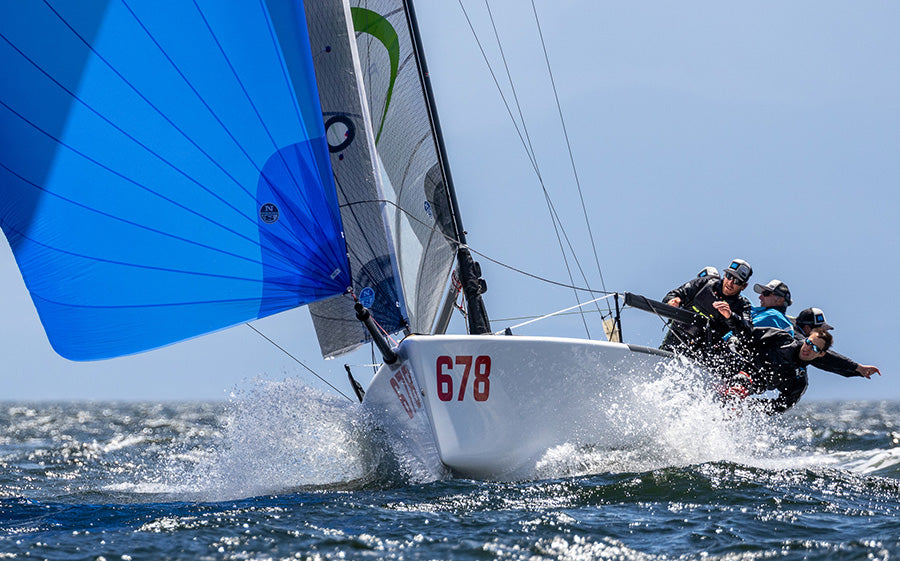
MELGES 24 WORLD CHAMPIONSHIP
ITALIANS TAKE THE MELGES 24 WORLDS
Congratulations Team Altea and Team Full Circle, Winners in the Open and Corinthian Divisions
Andrea Racchelli’s Team Altea, 2018 Melges 24 World Champions. ©IM24CA/Zerogradinord
Great breeze and blue skies welcomed forty-one teams from five different nations for the 2018 Melges 24 World Championship held at the Royal Victoria Yacht Club in Victoria, BC, Canada. Tough competition with a total of ten races made for some very close results. The Italian team Altea, skippered by Andrea Raccelli with crew of Filippo Togni, Gaudenzio Bomni, Matteo Ramian, Michele Gregoratto claimed their first Melges 24 World Championship title finishing the event with only 30 points.
We caught up with Andrea Racchelli to get his impressions and emotions on his big win:
How did you and the team prepare for the Worlds?
This year we sailed two events in Italy (Punta Ala and Malcesine) and had one training in Malcesine. We are quite experienced on the Melges 24 as we have been sailing since 2001, so usually we don’t do a lot of training. We arrived late in Victoria for the World Championship as most of our crew members were busy in a Melges 32 regatta in Italy. We had just one day of training on the racing area of the event, while other teams spent there more time to learn about difficult current and wind conditions.
What were the 3 main factors contributing for the winning?
The three main factors were:
We used a charter boat that was really perfect and super-fast.
We had a new set of North sails fast as well (we used the AP-3K main, J-7K jib and P-3 Runner)
Of course the crew! We have been sailing together from many years and we are a group of friends first of all.
What was the most exciting moment of the event?
Winning two races in day 2 in light and shifty wind conditions we nice, and of course the last day: We had two points to recover, it was a perfect day with strong wind and huge current. After the first two races we were leading and we had just to control the last one. We didn’t have a very good start in the last race but we had very good speed and a fast upwind leg, and… we crossed the finish line as the 2018 World Champions!
What’s next for Team Altea?
In the end of June we are going to an event of European Sailing Series in Torbole, followed by the European Championship in August.
Congratulations again to the Team Altea!
Learn more about North’s fast Melges 24 sails.
2018 MELGES 24 WORLD CHAMPIONSHIP
1
ITA 722 – Altea / Andrea Racchelli
2
USA A829 – WTF / Alan Field
3
USA 851 – Monsoon / Bruce Ayres
4
USA 849 – Full Throttle / Brian Porter
5
CAN 838 – Mikey / Richard Clarke
6
USA 825 – Was Canoe / Michale Goldfarb
7
CAN 835 – Mikey / Welches/Rhodes
9
USA 675 – 12happythoughts / David Brede
10
CAN 415 – Full Circle / Robert Britten – 1st Place Corinthian
Full results
Andrea Racchelli, Filippo Togni, Gaudenzio Bomni, Matteo Ramian, Michele Gregoratto win their firts Melges 24 World title. ©IM24CA/Zerogradinord
2018 Corinthian World champions, Robert Britten’s Team Full Circle. ©IM24CA/Zerogradinord
90% of the boats at the Worlds were powered by North. ©IM24CA/Zerogradinord
©IM24CA/Zerogradinord
Team War Canoe going fast downwind. ©IM24CA/Zerogradinord
READ MORE
READ MORE
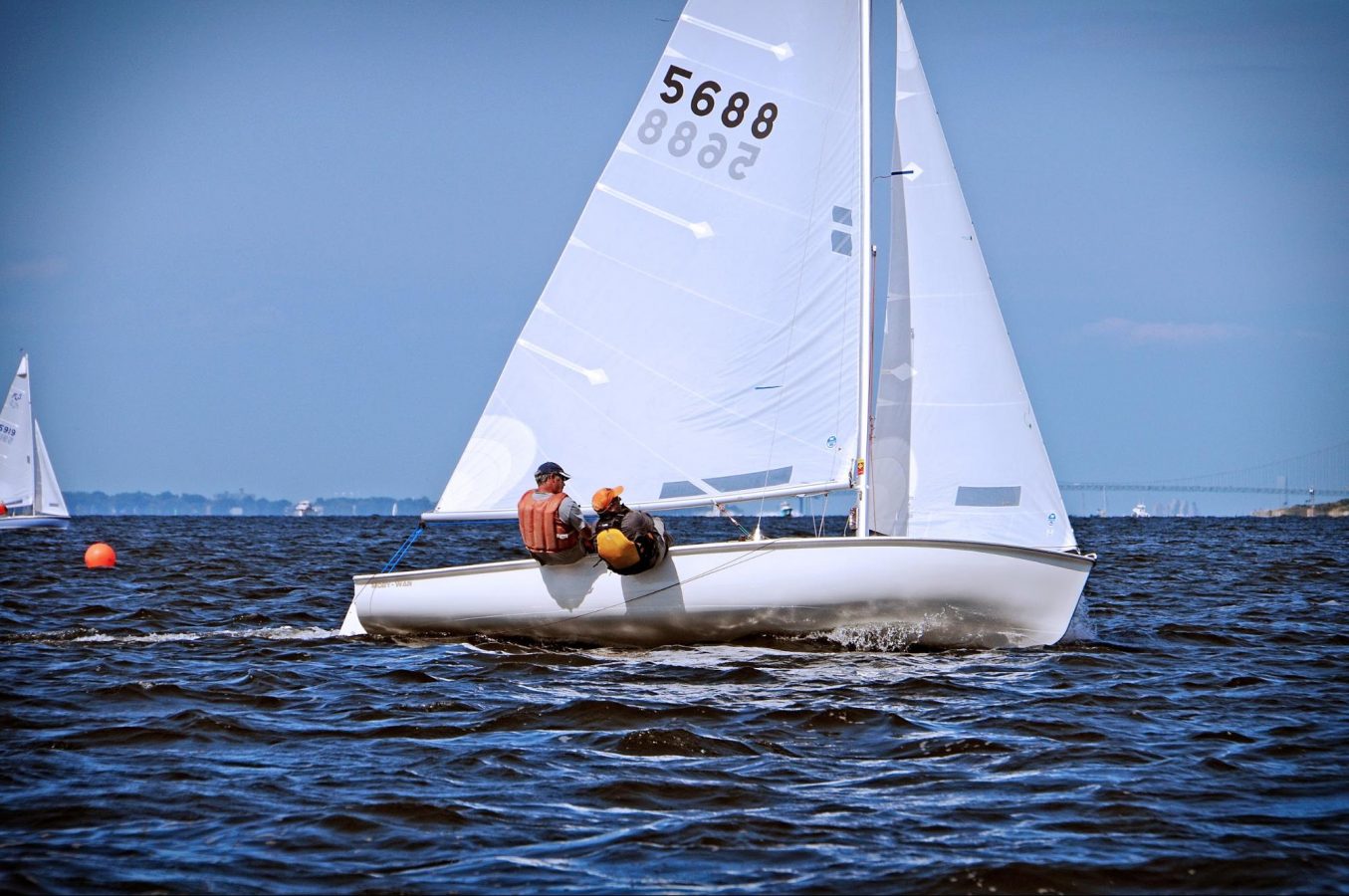
SPEED READING: GET FAST AND STAY FAST
GET FAST AND STAY FAST
Important factors that affect your Flying Scot boat speed
© Art Petrosemolo
We’ve all read it a million times from all of the sport’s top performers – “boat speed is king,” “the key to winning consistently is boat speed,” “you have to have top boat speed to win”…. There’s a lot of ways to say it… But how do we achieve it? THAT is the question.
In the Flying Scot, one of the most important factors for boat speed both upwind and downwind is the center board engagement. When sailing upwind we need to accurately trim the sails, put the boat on the right heading, and get the body weight in the right spot so that the boat can get going fast enough to allow the centerboard to start working and achieving maximum lift. If any one of those three trims are off, the boat will experience some sort of stall which will decrease lift of the board and increase the distance between us and the fast guys!
The generic tip is “speed before height”. This is a simple concept that most of us understand – but it’s the execution of this technique that can be difficult. It all starts with positioning. The boat has to be in a place where you are able to ease the sails a bit, put the bow down, and let it rumble. If you are sailing with someone to leeward, you aren’t able to make this move and instead you are stuck trying to live in high mode which can be very unforgiving. It’s crucial to make every effort to make tactical decisions that keep people away from your leeward hole. Make sure that you have a big hole to leeward of you right after the start.
A couple keys to achieve that are:
1. Use a “high kill” in the last minute where you get the boat to coast at head to wind (without losing flow/steerage). If the boat to leeward of you isn’t matching, then that hole is getting bigger.
2. Accelerate the boat in the last 10-15 so that you can ultimately “pull the trigger” at 2 or 3 seconds which allows the boat to be already close-hauled at full speed at the gun. Of course this requires accurate knowledge of where the line is, but if you can already be full upwind with the center board working when the gun goes off, you are going to have plenty of room to leeward of you to let the boat rumble.
Another opportunity to give yourself a bigger hole to leeward of you on the racecourse is in a situation where you know you are likely to get lee-bowed by a competitor. This can happen if you are out on the edge of the course near a layline most likely.
If you know you are likely to get lee-bowed by a competitor coming across on the other tack, put your bow down at them. Make it clear from 5-10 boat lengths away that it is your intention to duck them by aiming your bow at their transom.
This will force them to either take the cross – which you are fine with in this tactical situation – or tack early. As soon as you see them start their tack, you trim the sails back in and put the bow back up to your close hauled course which leaves them an extra boat length or two to leeward of you which should be enough for you to comfortably hold your lane. Plus, you will be coming at them with a click more boat speed since you are bow down, which should have you with an even better lane after their tack
Developing the feel on the helm and in the hull so that you can sense when the center board is fully engaged is the hard part.
It can only come from time on the tiller, and sailing in a straight line while experimenting with the edges of performance. But that’s where the fast guys really get away – they are constantly making very slight adjustments to heel angle, sail trim, and their course so that they can get the board to maximum lift and then try to take that lift as high as they can before the boat stalls.
When they feel the boat is on the brink of a stall, they adjust again to re-engage the board and repeat the process. You can think of it like executing very gradual “S-Turns” all the way up the beat – bow down and sails eased with body weight pressing on the rail to get the boat rumbling, and then bow slightly up with sails trimmed hard to turn that speed into height. That’s the magic!
Remember, a fully engaged center board will give you height without forcing you to actually point the boat higher. In fact, the boats gaining height might have their bows further from the true wind angle – but since the board is providing lift, they are still climbing to windward!
Practice makes perfect, so get out on the water and sail upwind (maybe even with your eyes closed) and really try to hone in on this feel. Boat speed turns into good tactics, and the combination is what will put you at the top of the podium!
Contact Zeke Horowitz for additional questions on making your Flying Scot sail faster.
Learn more about North’s fast Flying Scot sails.
READ MORE
READ MORE
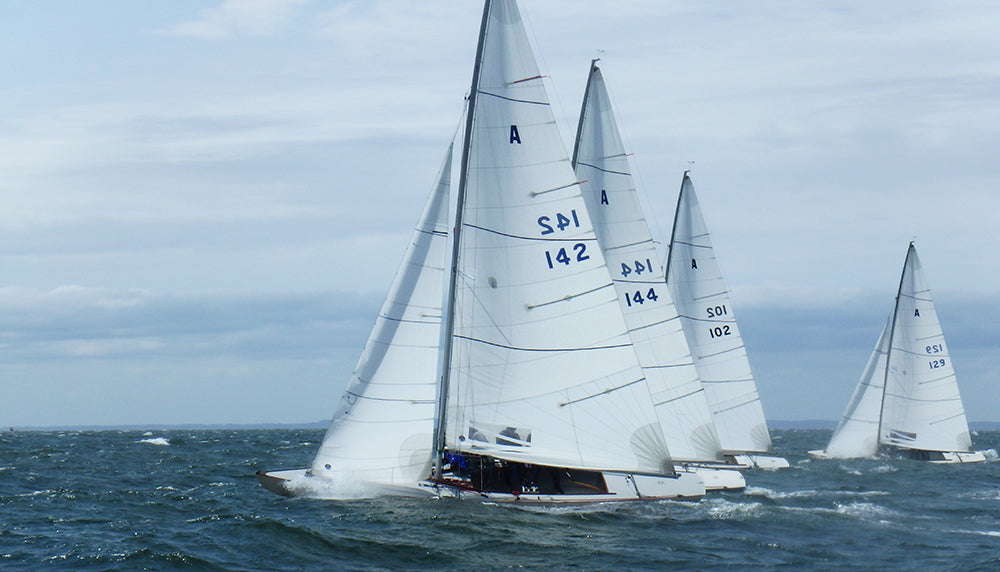
NORTH CLIENTS DOMINATE CEDAR POINT OD REGATTA
CEDAR POINT ONE DESIGN REGATTA
North Clients Dominate Growing Event
With over 100 boats and 560 sailors registered, the 2018 Cedar Point One Design Regatta provided great competition for many one design classes in the Long Island Sound waters. Connecticut sailors were joined by teams from Canada and other states along the East Coast.
“The CPYC One Design Regatta is growing every year and we are proud to be part of it. “ said Tim Healy, President of North Sails One Design.
At the end, North-powered clients had exceptional results dominating most of the classes, taking the full podium on the J/30, J/70, Beneteau 36.7, Atlantic and Thistle class. North is proud to sponsor the Cedar Point OD Regatta.
2018 CEDAR POINT ONE DESIGN REGATTA
J/30
1, 2, 3, 4, 5
USA 41230 Wildcat / Russ Atkinson
J/70
1, 2, 3, 4, 5
USA 96 Savasana / Brian Keane
J/70 Corinthian
1
USA 501 Button Fly / Andrew & Melissa Fisher
J/88
1
USA 80 Wings / Mike Bruno
Beneteau 36.7
1, 2, 3, 4
USA 51898 Blazn’ Star / Peter Hurley
Atlantic
1, 2, 3, 4, 5
129 Elan / Rodrigo Meireles
Thistle
1, 2, 3, 4, 5, 6, 7, 8, 10
3839 Pepper / David Dellenbaugh
* Denotes Partial North Sails Inventory
Full Results
Brian Keane and Team Savasana, winners of the J/70 class
Vento Solare sporting the new J/109 A2-3 spinnaker
Rodrigo Meireles and Team Élan, Atlantic class winners
Russ Atkinson and Team Wildcat, J/30 class North American Champions
READ MORE
READ MORE

J/24 DISTRICT ONE CHAMPIONSHIP
J/24 DISTRICT ONE CHAMPIONSHIP
Clients Shine at Worlds Qualifier in Portsmouth, NH
© SA Follansbee 2018
For those of you who have never been to Kittery Point Yacht Club in New Hampshire, it is one-of-a-kind. On the border of Maine and New Hampshire, sitting on the edge of the Piscataqua River, this quaint club put forth some big expectations in hosting this event-which they pulled off without a hitch. KPYC volunteers and club members were on-point, on and off the water, and the fleet had a very successful weekend of racing with a fun social atmosphere ashore. Big thanks to J/24 Fleet 139, the Portsmouth Yacht Club, the Piscataqua Sailing Association, and the Kittery Point Yacht Club for your hospitality, hosting the J/24 D1 Championship.
© Boats N Stuff / Brittany Anania
On Saturday, a dry front approached the Portsmouth area, and high pressure sat over the fleet creating shifty light-air, which was challenging in many ways. Sailors and RC volunteers stuck it out to the end- giving the fleet two races to kick-off the regatta. That evening a front moved in and the high pressure lifted. The temperature dropped 10 degrees, and the breeze welcomed the fleet to the racecourse Sunday morning, providing great racing conditions that would last throughout the day. Swells and current made things interesting, mostly for the skippers, as the puffs, waves, and current created a constant battle uphill to keep the boat powered up and on track.
© SA Follansbee 2018
The breeze oscillated, favoring the left side of the course a bit more often giving teams leverage coming out of the bottom mark if they tacked right away and got left of the fleet when the pin was favored. Racing was tight so every point was important. Overall boat speed was key to being able to extend and solidify positioning. Downwind was exciting with surfing conditions, testing the power of teamwork and boat handling skills to stay in the most pressure, especially when it came to maneuvers, setting up for lay lines, and jibe angles with the waves. The RC ran two races on Saturday in the light air, and six races on Sunday, giving competitors some great racing- exactly what they came to NH for.
Congratulations to our clients for sailing a great regatta, finishing 1*,3,4,5. Big thanks to on the water photographers, Susan Follansbee, and Brittany Annania / Boats N Stuff for supporting the J/24 fleet at the D1 Championship.
Clients Carter and Molly White, with team YouRegatta, were unstoppable, claiming five bullets out of eight races, giving them the overall win with a total of 11 points. Congrats!
© SA Follansbee 2018
Third place was a battle, as teams that had not already qualified were fighting for the one World Championship berth available. The berth would go to the top skipper, and the Seabags Women’s Sailing Team with skipper Erica Beck Spencer won the battle, after a good fight, rounding off the podium and securing their spot for the 2019 Worlds in Miami.
Finn Hadlock’s team Boreas had a great comeback on Sunday, moving up to fourth overall, and Andrew Carey’s Mr. Hankey was right behind in fifth. © SA Follansbee 2018
“Each event is a learning experience”, commented trimmer Katie Drake. “We take notes, listen to the experts, and make adjustments. All of our hard work and fresh/new insights are starting to pay off on the water”. © SA Follansbee 2018
“This will be the second World Championship in which our team will compete, which is a big deal for us”, commented Hillary Noble. “This is something we’ve always wanted and we worked hard this weekend to achieve that goal. It’s a great feeling to be able to accomplish it on the water too, which will encourage more all-women’s teams to compete at the 2019 worlds.”
“The team rocked it this weekend. The driving was exceptionally tough on Sunday with bigger waves than I am used to sailing in. The waves were affected by the direction of the wind, and the groove where you had to sail was very narrow. With six races on Sunday, it became challenging to keep track of how we were doing against the other boats that also were trying to qualify. We didn’t find out until we arrived at the awards ceremony that we had done it! It was thrilling to know we had met our goal. I am exceptionally proud of my team!”
-Erica Beck Spencer
Full Results
*denotes partial inventory
© Boats N Stuff / Brittany Anania
© SA Follansbee 2018
© Boats N Stuff / Brittany Anania
© Boats N Stuff / Brittany Anania
READ MORE
READ MORE
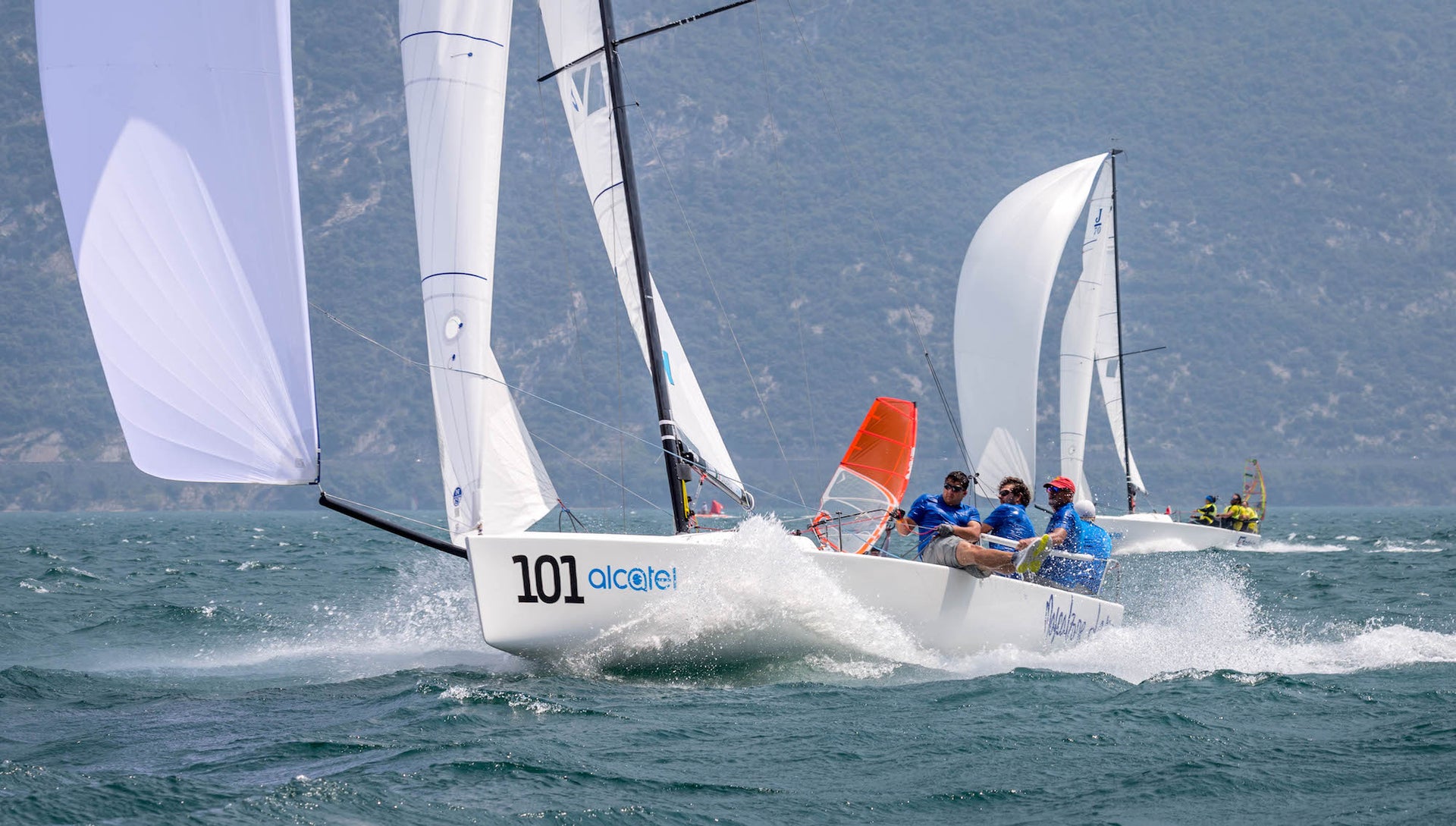
SPEED READING: FIVE DOWNWIND MODES
FIVE DOWNWIND MODES
Simplified To Optimize Your Downwind Performance
© Mauro Melandri / Zerogradinord
The J/70 is a relatively new class and the learning curve is still very steep for all involved. Here are a few basic tips that can help when trying to optimize performance downwind.
PLANING
Crew Weight Aft. Keeping the bow out of the water and rudder in the water.
Backstay remains at 75% to 100% on. This will make keep the mast back, the luff of the spin tight and the draft of the spin forward.
Traveler down all the way. This will make each pump more effective as the traveler will pull the boom both in and down each time you pump.
Play Vang. When the boat is ripping and under control, try a bit more vang to power up the main; you will go the same speed at a lower angle. Remember to ease some off before next jibe!
Consistent Heel. Keep the angle consistent – this will keep the helm loading consistent to help the helmsman find the fastest apparent wind angles.
MARGINAL/LAZY PLANING
Crew extremely active with fore and aft weight. Keep weight forward until boat starts to surf down waves and bow wants to crash into next wave, then move weight back quickly, turn bow up and move weight forward again to catch the next wave.
Drive boat with side-to-side weight. Move weight in slightly to help the boat turn up and power up in order to maintain the plane. Full hike in puffs to turn down and flatten the boat and accelerate.
Backstay 50%-75% on. This will keep the luff of spin tight enough for planing with apparent wind forward, but still keep a powerful shape for both main and spin.
Vang on. For max power when pumping, keep the main leech firm and under control by tightening the vang.
Consistent heel. Same as above.
See also: Tim Healy’s tips for marginal planing conditions in flat water
DISPLACEMENT SOAK-MODE
Weight forward. Keep knuckle of bow in water and transom just in water. You want maximum water line with minimum drag.
Drive boat with side to side weight. Use weight to steer the boat and use as little rudder (which creates drag) as possible.
Backstay off. This allows the mast to move forward as much as possible, making the luff of the spinnaker rounder and deeper, which is better as the apparent wind moves aft.
Play Vang. Ease vang to get good twist without inverting the compression battens. Tighten for jibes or if surfing conditions are present and pumping becomes legal.
Tack-up soak mode. This only works in over 9 knots or when the apparent is max aft. Letting a few inches off the tack line allows the spin to get deeper and rotate to weather more to maintain a lower course heading. If spin gets unstable, pull tack down and head up slightly.
DISPLACEMENT WING-ON-WING
Weight forward. Same as above
Maintain consistent weather heel need more as breeze gets lighter. Weather heel helps the spin stay full and stable.
Play Vang. Vang on in jibes to pop battens. Vang on also helps to keep rocking to a minimum.
Backstay off. Same as above
Watch your masthead fly. The wind should be coming from dead astern or slightly from the weather stern quarter. Sailing by the lee only creates disturbed air for the spin interfering with the air coming off the main. Trimer and tactician should direct driver by saying “turn right” or “turn left” not “up” or “down”
Vang on for maneuvers. To help pop the compression battens when it comes time to jibe.
DISPLACEMENT VMG-MODE
Weight forward. Same as above.
Maintain slight leeward heel. This will help keep the spinnaker full and air flow attached. In puffs slightly flatten the boat and turn down. In lulls slightly more heel to turn up to keep spin full and speed up.
Vang off. Let main leech twist- vang on slightly in chop to control flapping. Pull the vang on for jibes to help battens pop over.
Backstay off. Only pull on to control rig from becoming unstable in chop.
READ MORE
READ MORE

A RACE TO REMEMBER
A RACE TO REMEMBER
Susan Hood Trophy Race 2018
The weather gods aligned for the 2018 Susan Hood Trophy Race presented by DriveHG at Port Credit Yacht Club this past weekend. After a short period of rain before the Skipper's Meeting, the sun came out and the wind picked up, creating one of the most beautiful starts racers have seen in the past couple of years. As exclusive sailmaker sponsor of the #SusanHoodTR and the Lake Ontario 300/600, the team from North Sails Toronto were onsite assisting racers with last minute prep including onsite repair, drop-offs and tuning. Local North Sails expert, Hugh Beaton, was onboard Afterburn, a Soto 40 out of Port Credit Yacht Club, skippered by Craig Pirie and Darren Gornall. The crew tested out their new 3Di RAW Square Top Mainsail and A2 Asymmetric Airx throughout the race; finishing on June 2 at 5:43 am with a corrected time of 12:00:01.
Sailing the Soto 40 Afterburn in the Susan Hood was a real pleasure. She lived up to her billing as a downwind flyer, hitting 15-16 knots pretty easily during the first half of the leg to Niagara. We started with the Masthead Code 0, and then peeled to the A2 about 90 minutes into the race as the wind swung aft. True wind speed 17-18 and a true wind angle of 145 is a great combination for this boat. - Hugh Beaton, North Sails
Bryan Sim's took his new Perry 57, Suspect, out for her first race during the Hood, which was complete with a new inventory of North Sails, delivered earlier in the week by Hugh Beaton. The new inventory included a 3Di ENDURANCE Full Batten Mainsail, 3Di Endurance Furling Genoa, A0 Asymmetric and A2 Asymmetric. North Sails expert Doug Folsetter and summer intern Kyann Rentzelos crewed with Bryan for the race.
Not only was it first racing this beautifully refitted Perry 57, it was the first time sailing it for the owner and crew. As the boat is true racer / cruiser that will be extensively cruised and occasionally raced, the sail inventory was kept simple with a 3Di ENDURANCE main and 135% furling jib along with an A0 on a furler and A2 in a snuffer for downwind work. Despite the limited inventory, these versatile sails worked wonderfully through the wind range that we experienced, and we never felt that we were missing the “perfect” sail for any given condition.
"We found the sail-plan extremely easy to handle which will bode well for the owner when they set off on extended cruises shorthanded. The easily driven hull was really in it’s element, close-reaching at 11-12 knots of boat speed in 20 knots TWS with a reefed main and full jib. The furling A0 could be the most versatile sail on the boat. It’s absolutely necessary for long distances such as the Susan Hood but will also be a fantastic sail for fast passage making. Every modern cruising boat should really have one." -Doug Folsetter, North Sails
Blast from Mimico Cruising Club took her new suit of sails for a whirl this weekend. Chris Bobyk, Owner, added a new 3Di RAW Mainsail and A2 Asymmetric to his collection for 2018. Bobyk was pleased with the sails performance and overall race saying, The 2018 Susan hood race was a thriller, with 18 knot winds and preferred port tack Spinnaker start to kick things off towards the first mark at Niagara. The thrill being some competitors started on starboard with majority on port- well that made things interesting especially with those on port with kites up or being hoisted- us for one. It was a great test for both our new 3DI North Main and A2 Asymmetrical kite. Both these new sails have proven their performance in design and construction early this season, most particularly in Blast’s enhanced speed performance during the Susan hood at different points of sail. In addition to enhanced speed performance the 3DI Main is one of the easiest main sails to get set with reduced adjustments for the trimmer- simplifying main trimming and allowing both helmsman and main trimmer to get into their respective grooves quicker in and out of tacks and upon establishing course. This new addition to Blasts sail inventory as a recommended addition by North has proven itself.
"The new A2 kite design was based on an analysis of the existing Kite inventory being more traditional asymmetrical in design- the new A2 with larger shoulders gets us to deeper downwind angles and with the strong winds behind our backs for the majority of leg 1 proved a considerable benefit in closer matching wind angles of the symmetrical kite boats. Overall could not be more pleased with these sails and the support from the Team at the North Toronto Loft", commented Chris Bobyk, Owner of Blast, First 10R
The Toronto team saw a number of new clients flying new sails for the season during the race including: Chris Bobyk, Beneteau 10R, Blast Craig Pirie & Darren Gornall, Soto 40, Afterburn Bryan Sim, Perry 57, Suspect Bruce Pierce, J122, Hooligan II Will French, Olson 911SE, Entourage William Morland, Beneteau 10R, Rum Kist Brian Mitchell, Quest 33, Areion For the complete results list from the race, see here.
READ MORE
READ MORE



